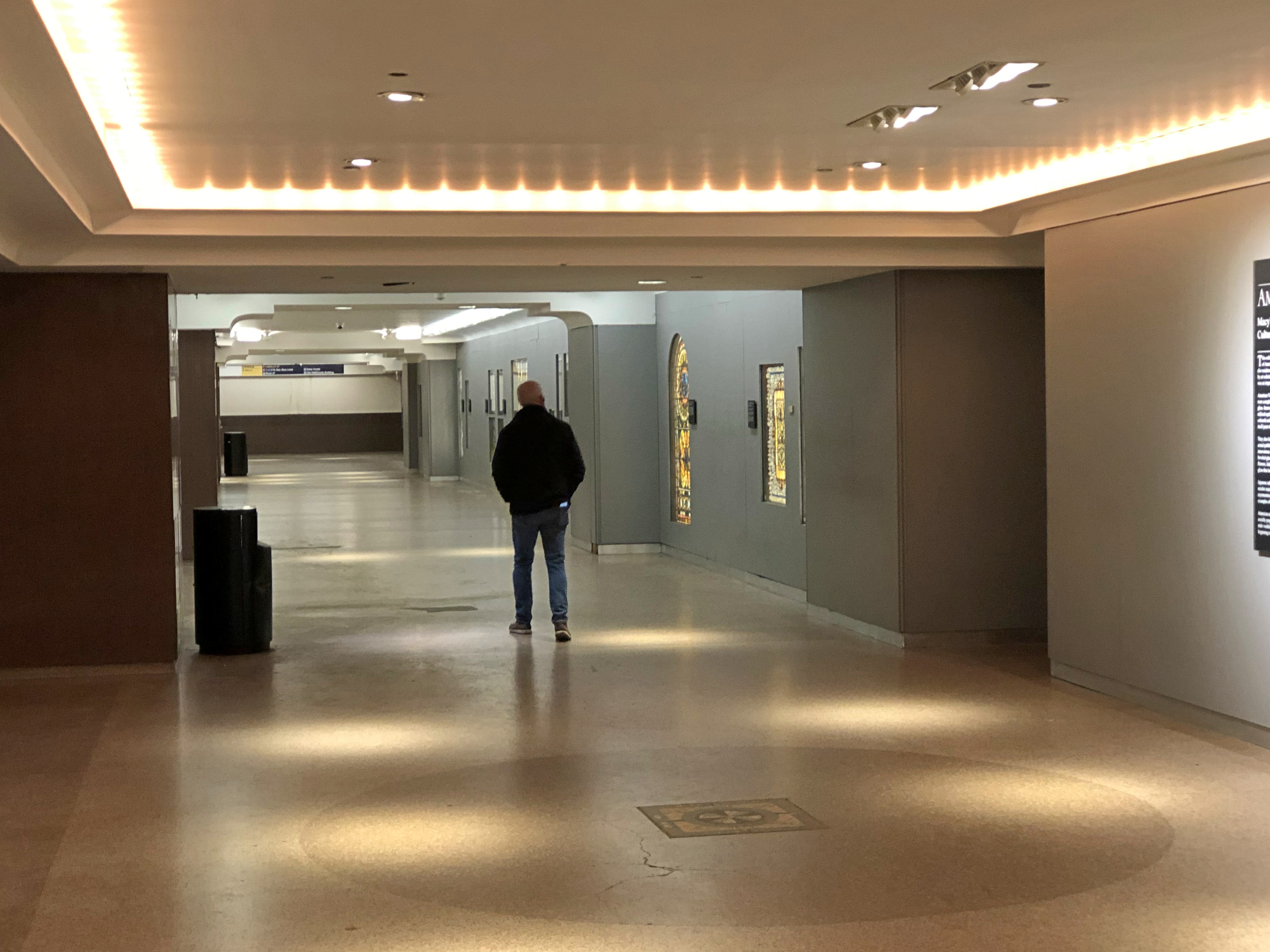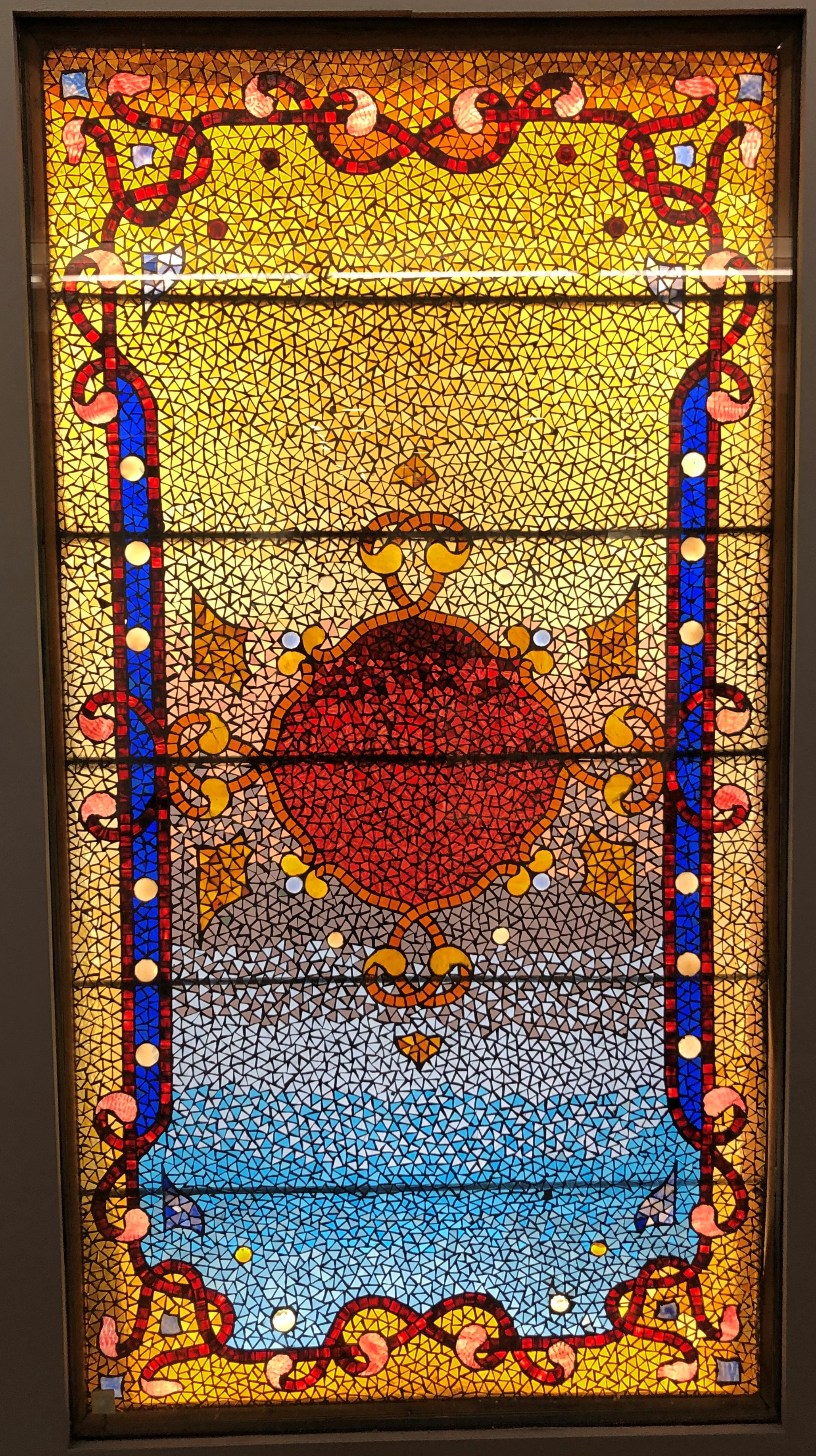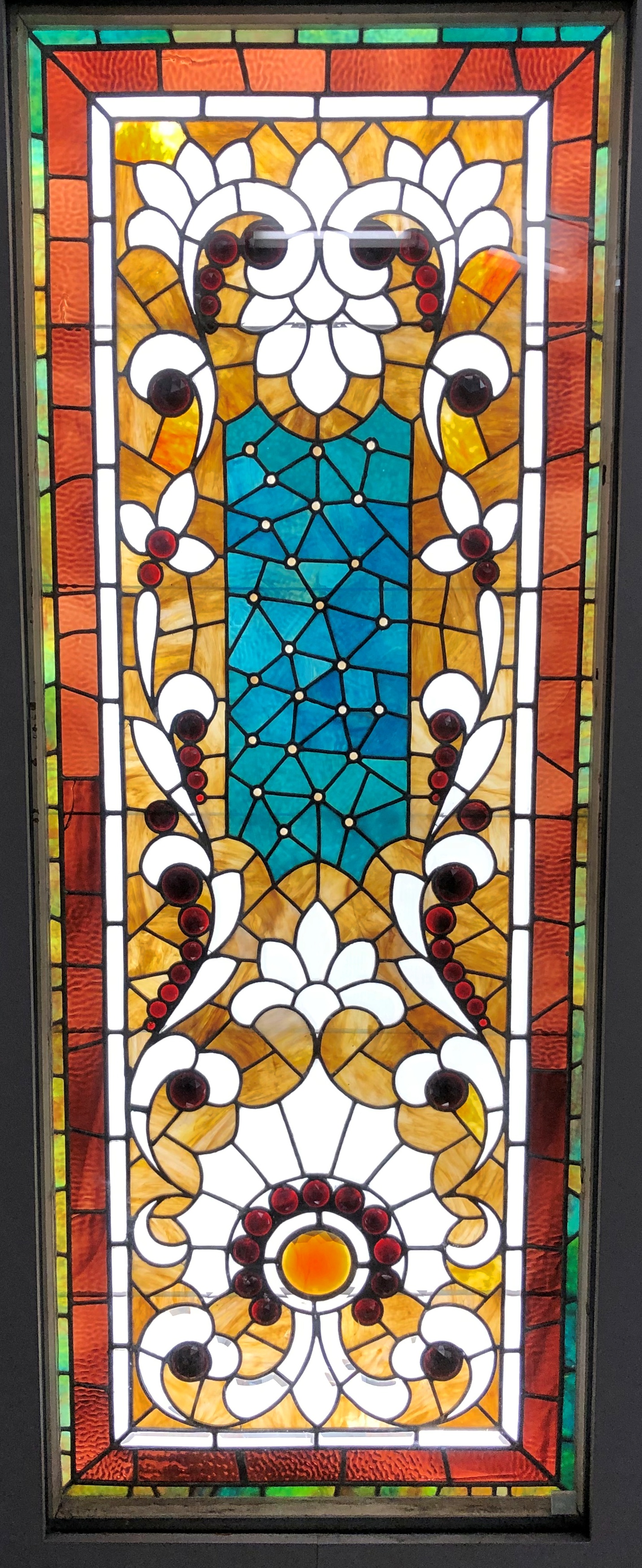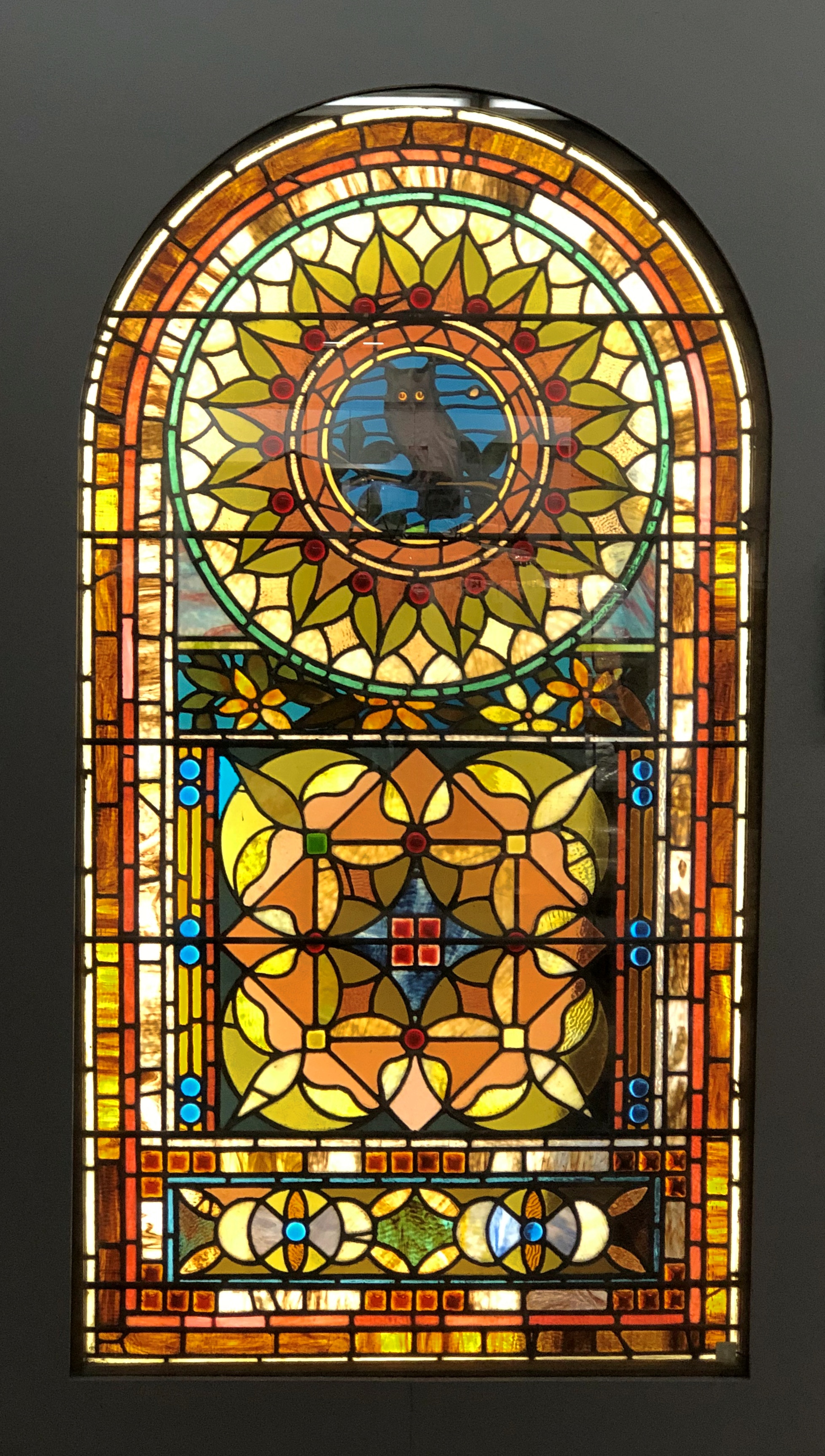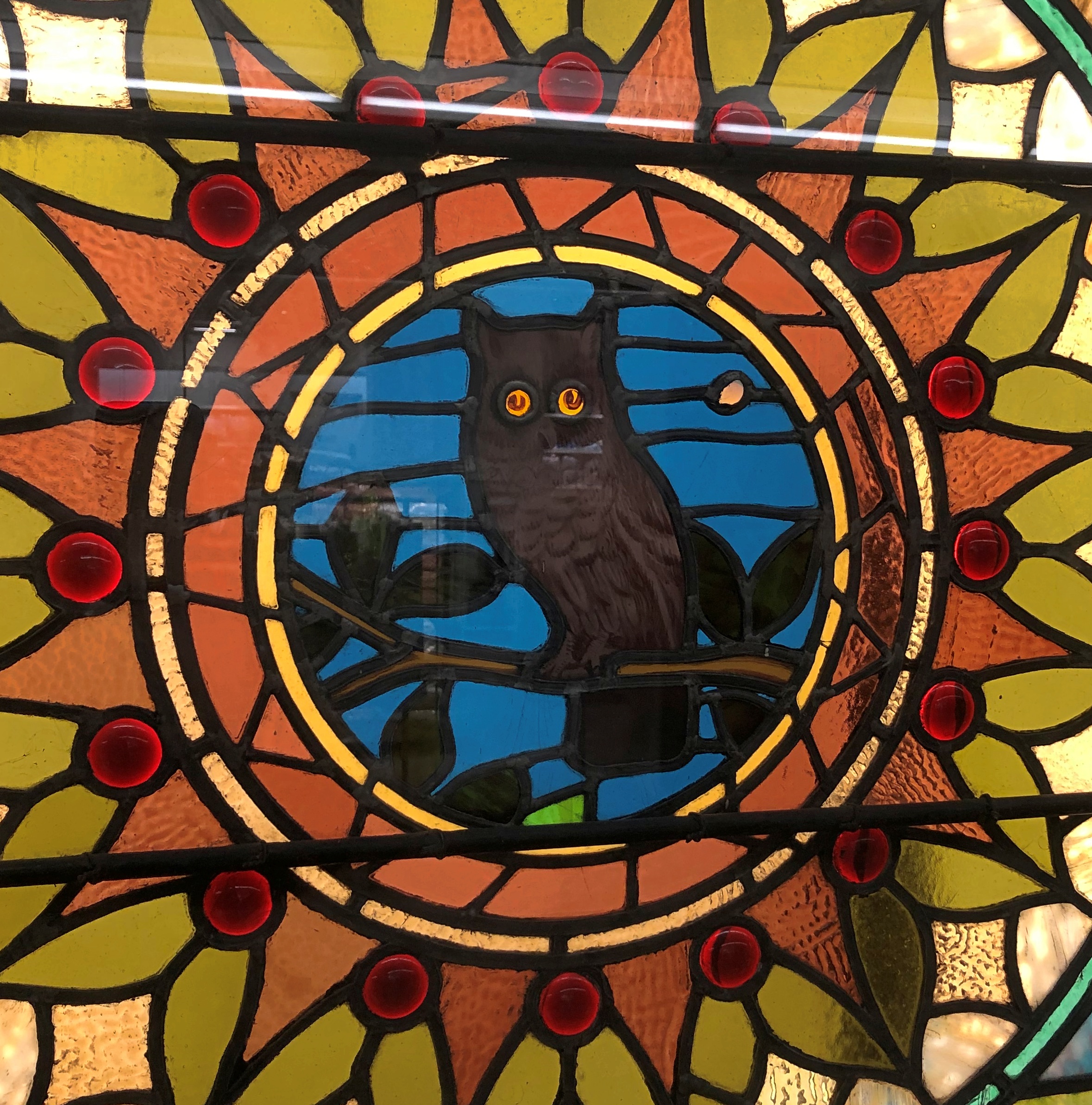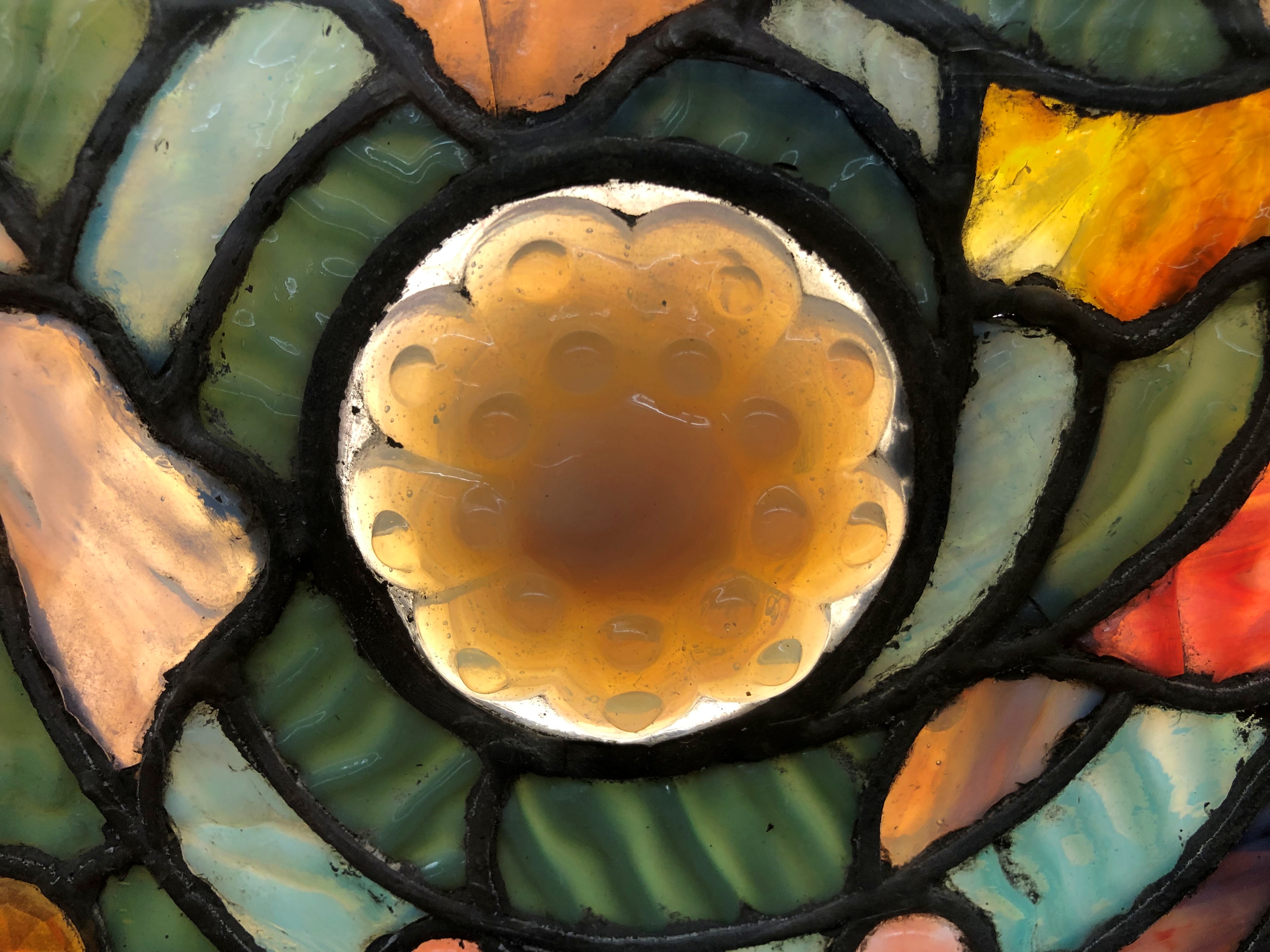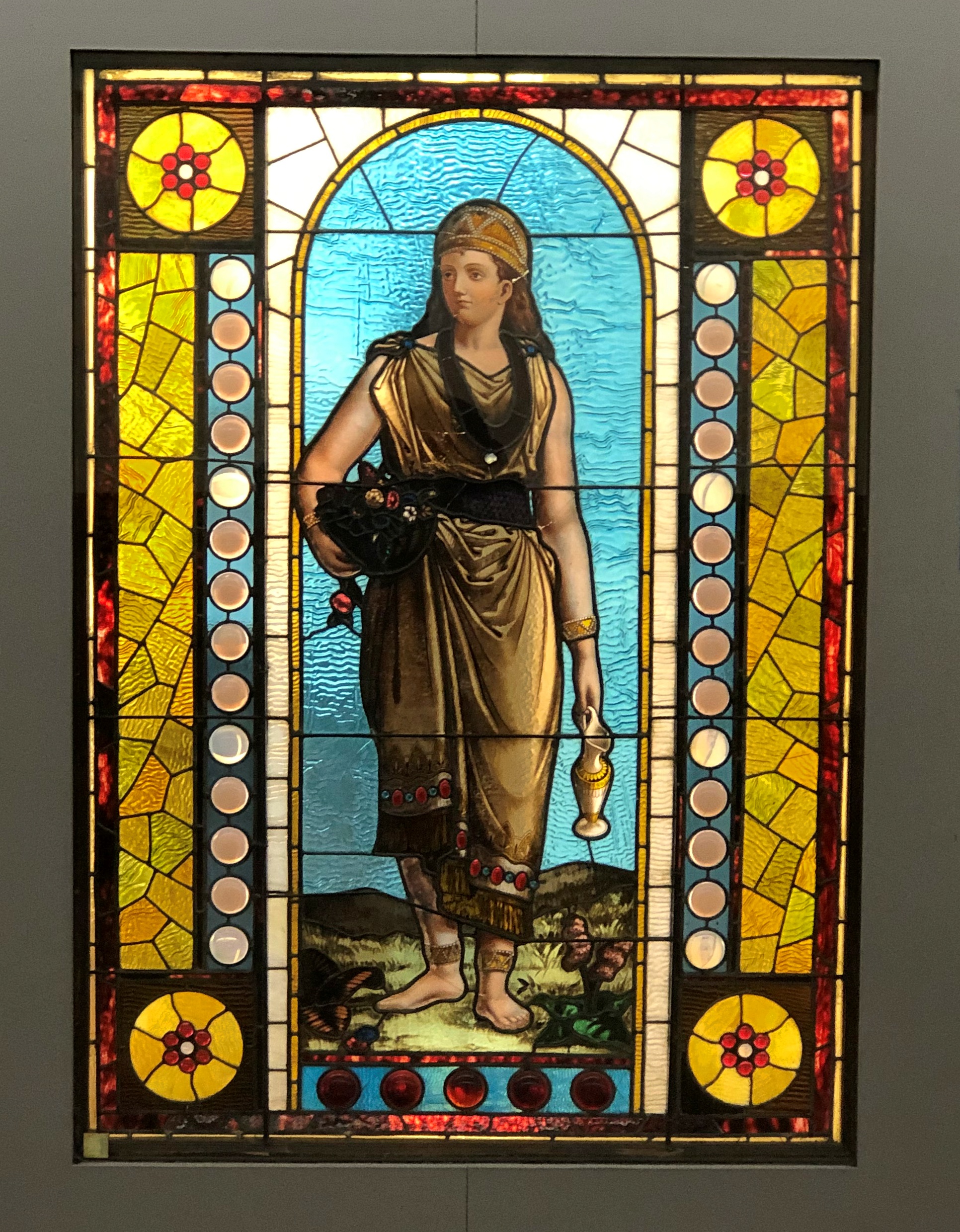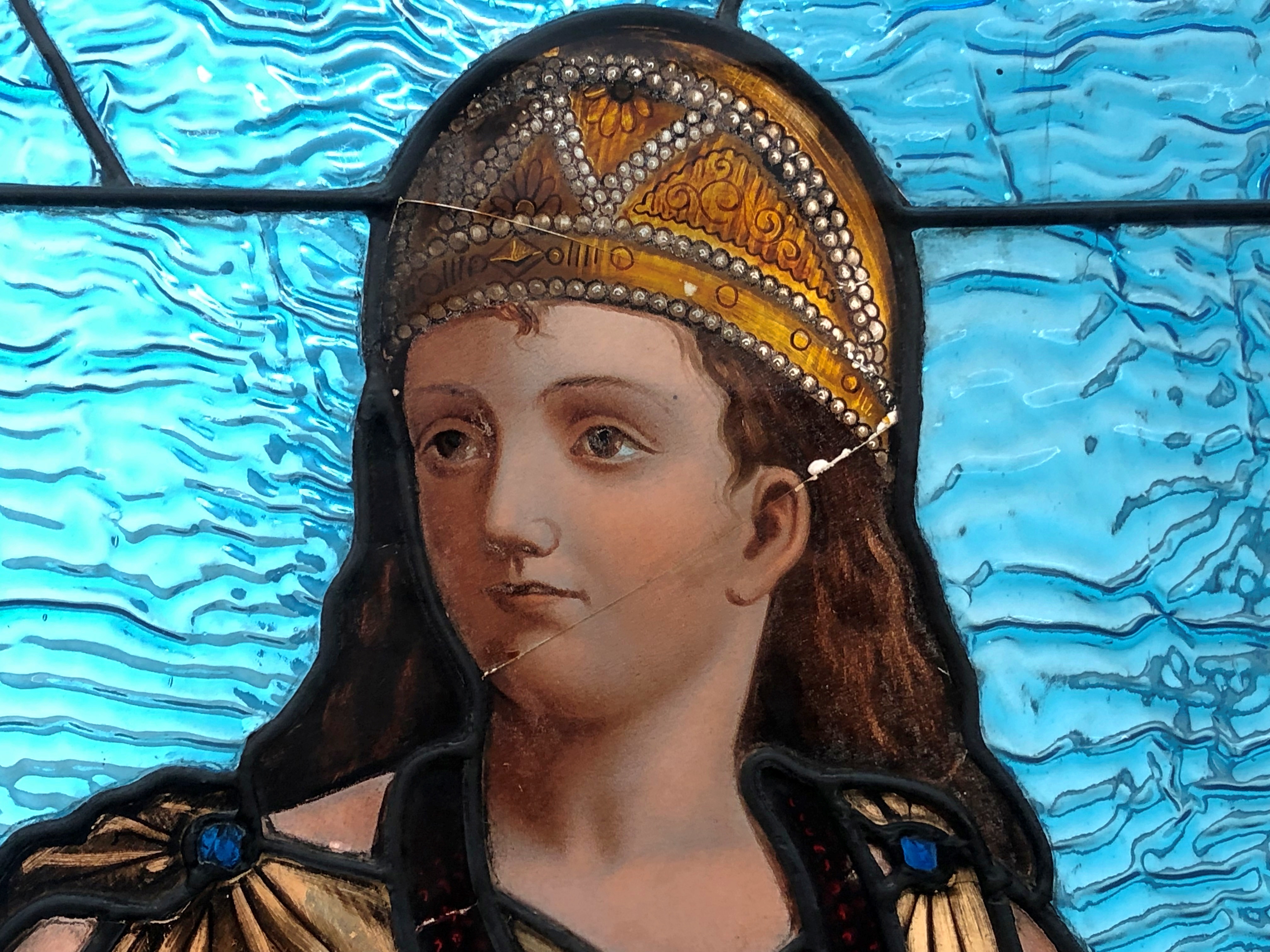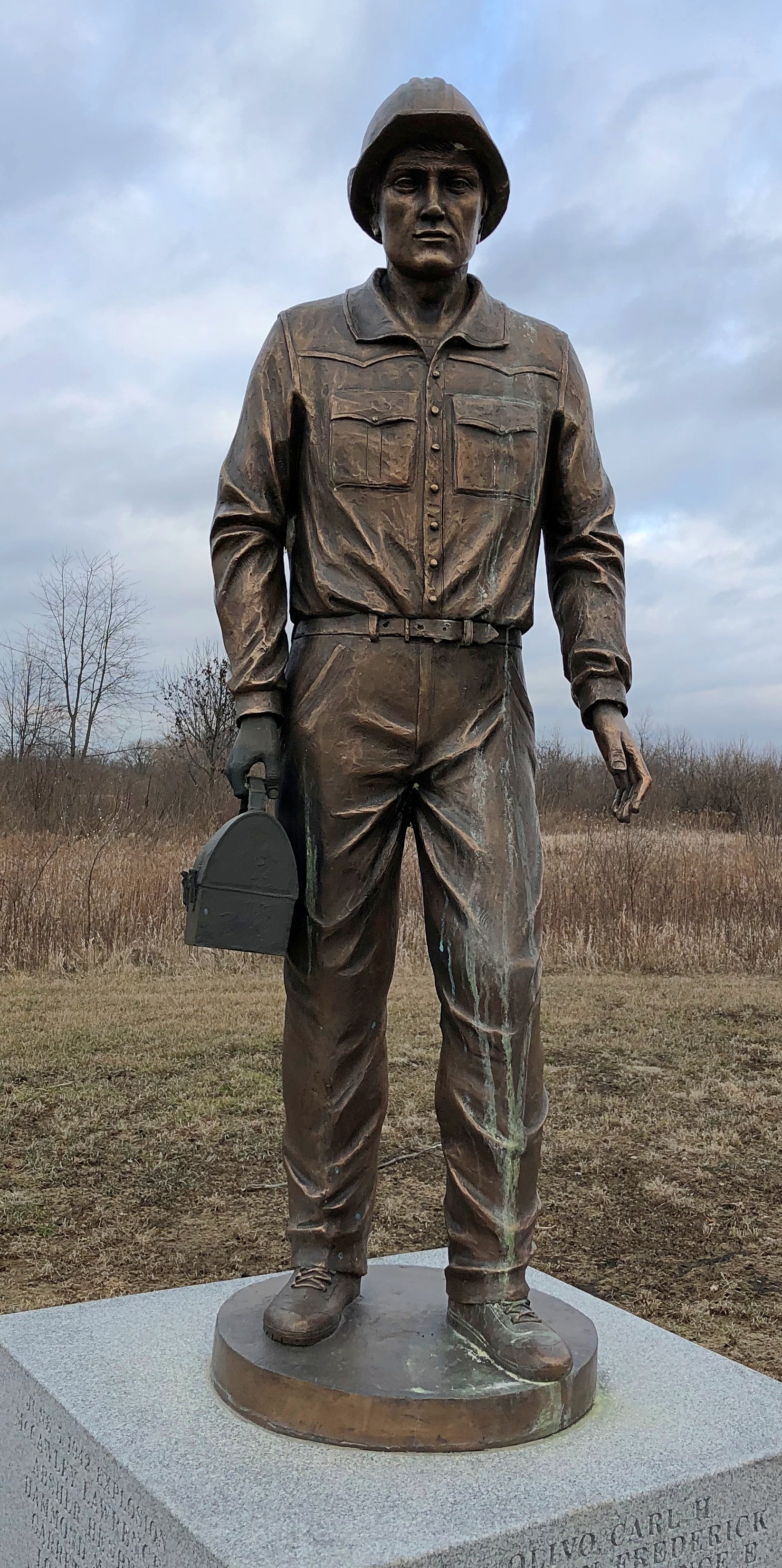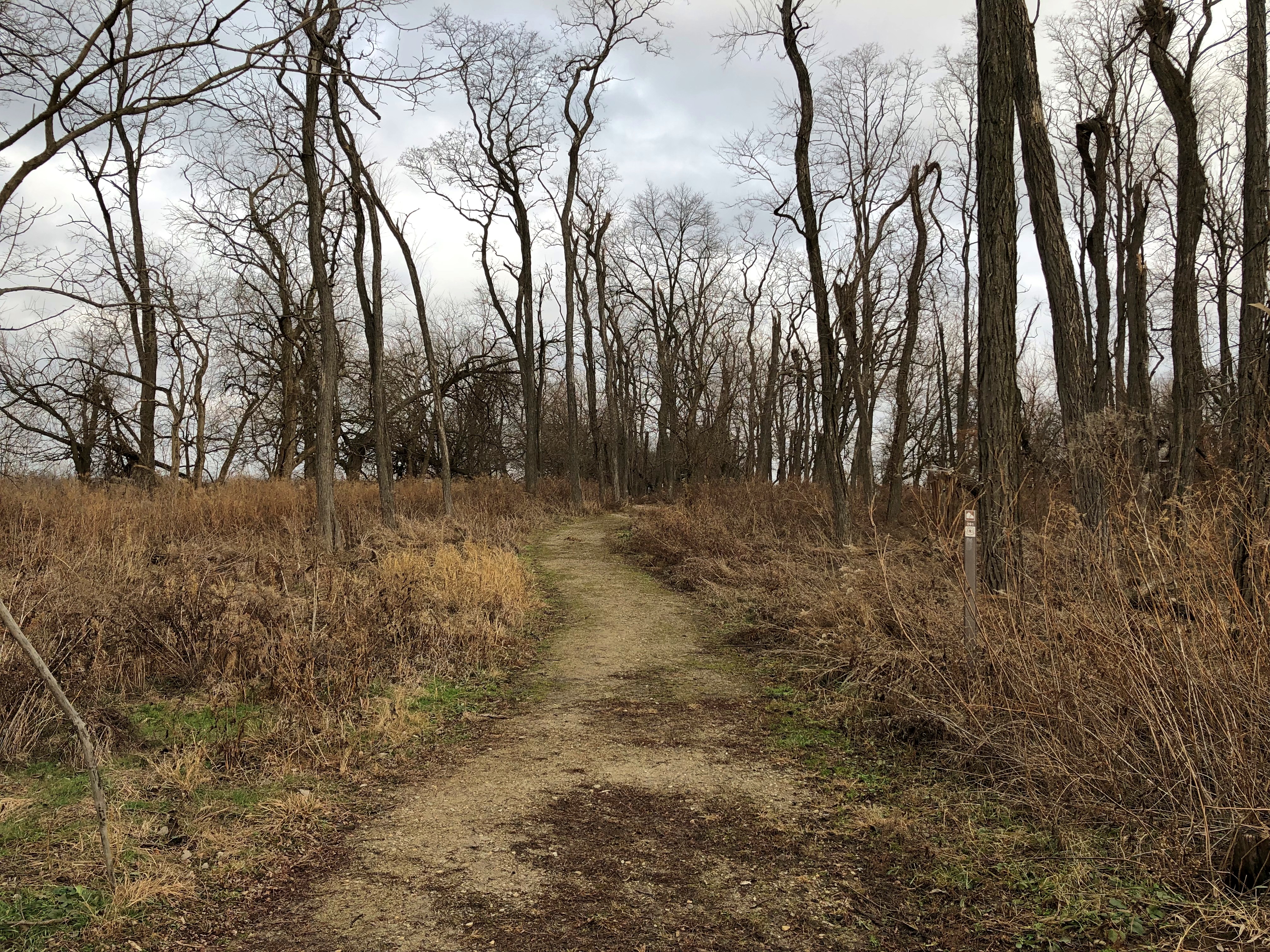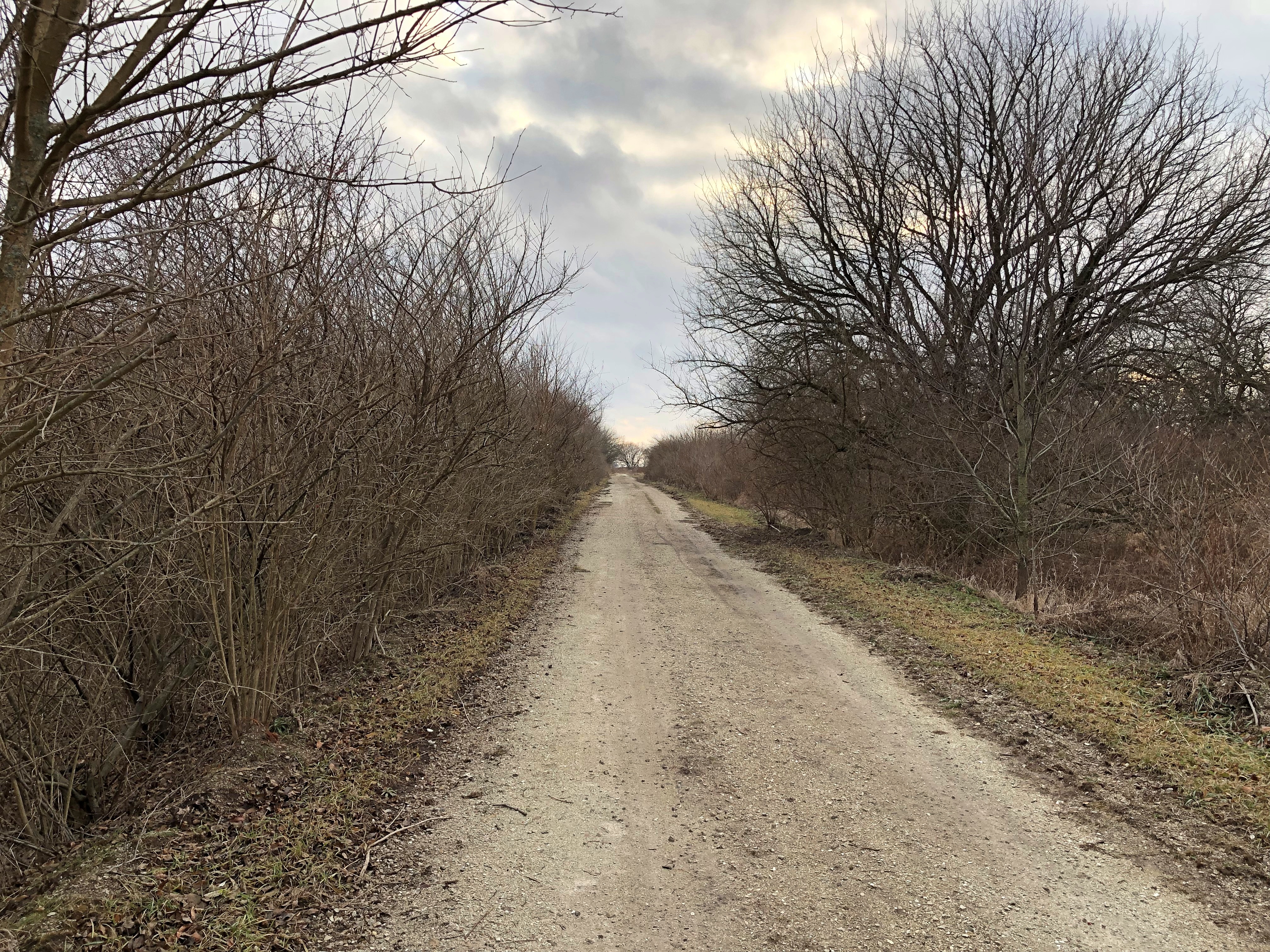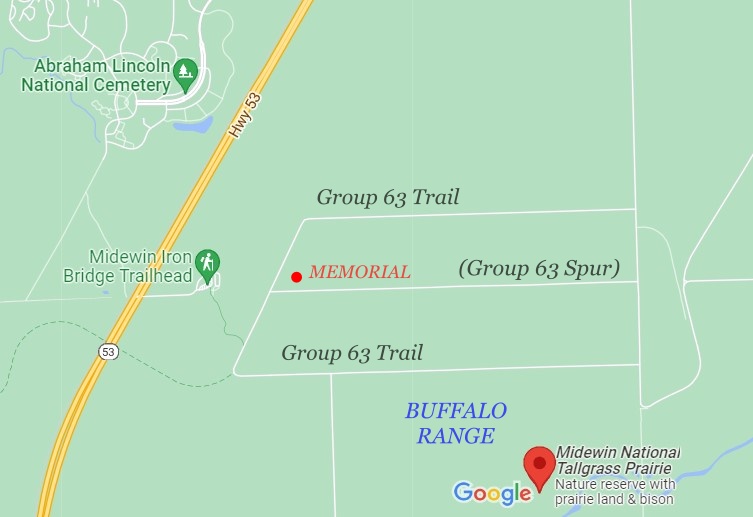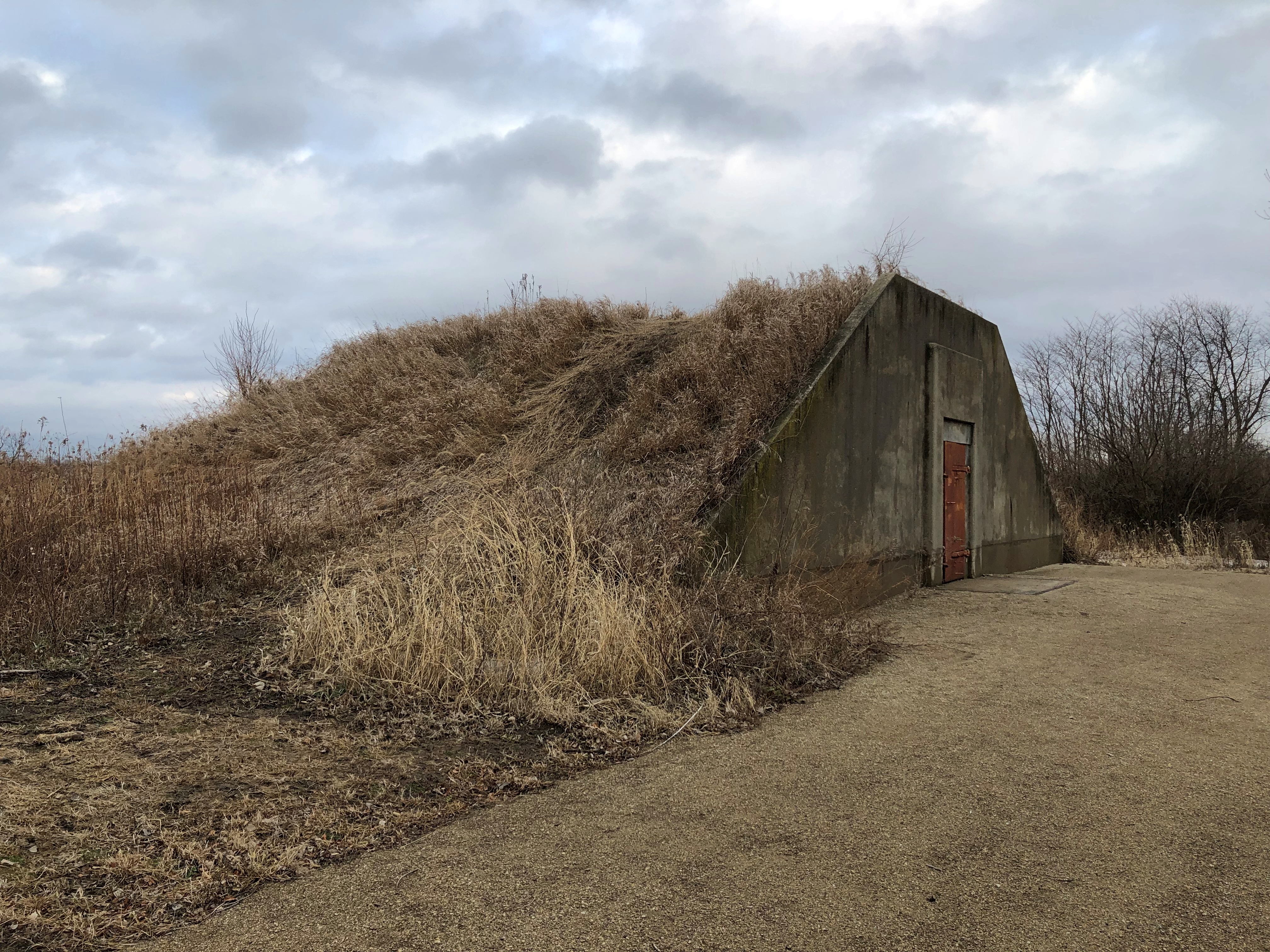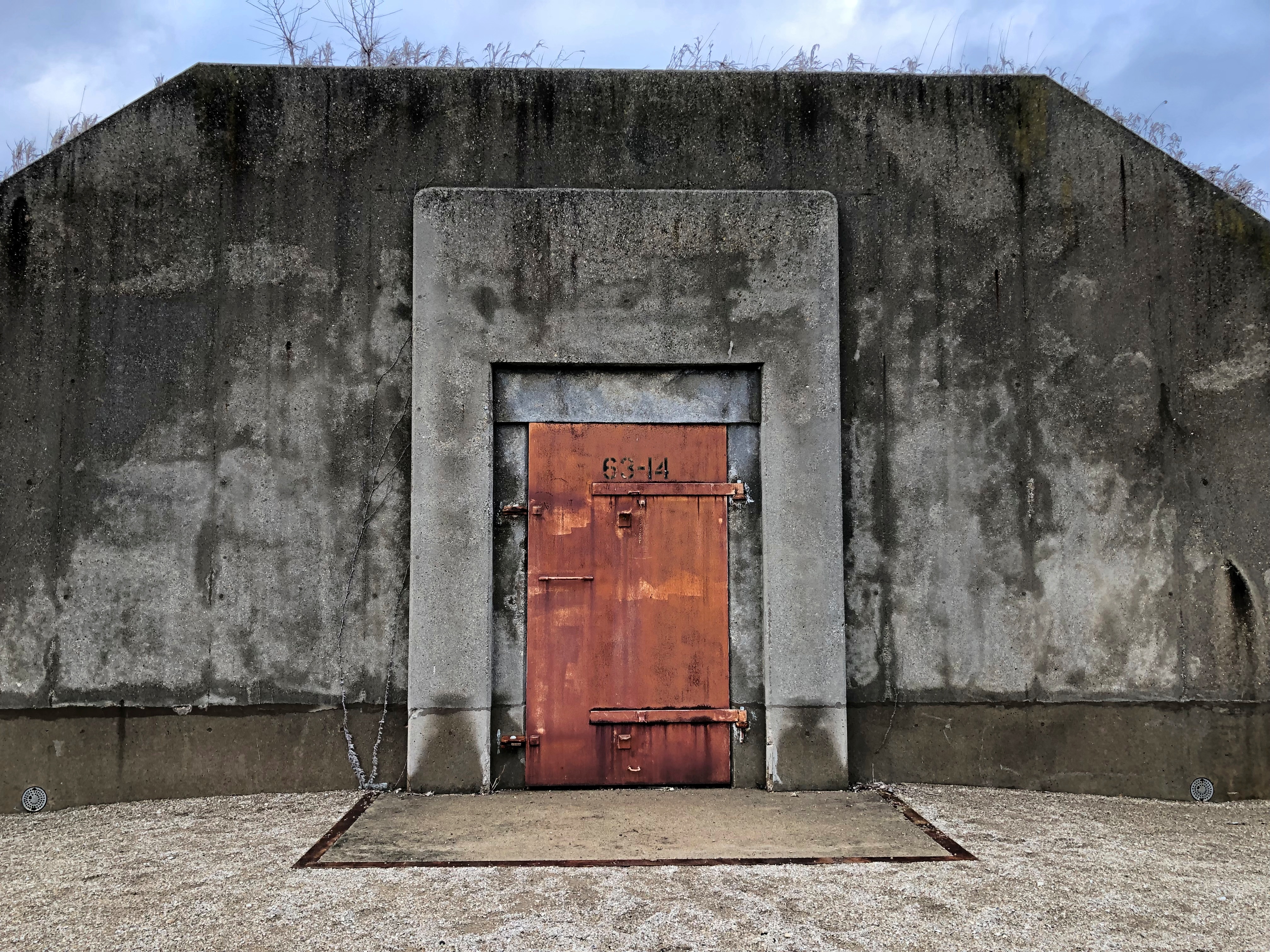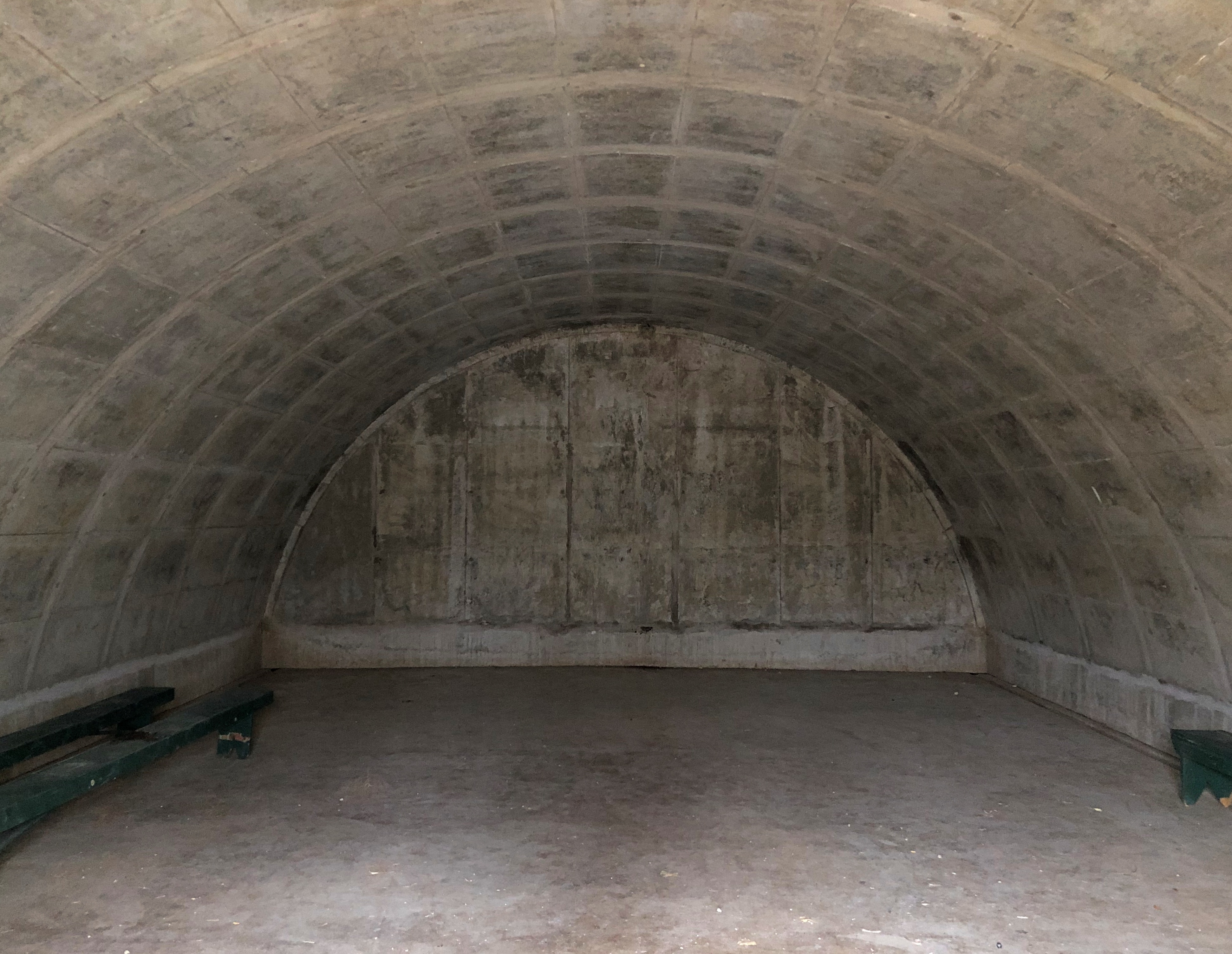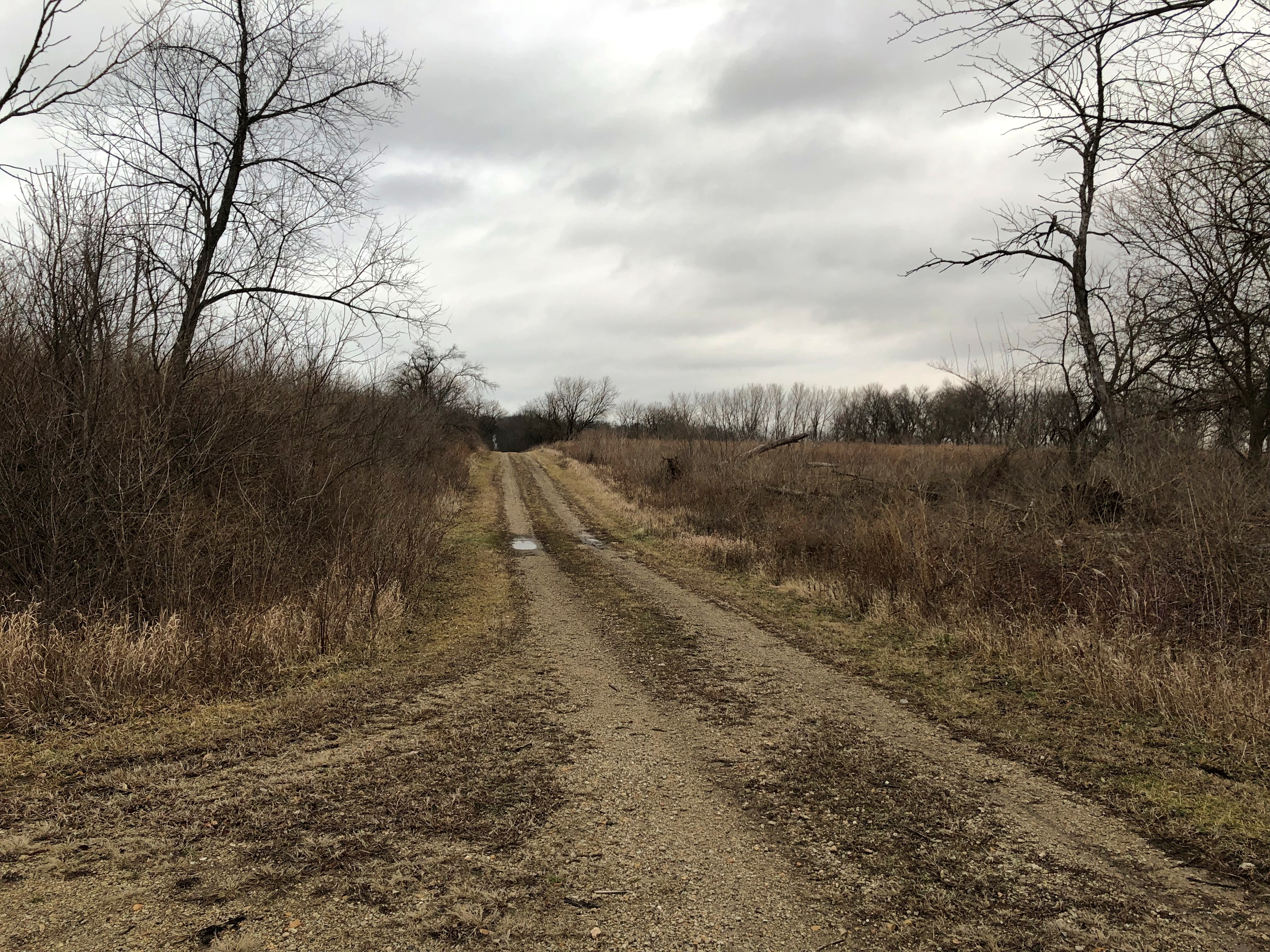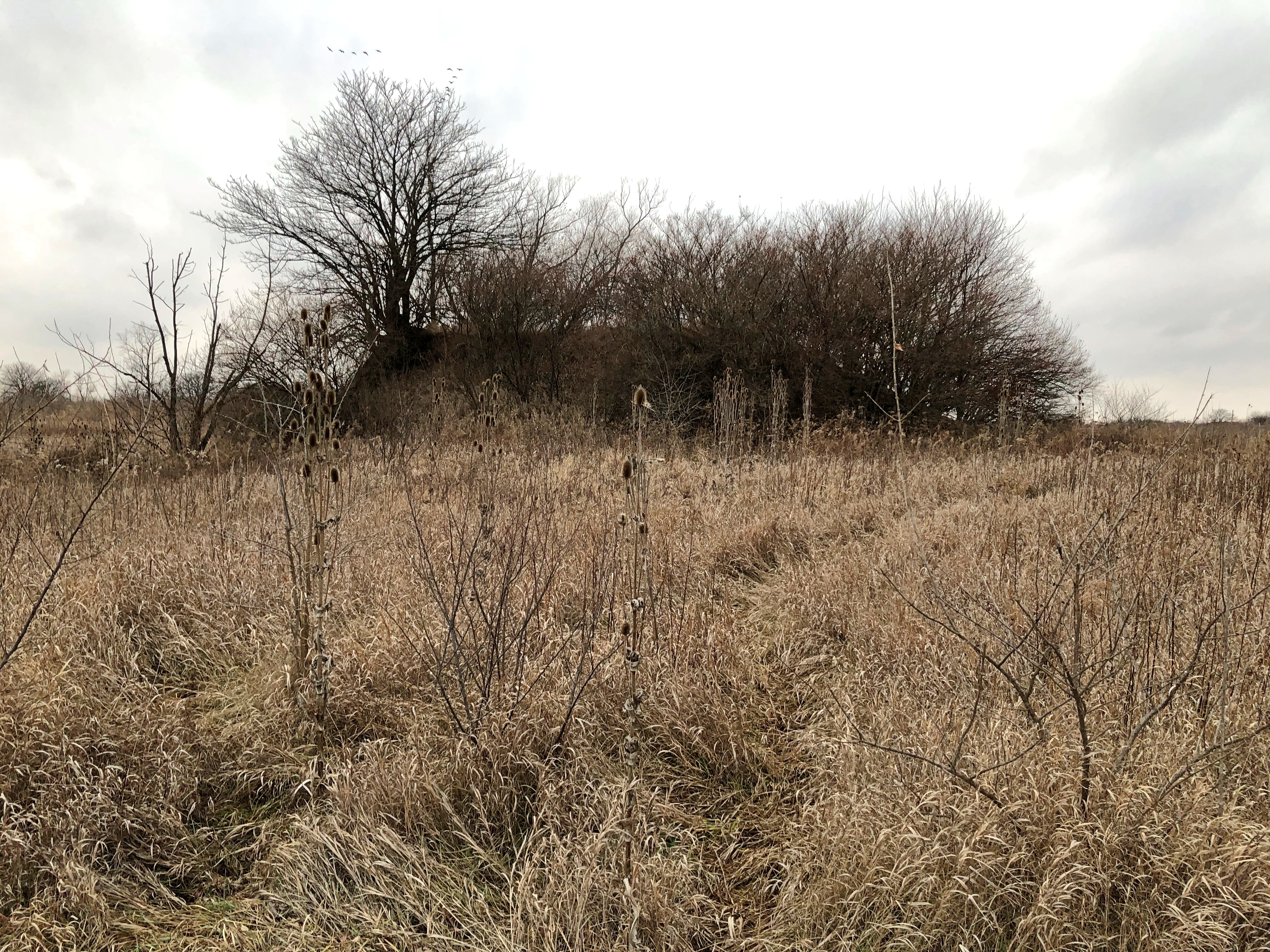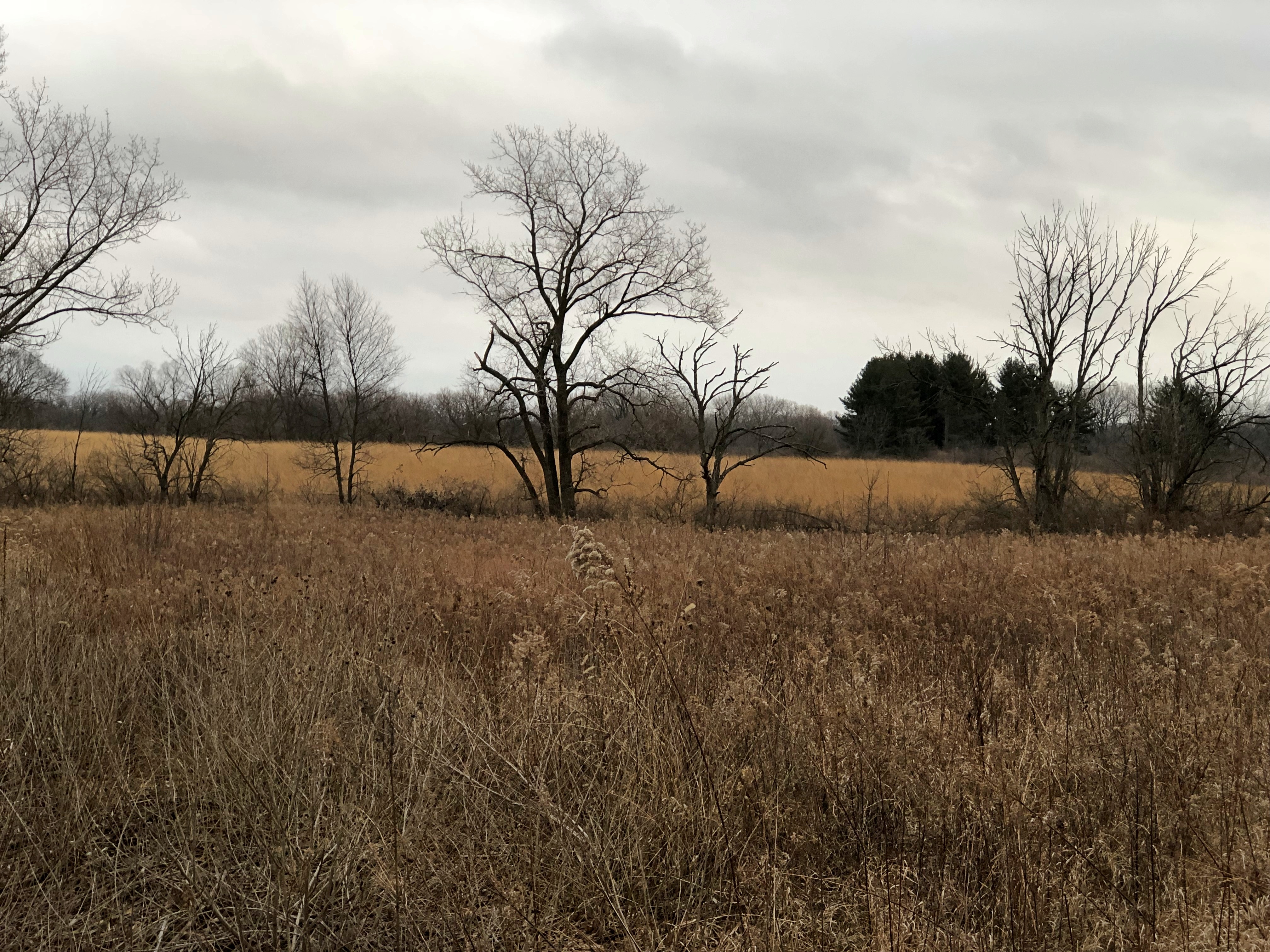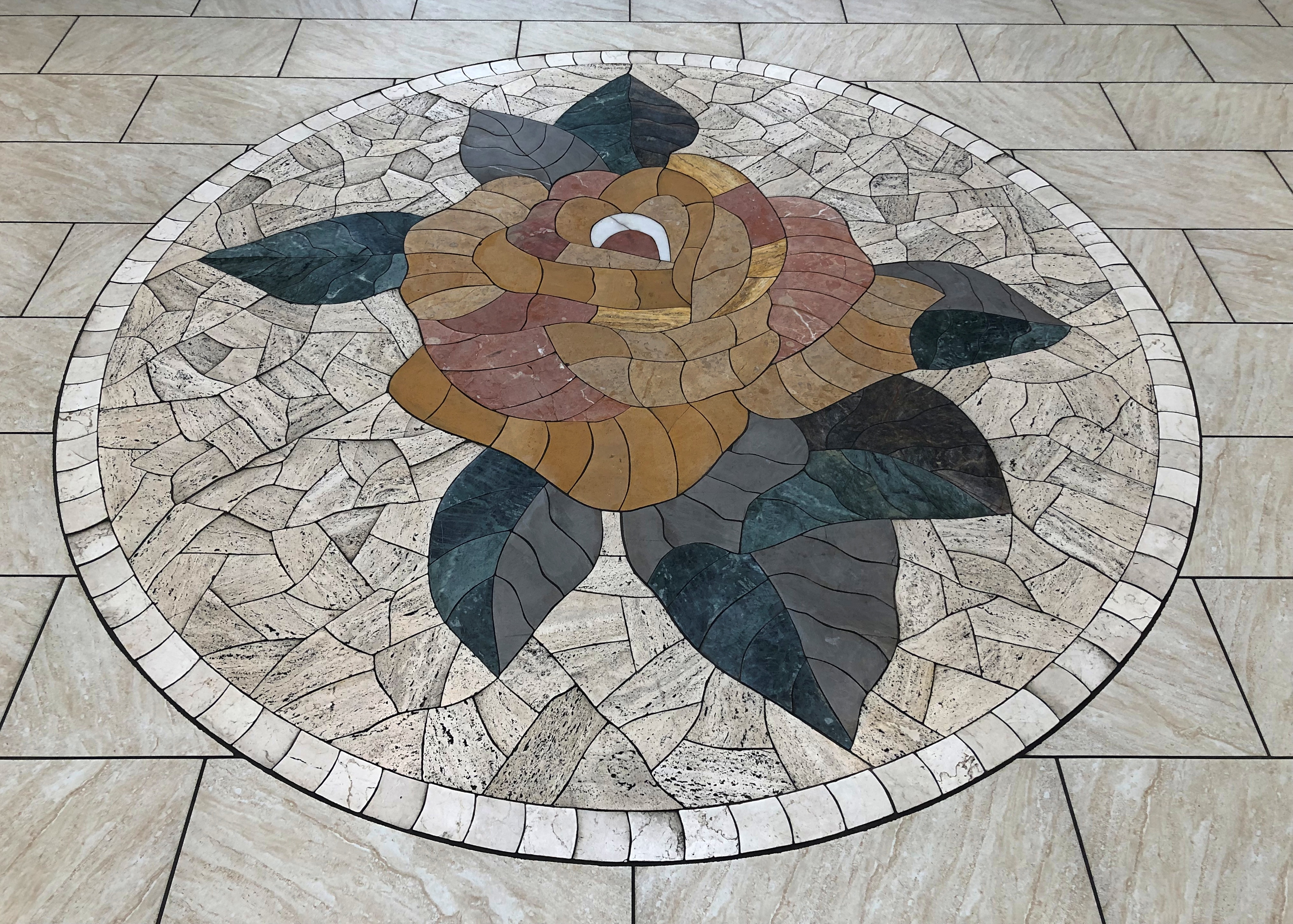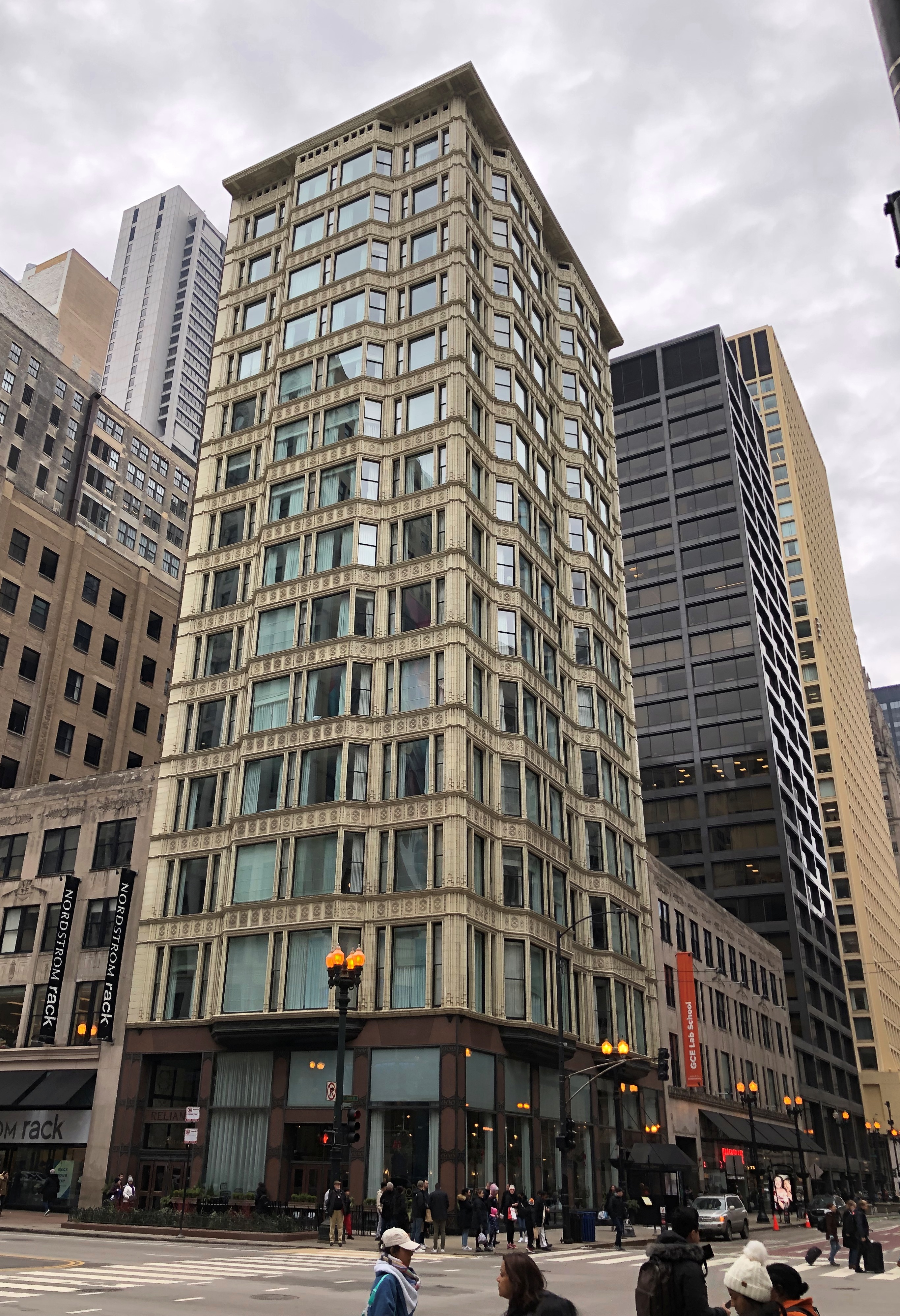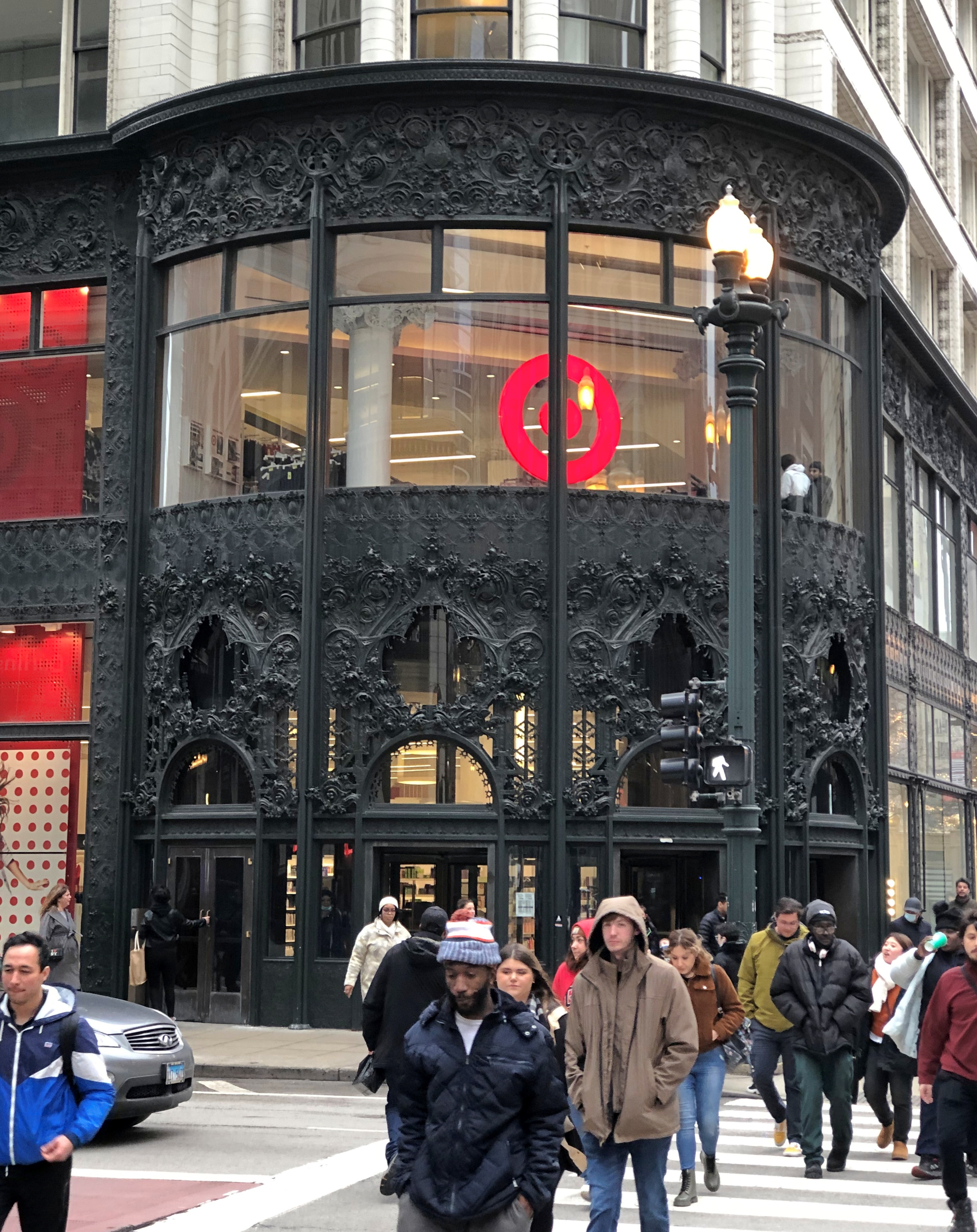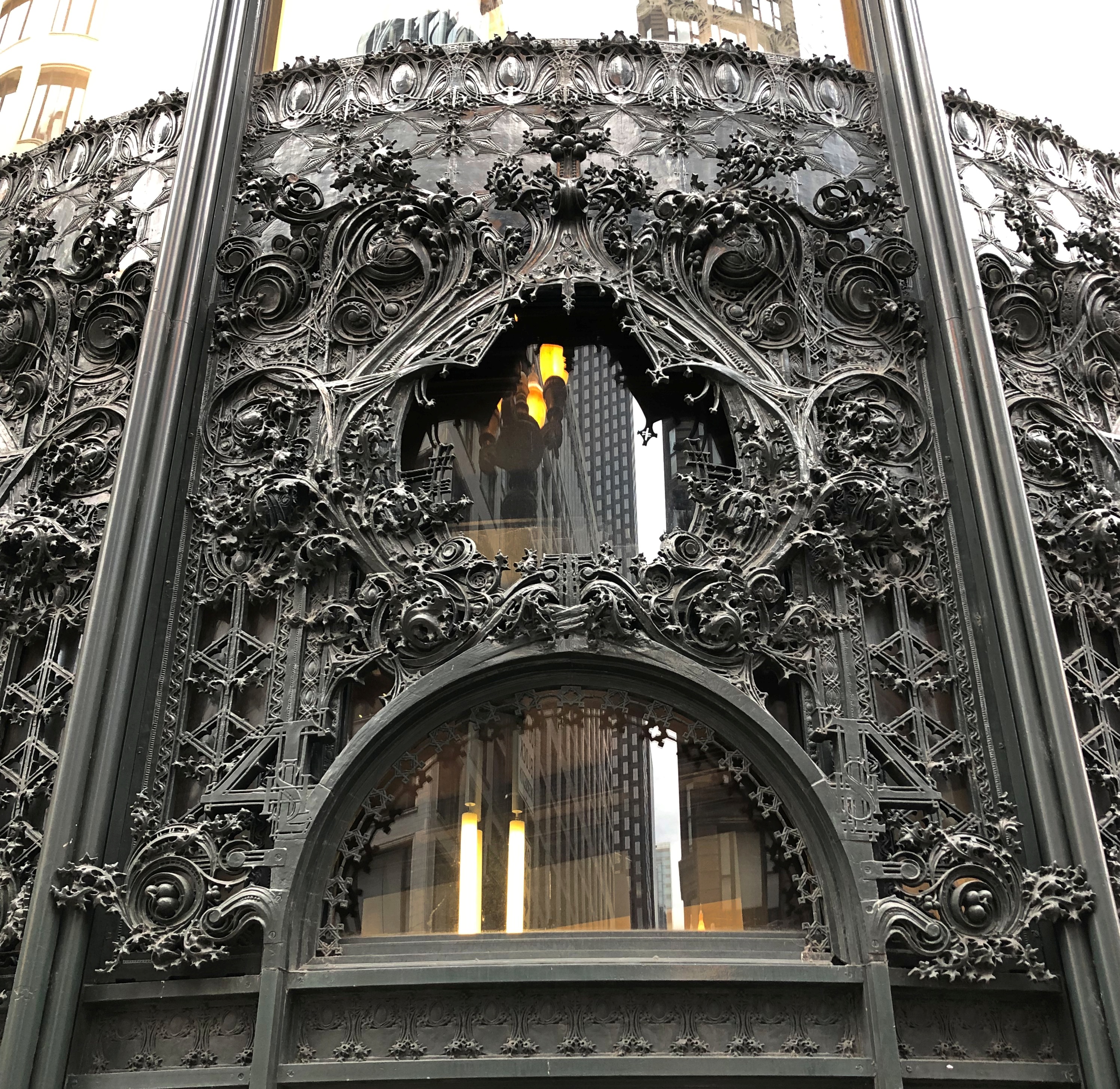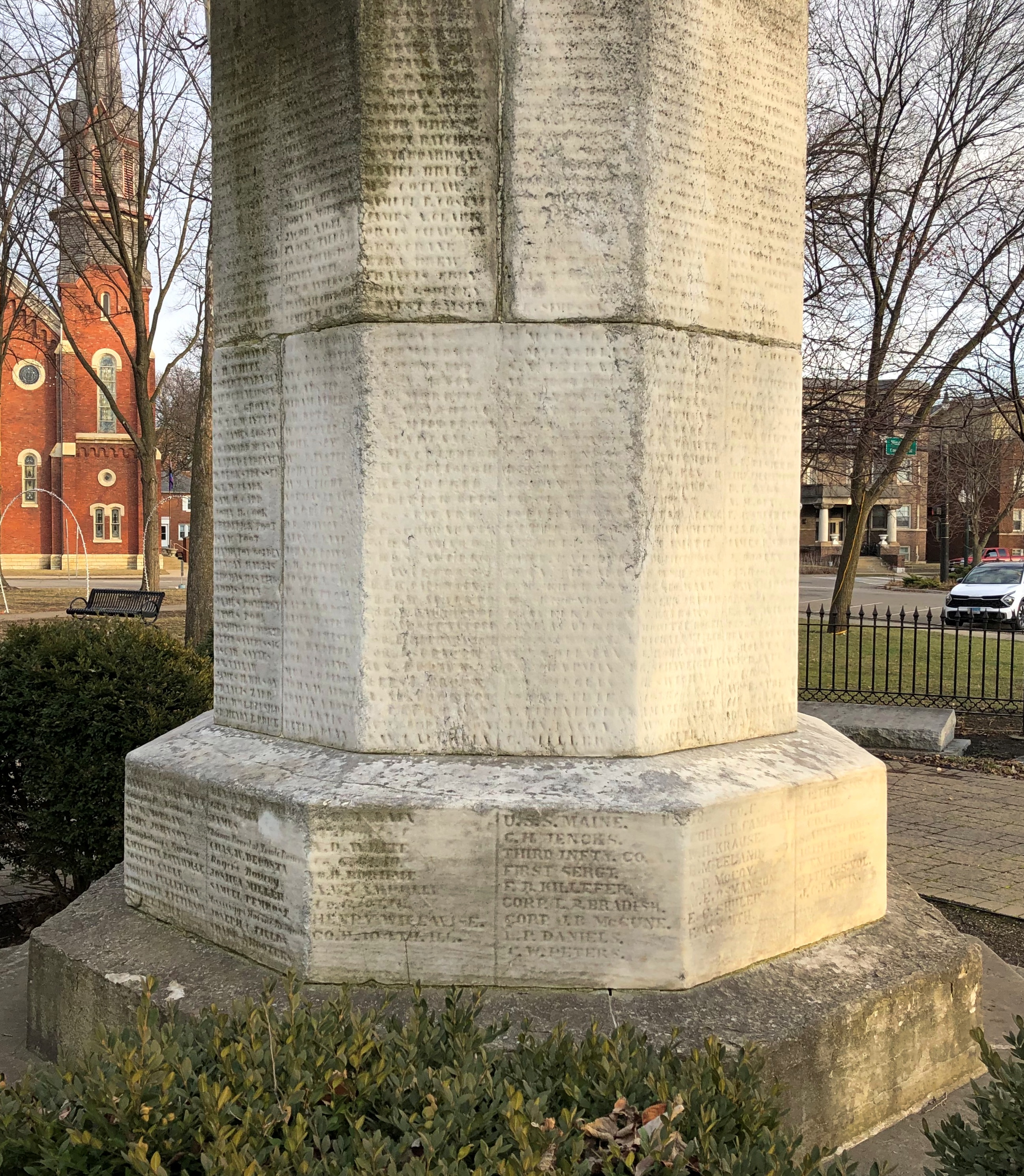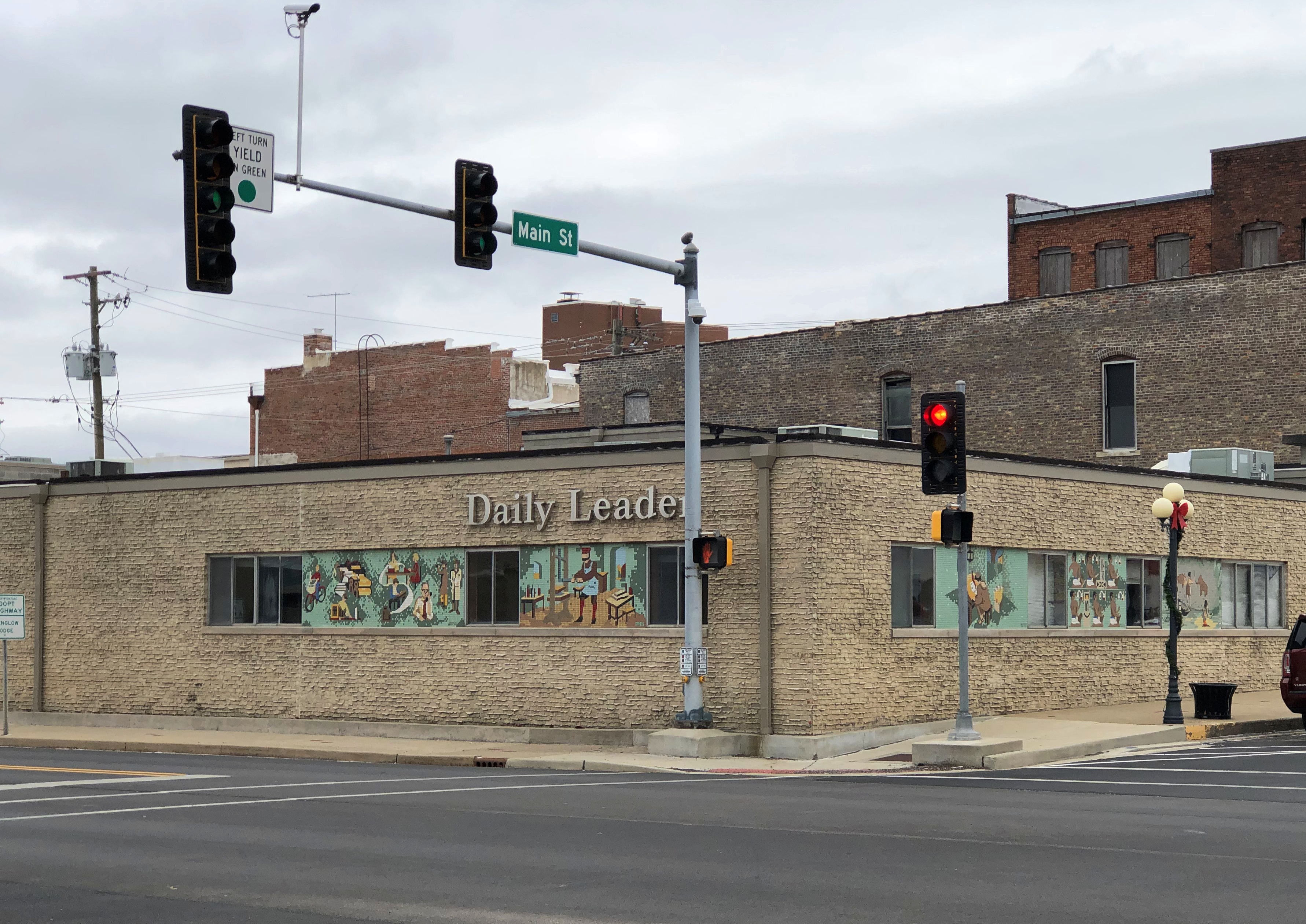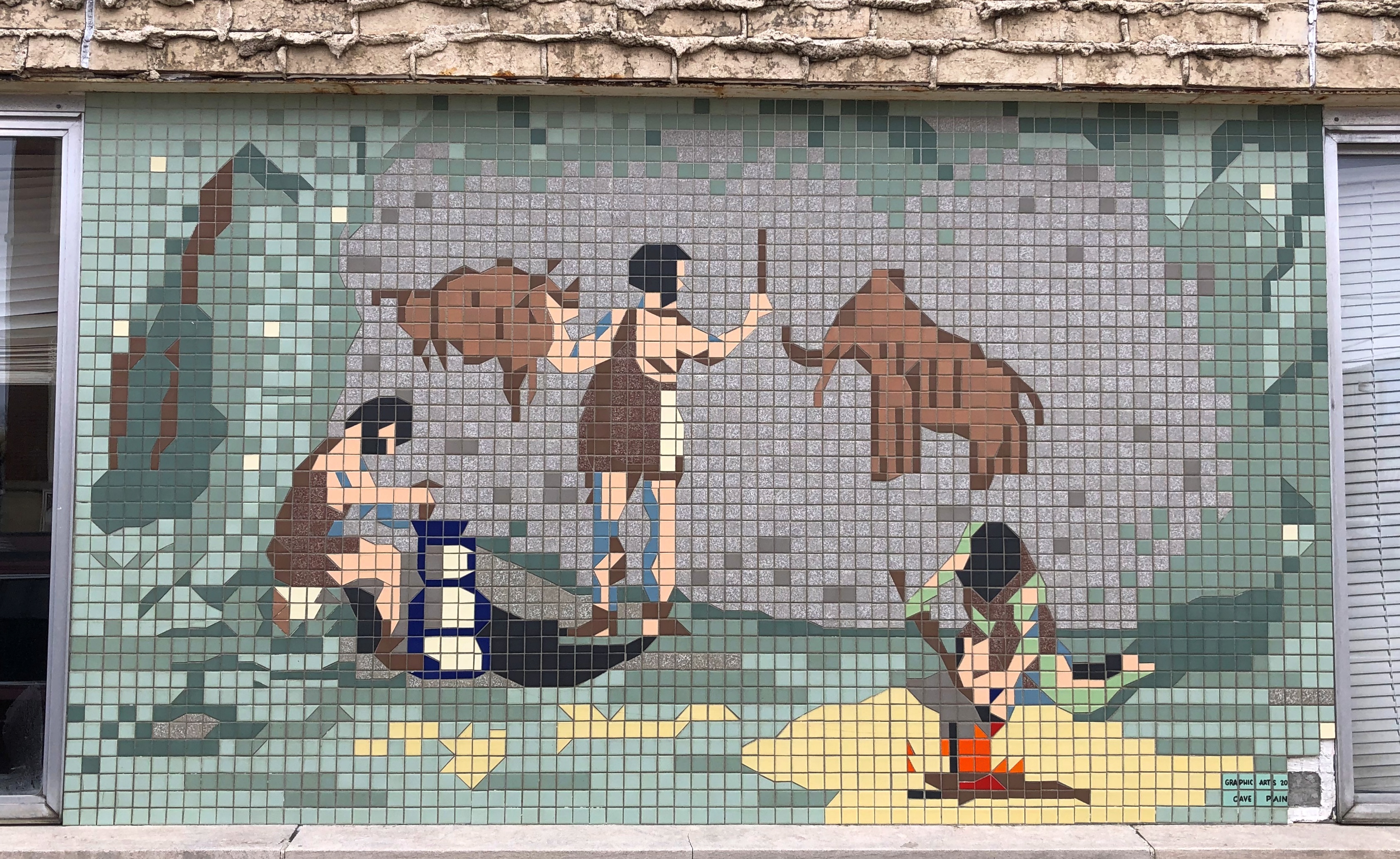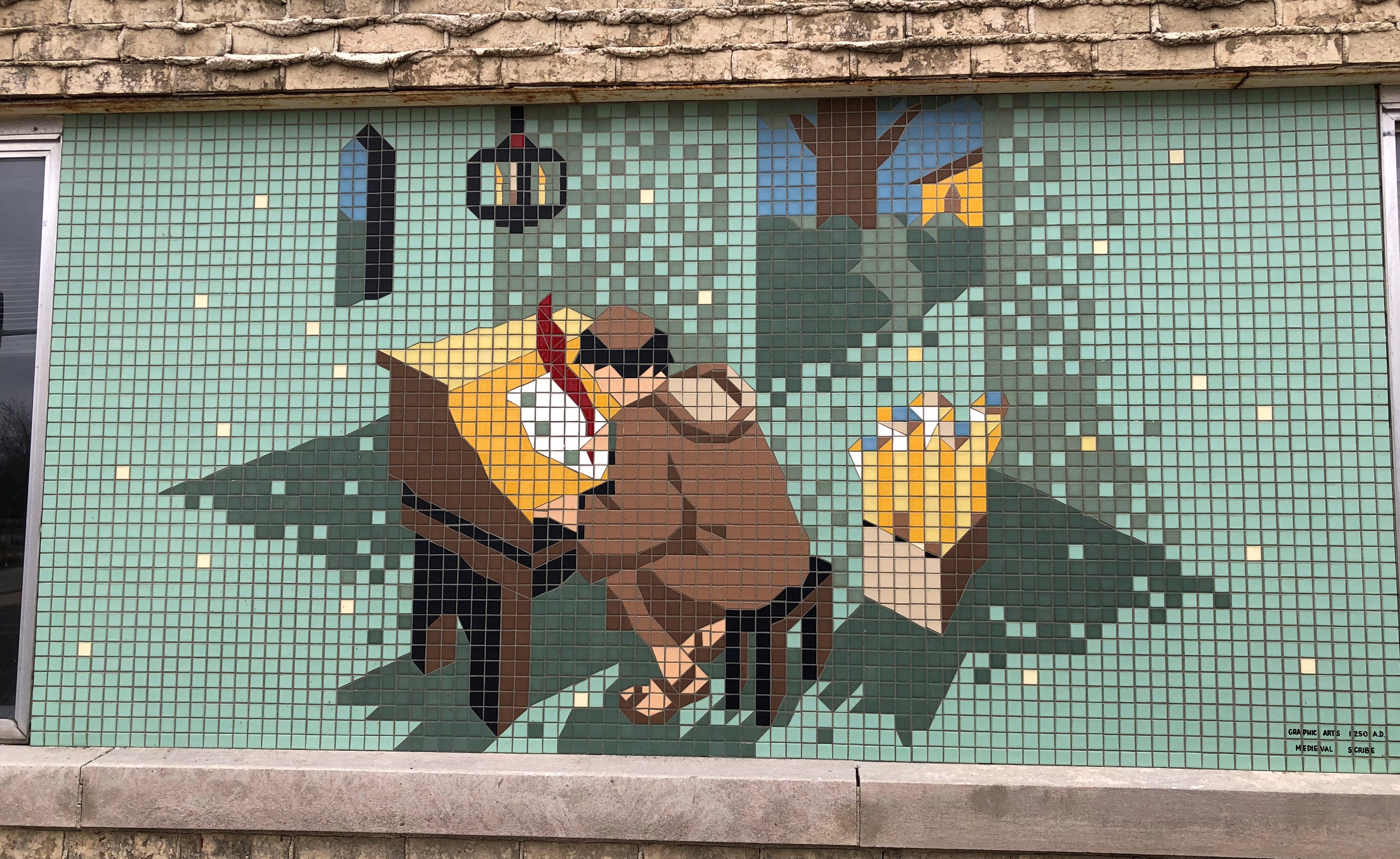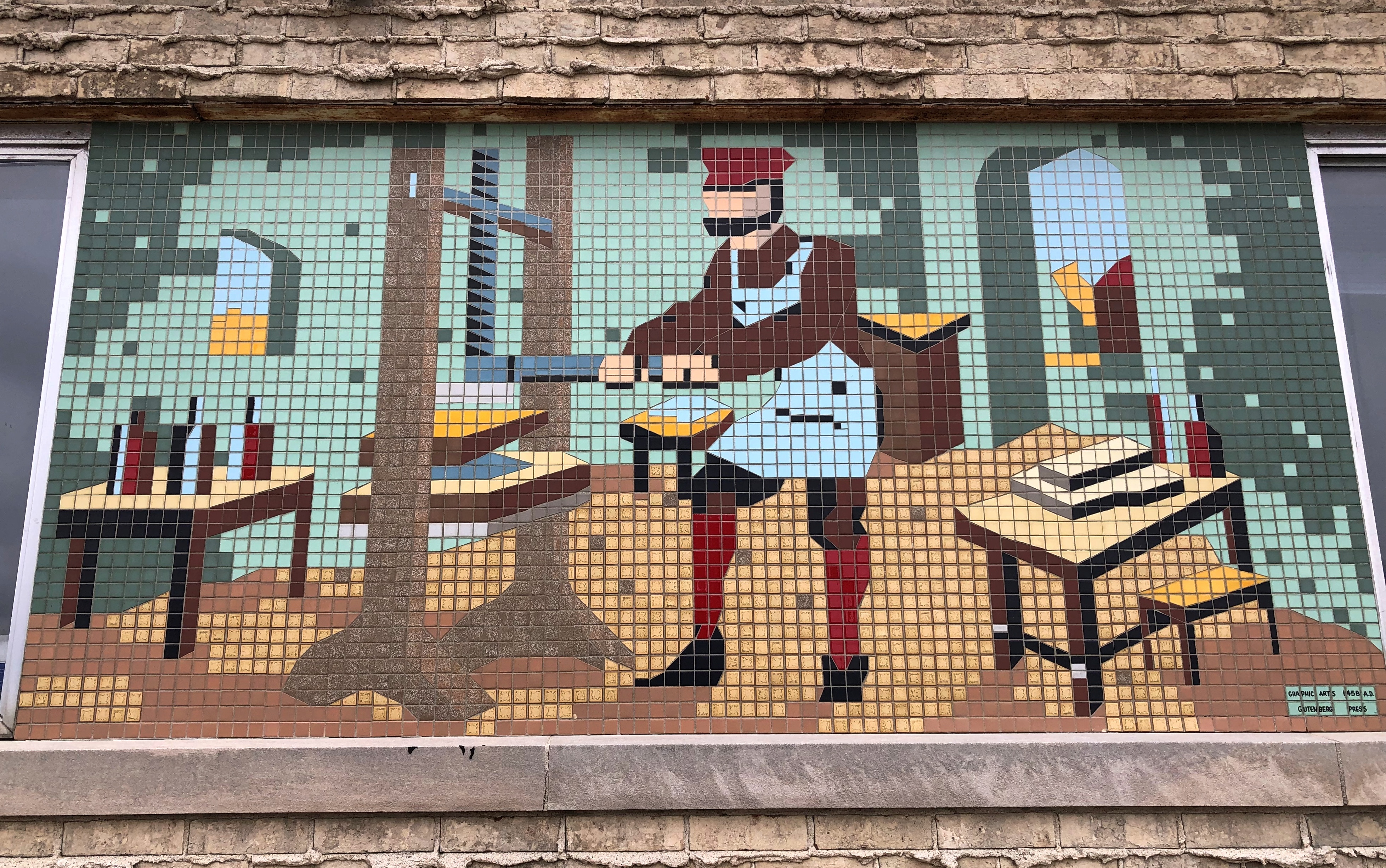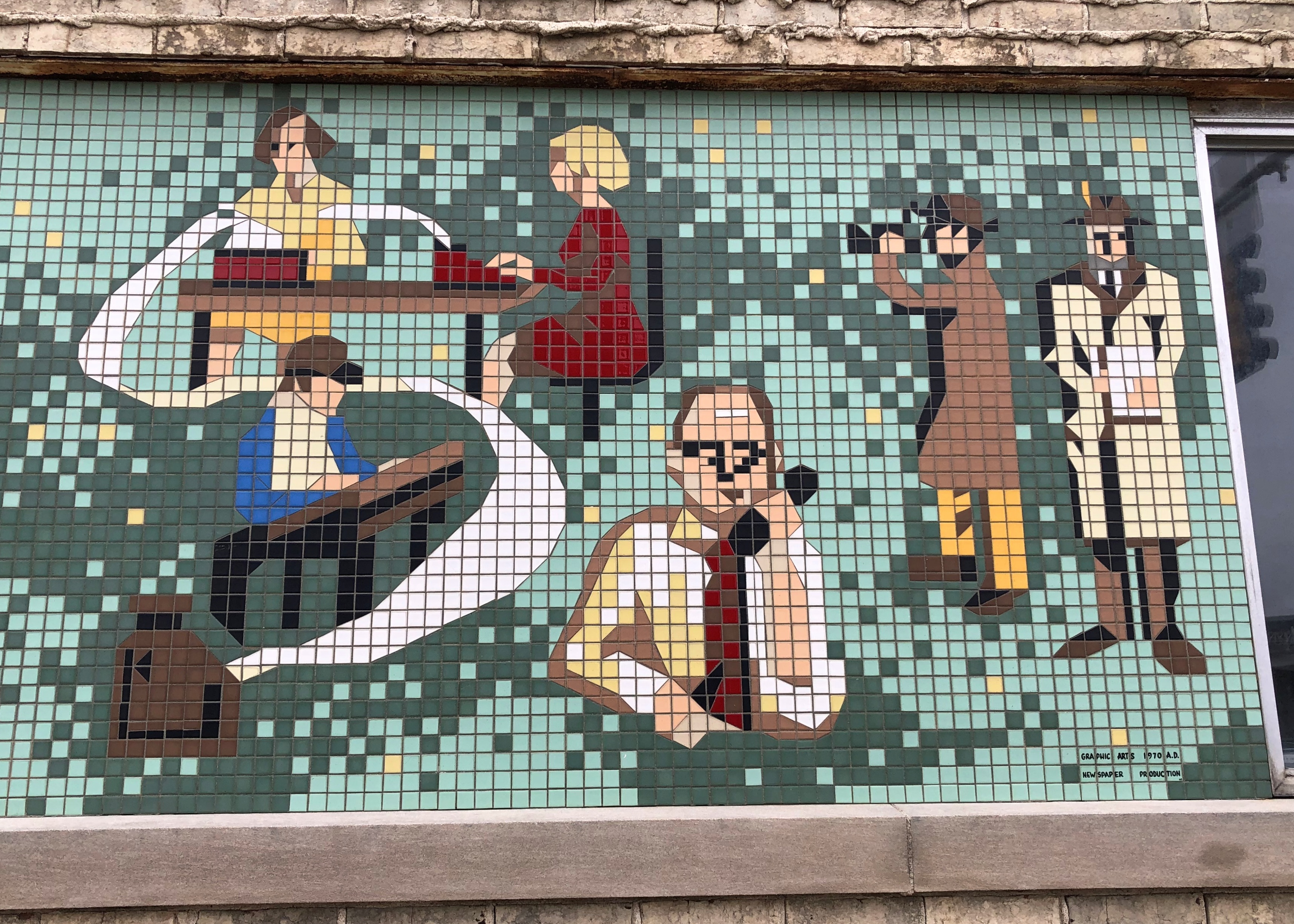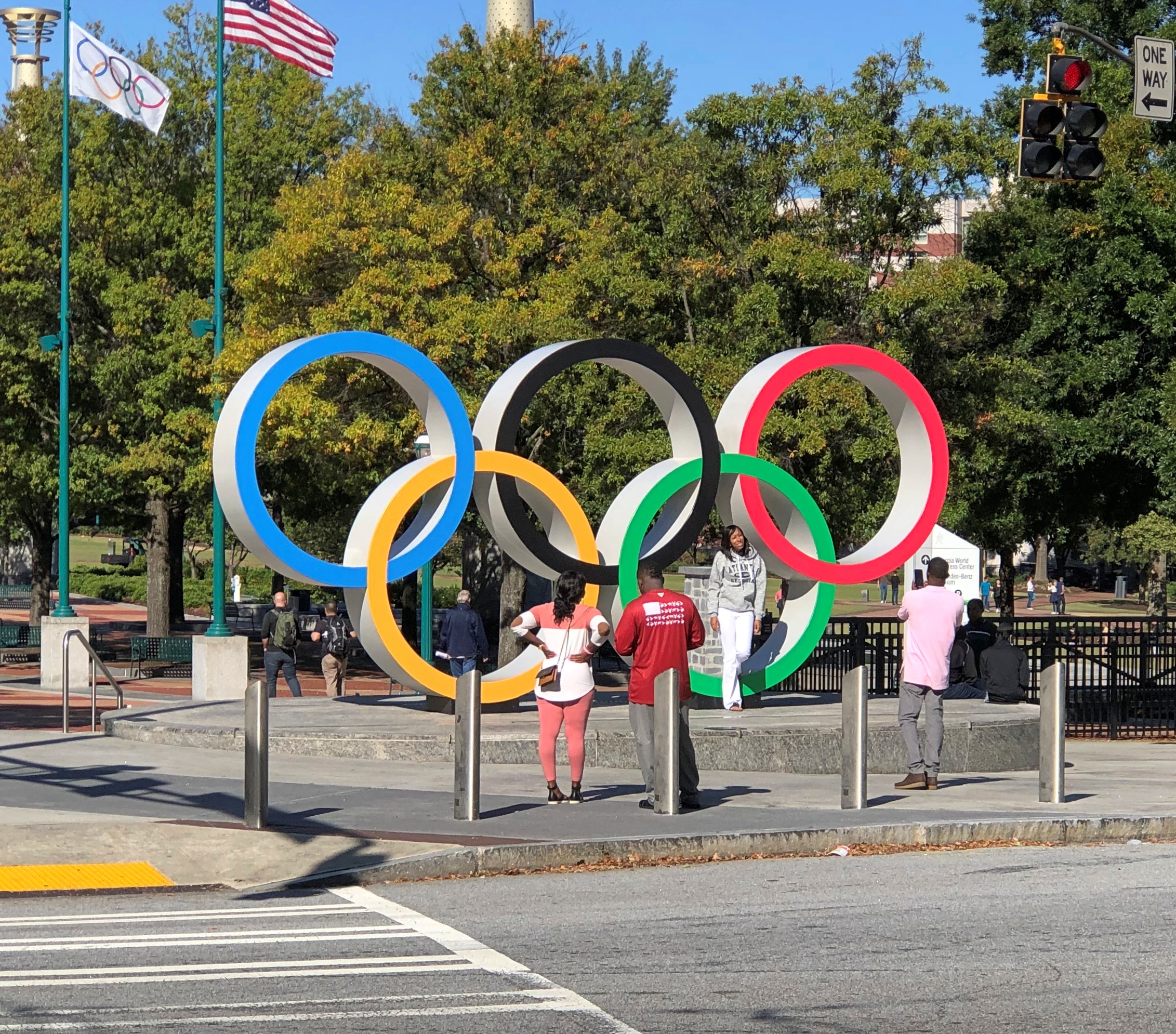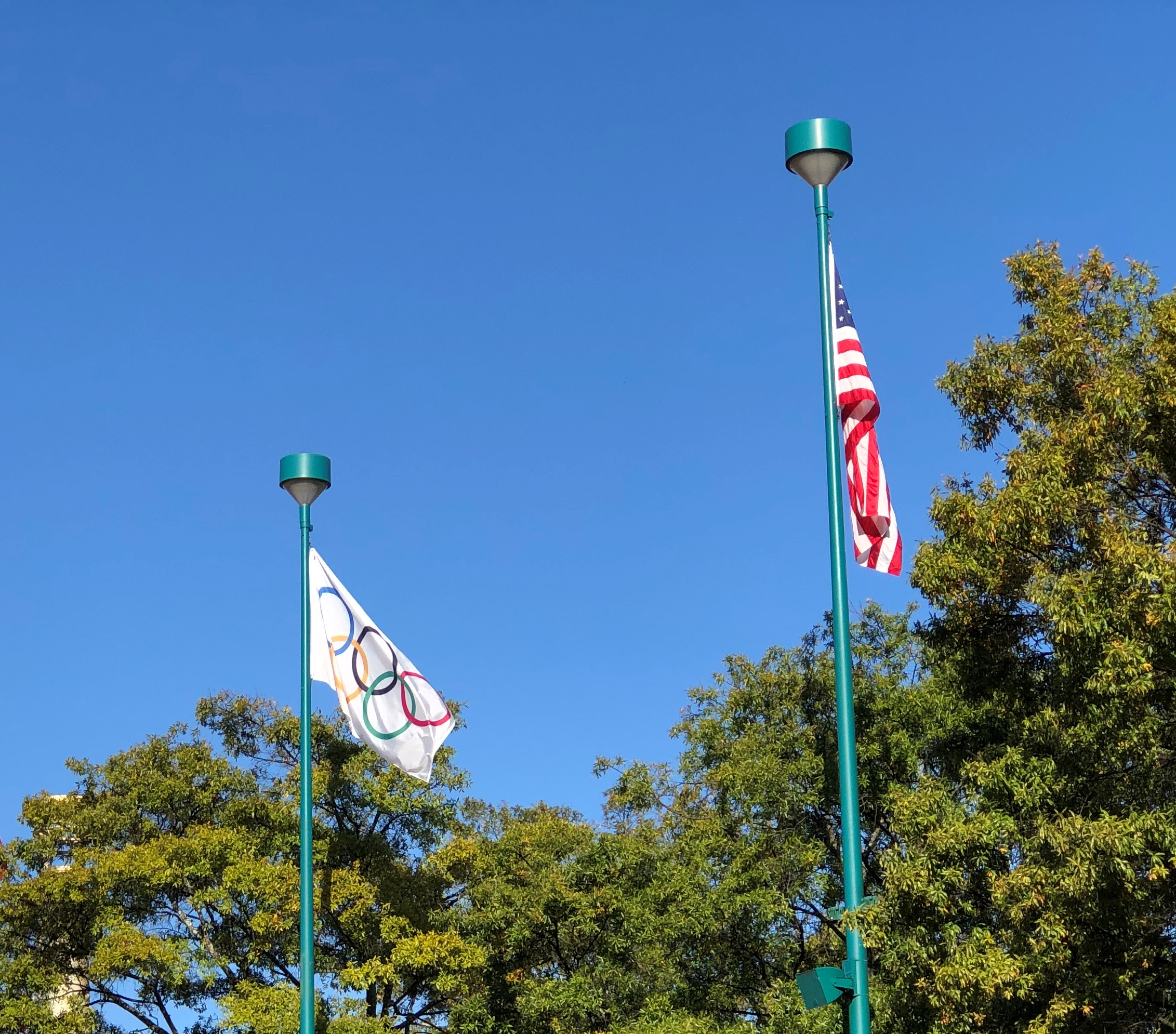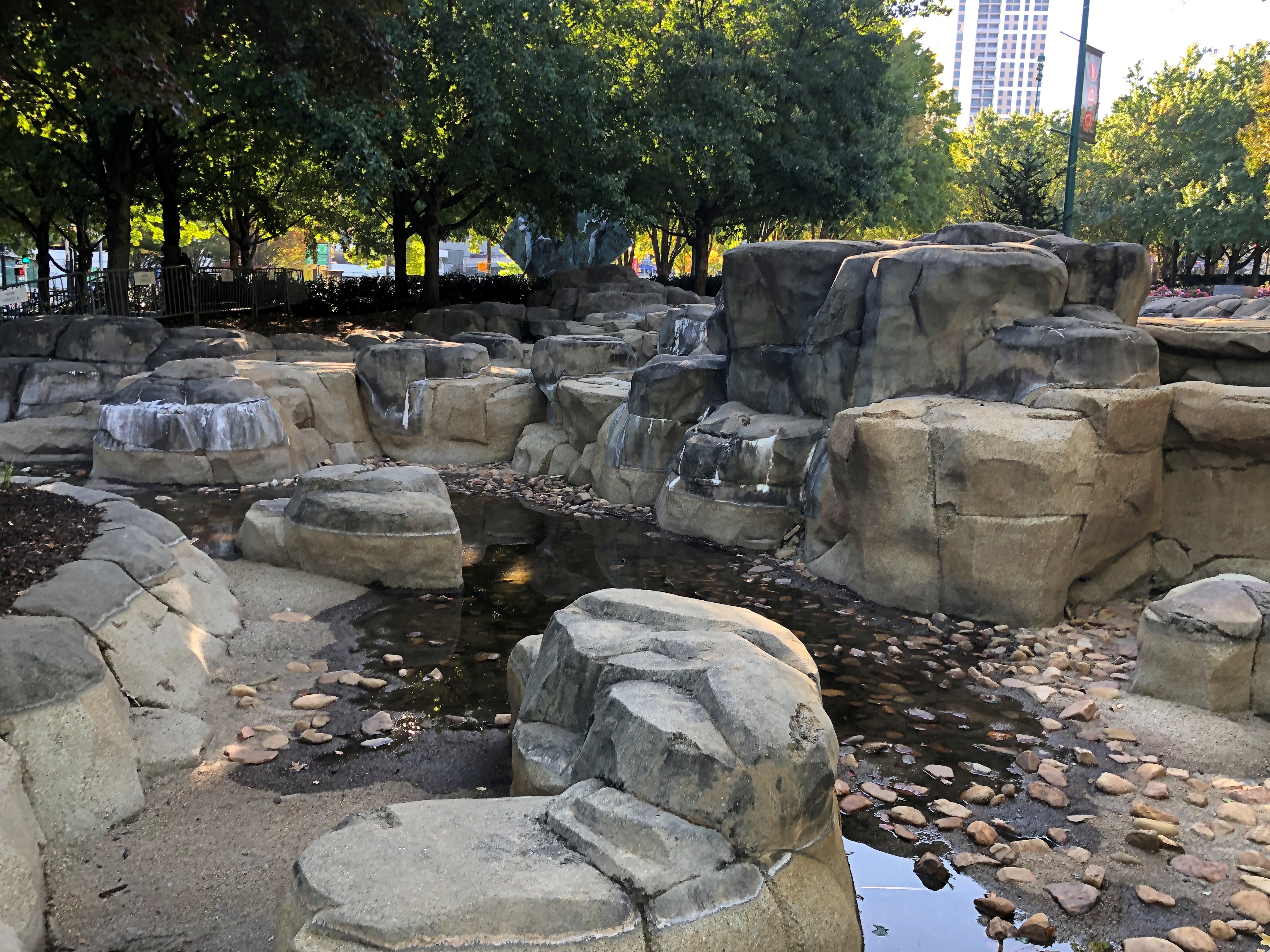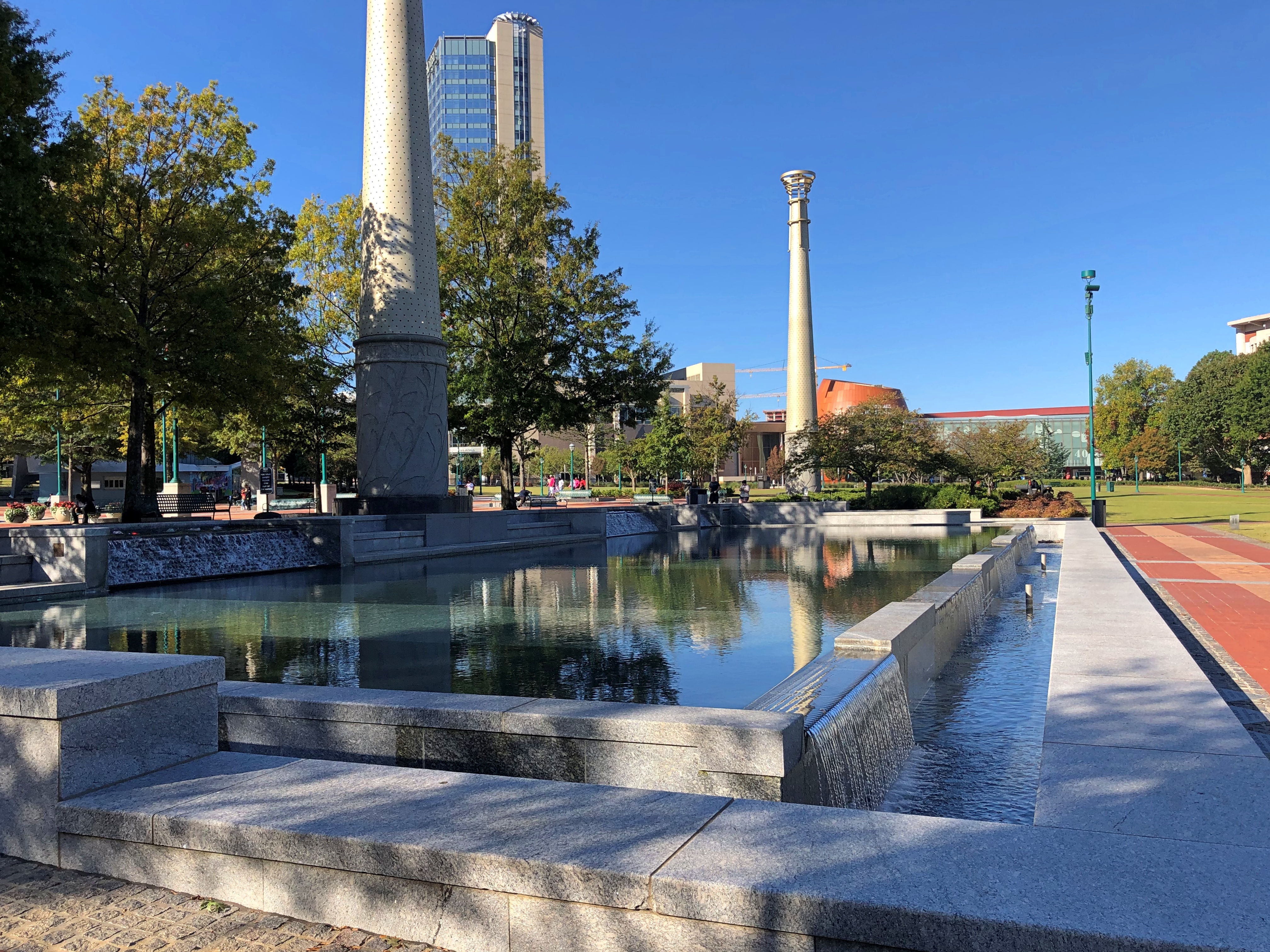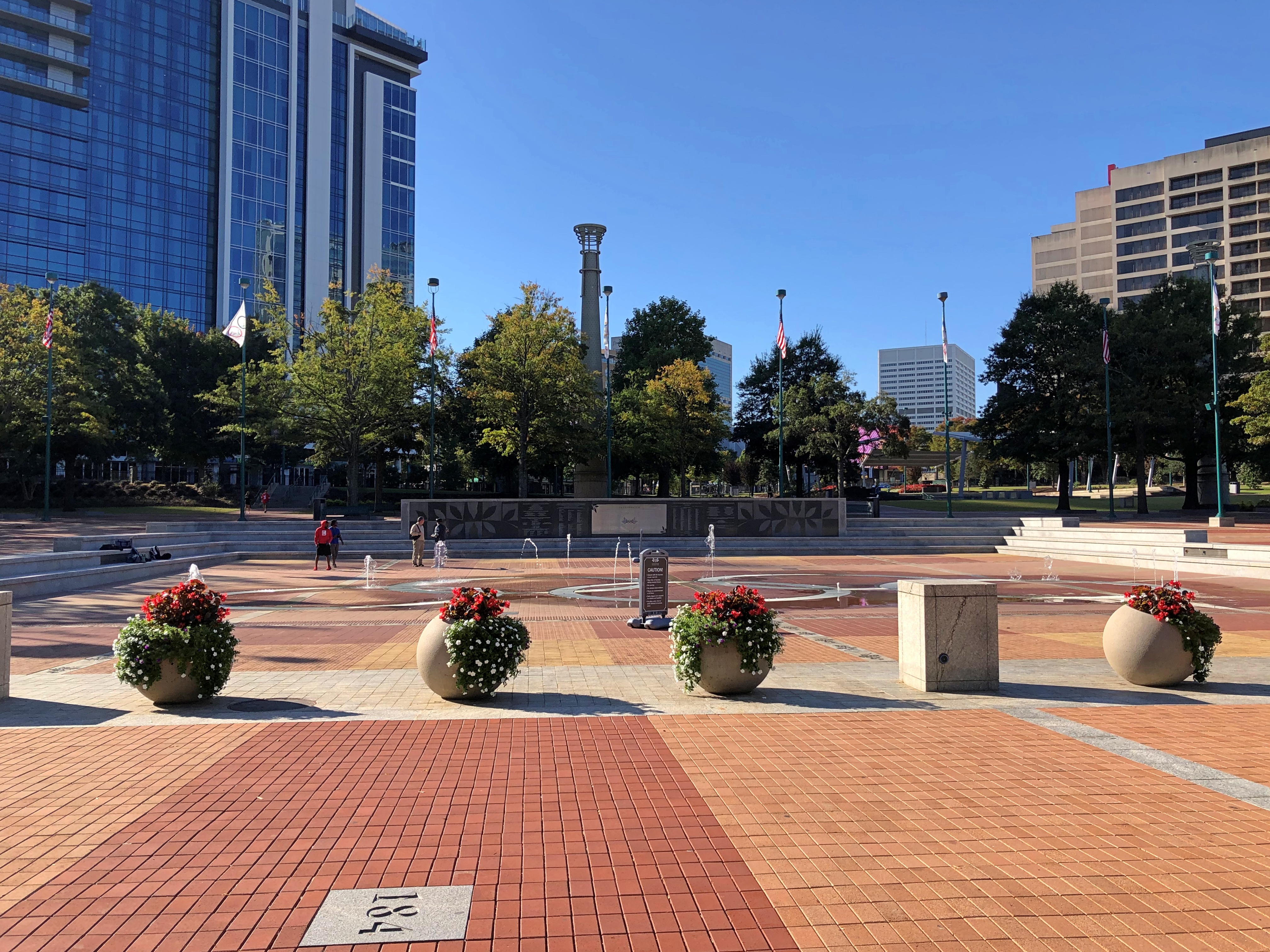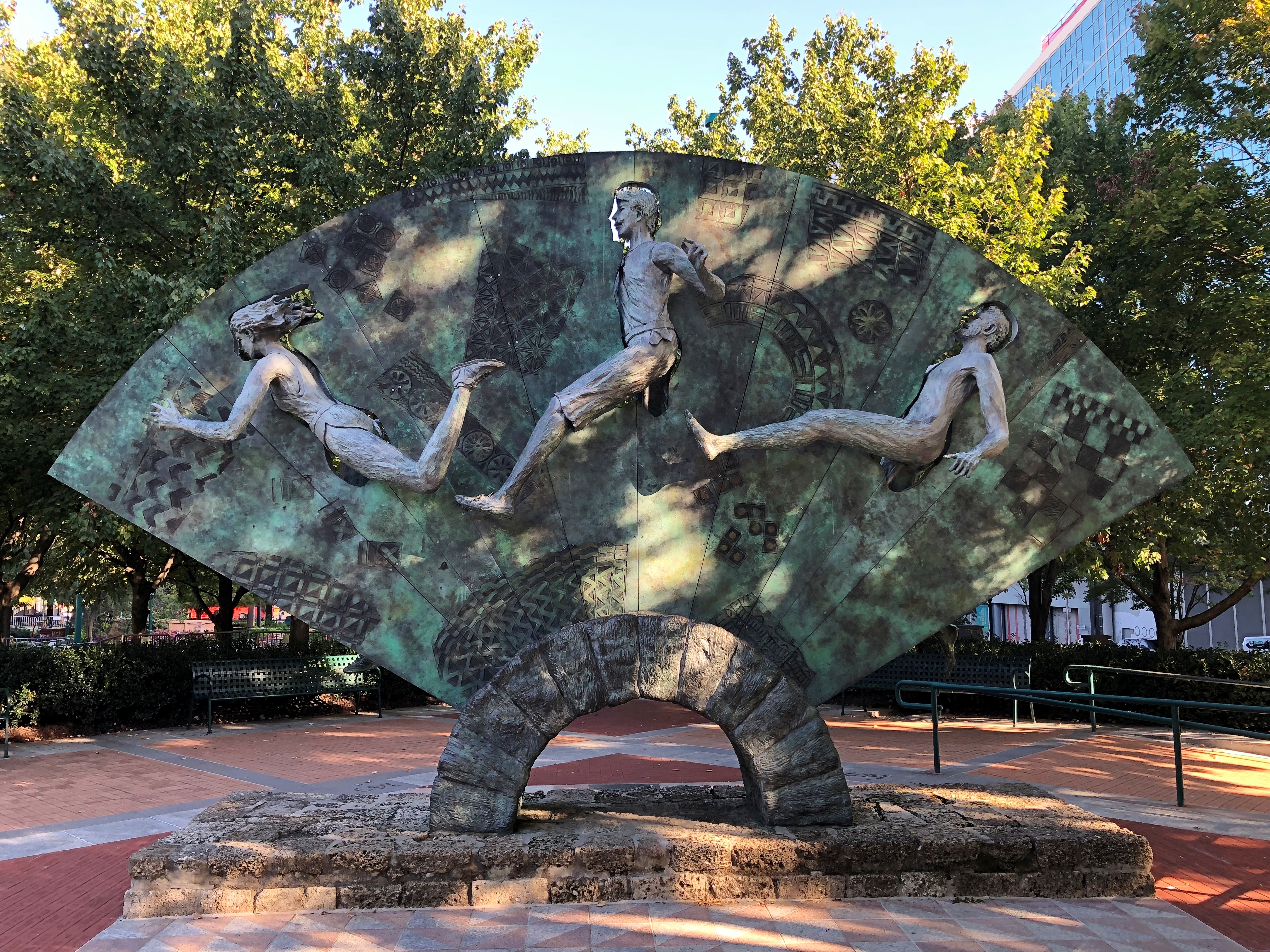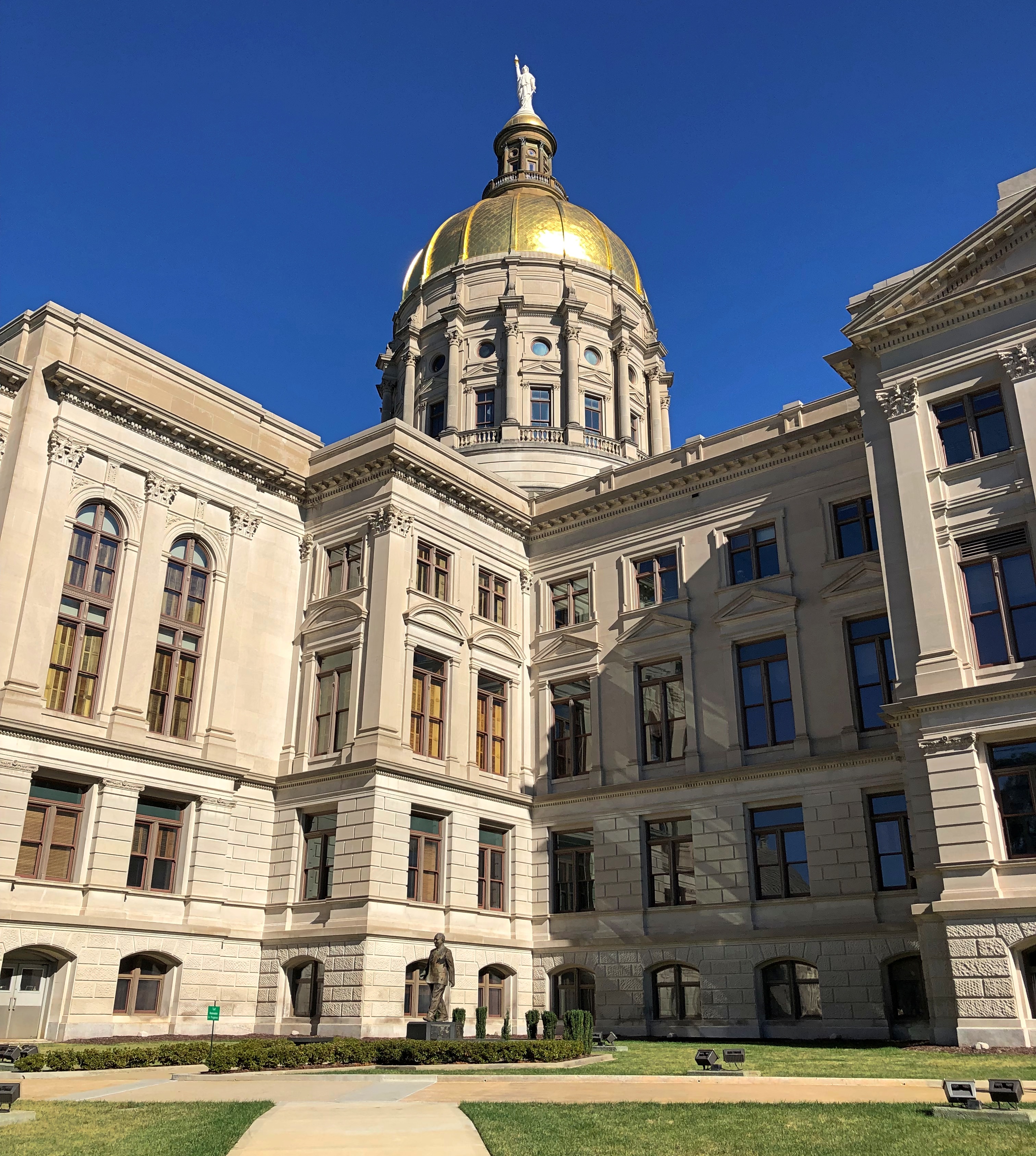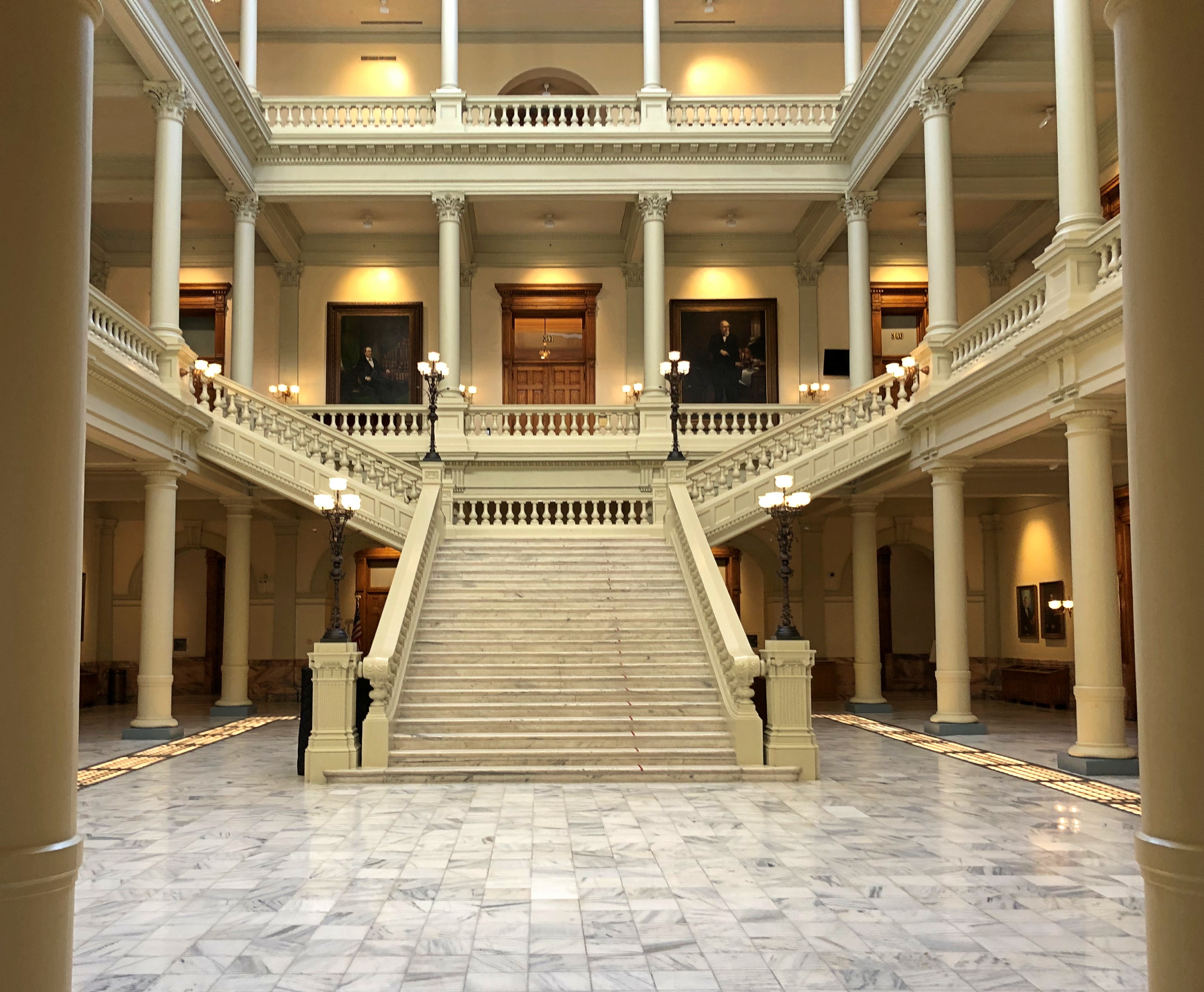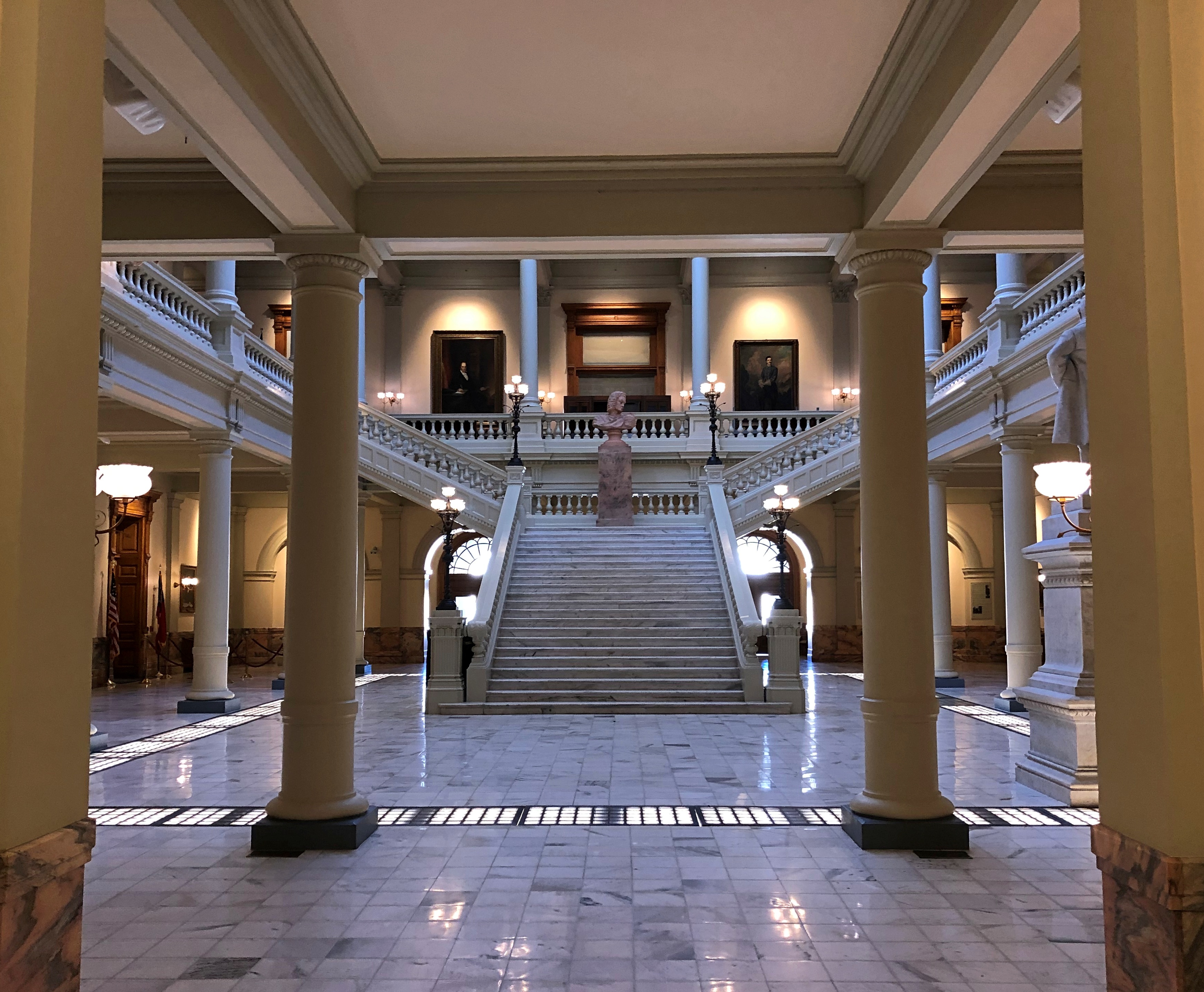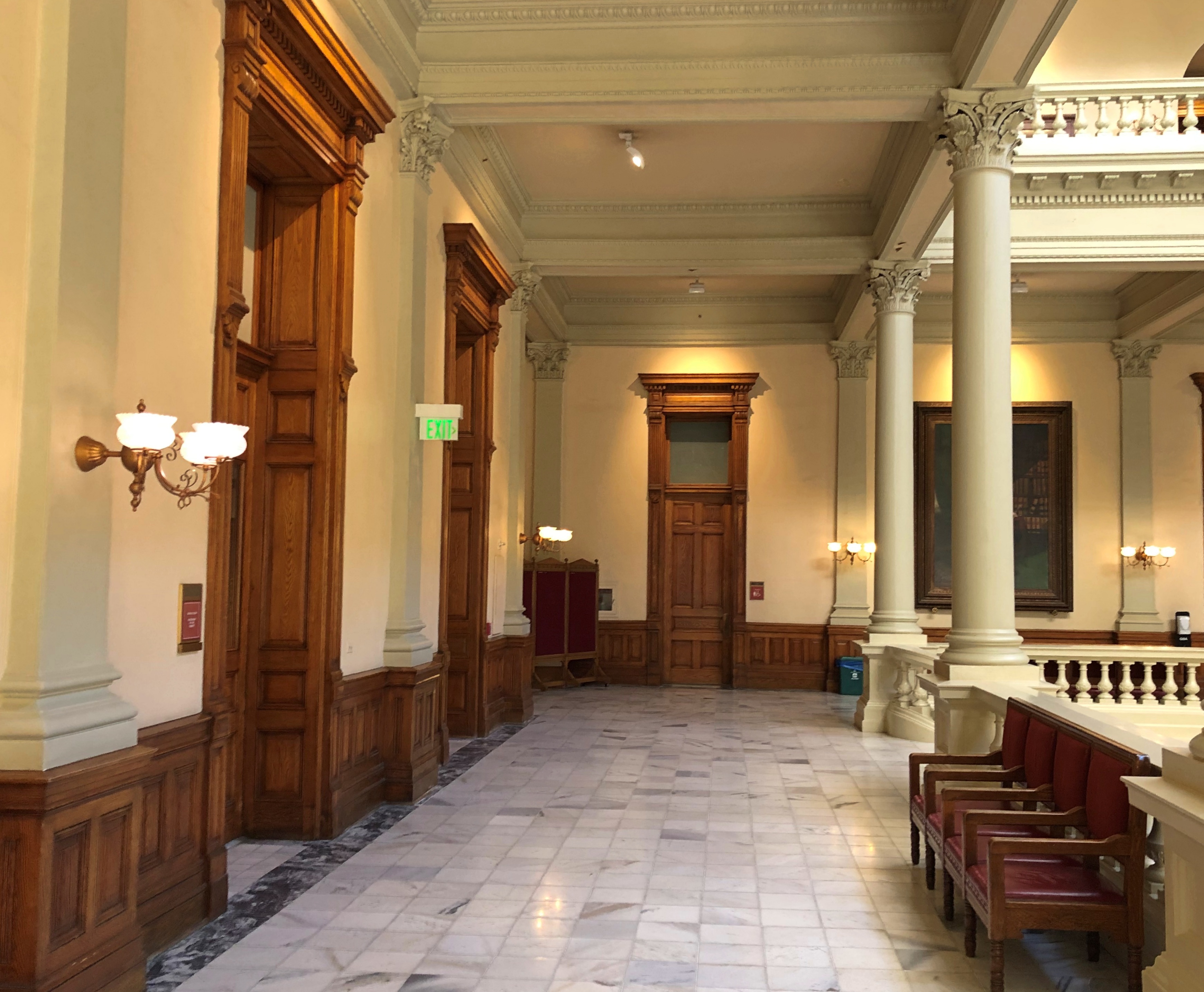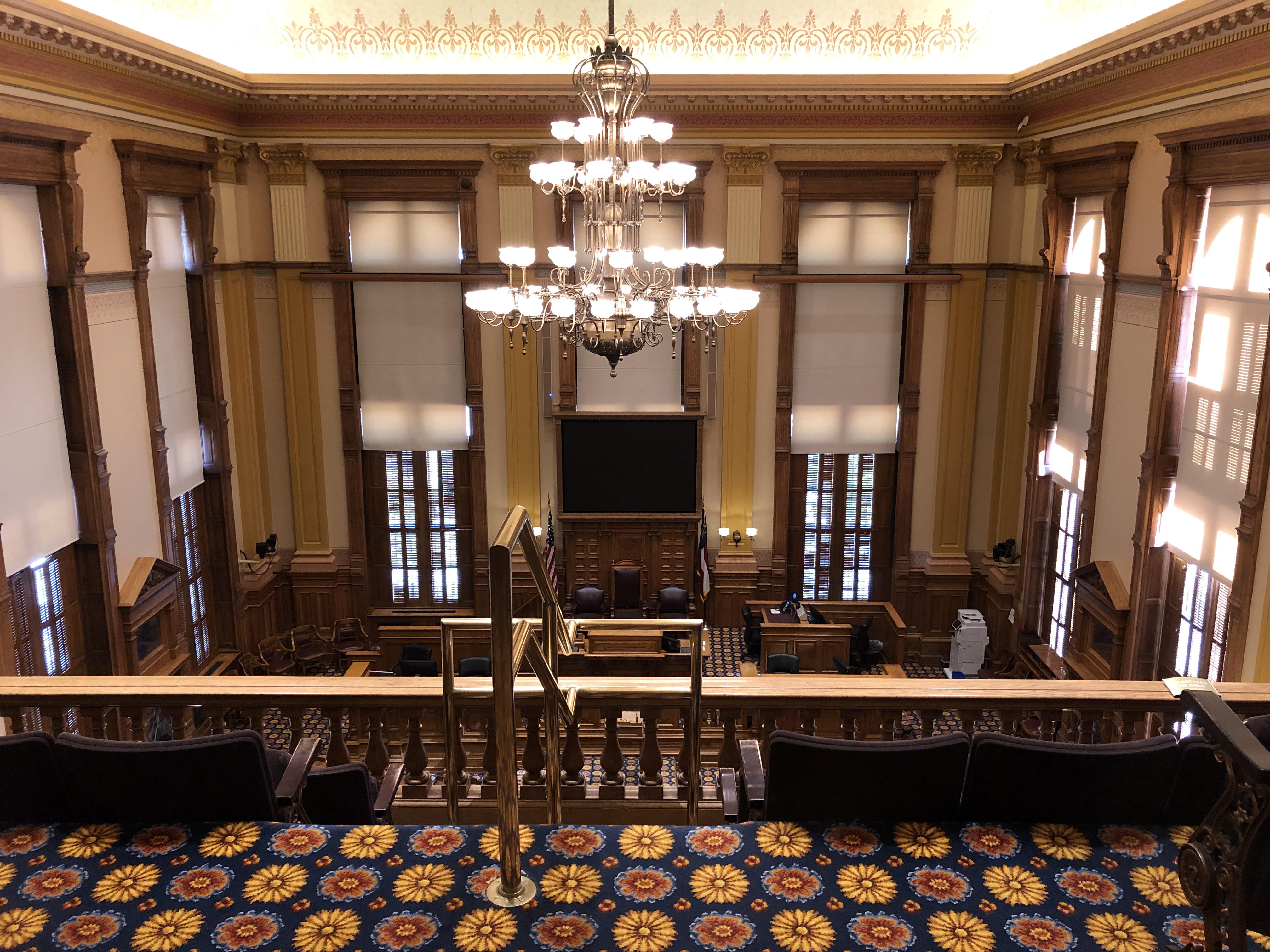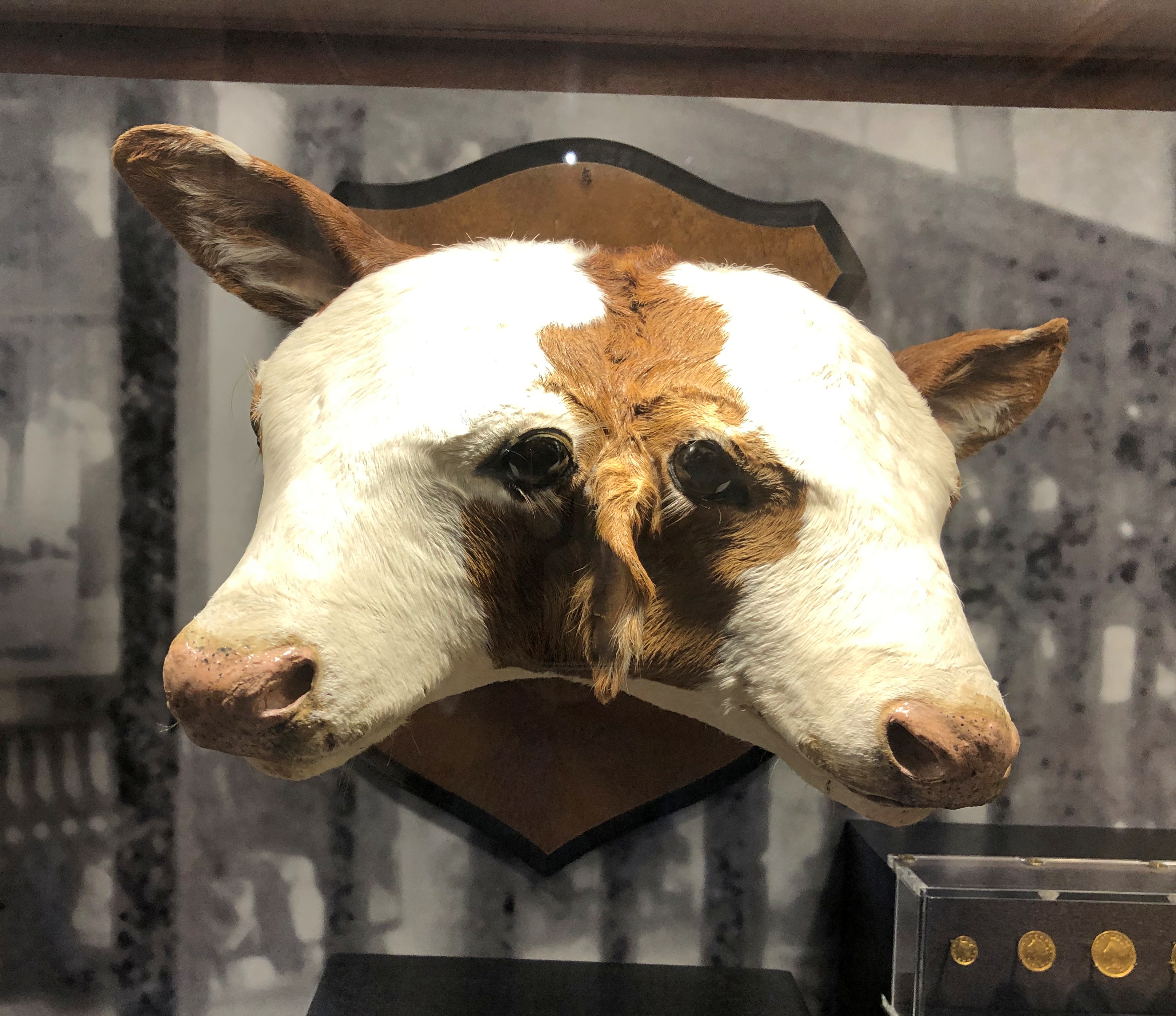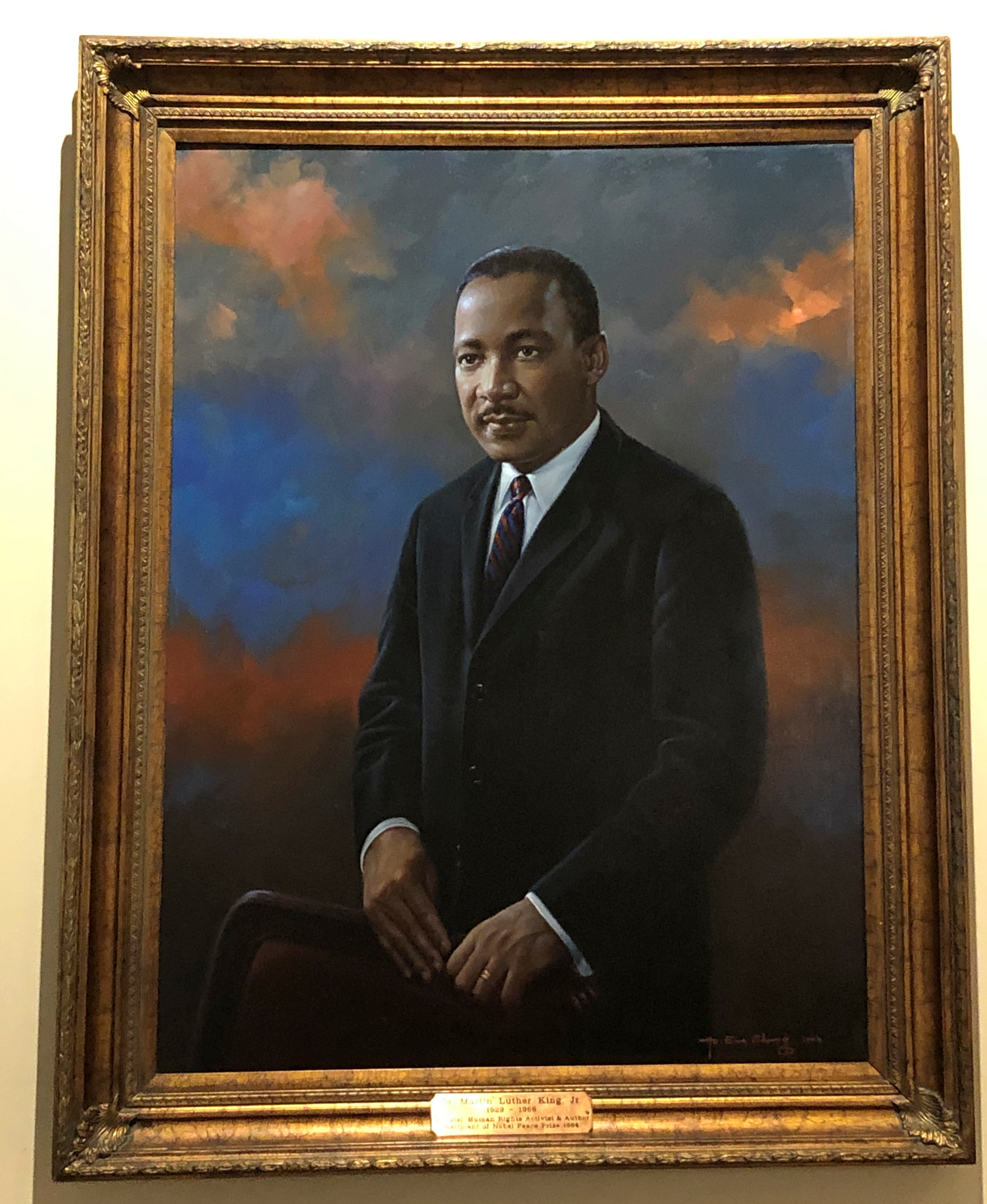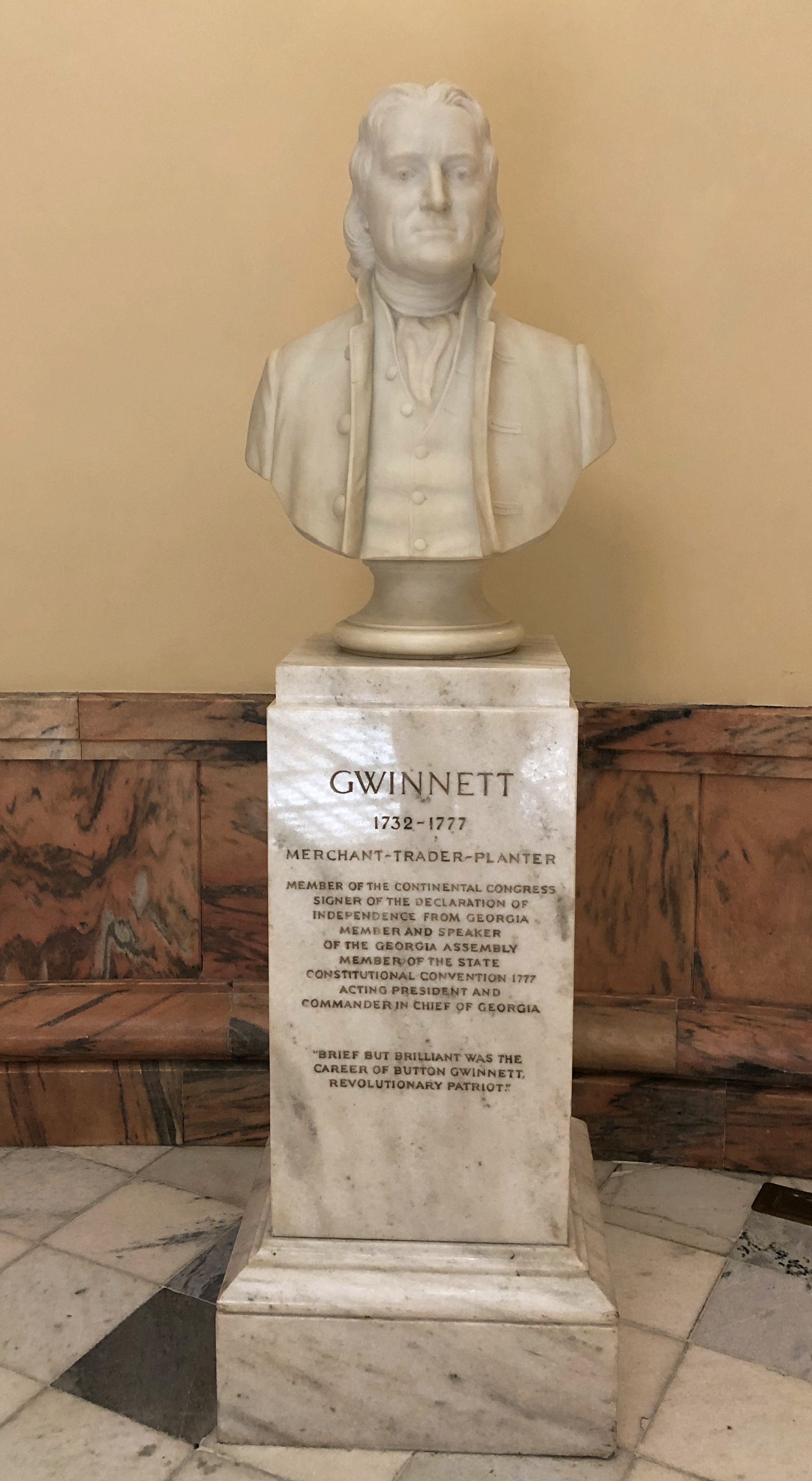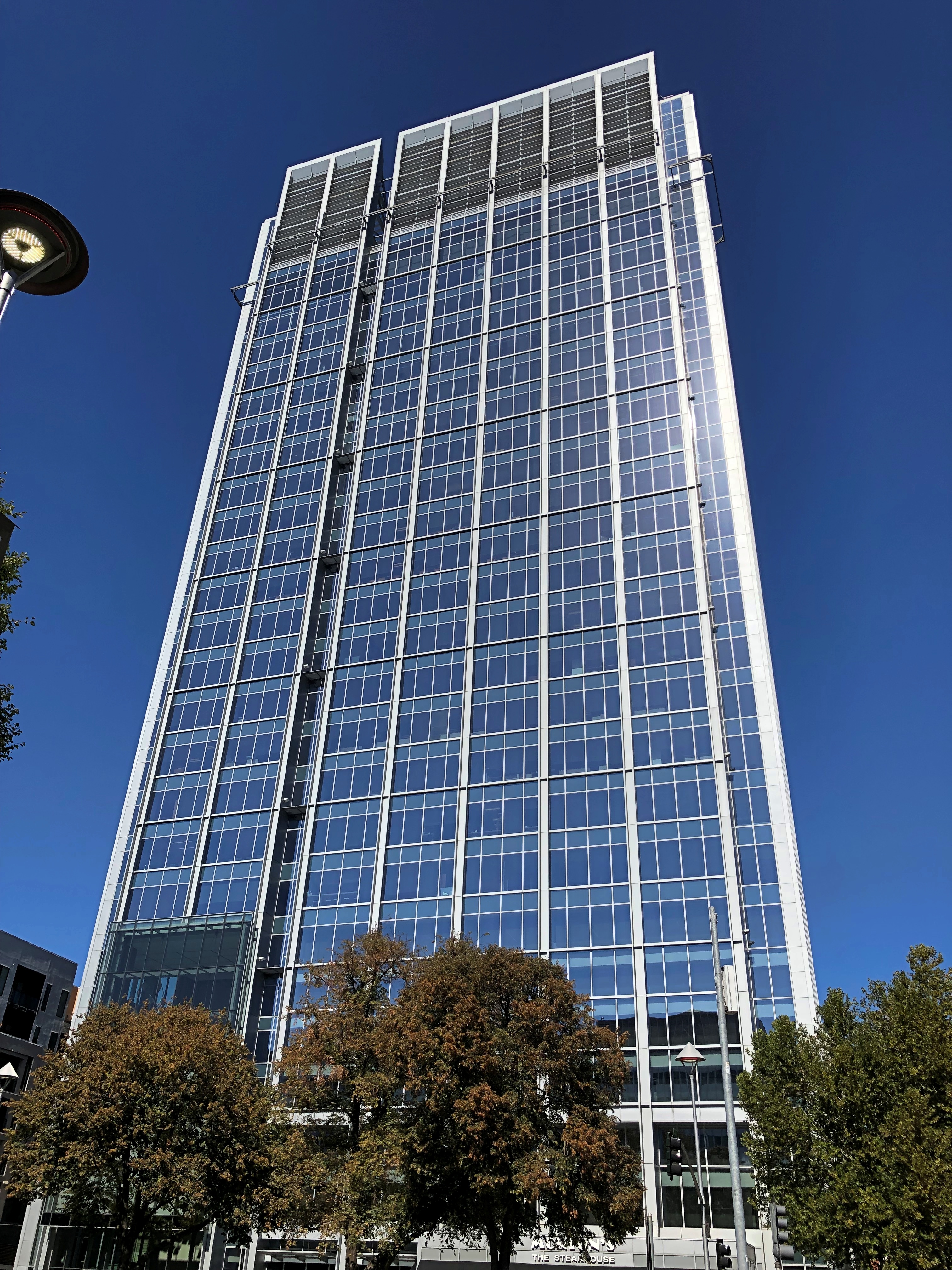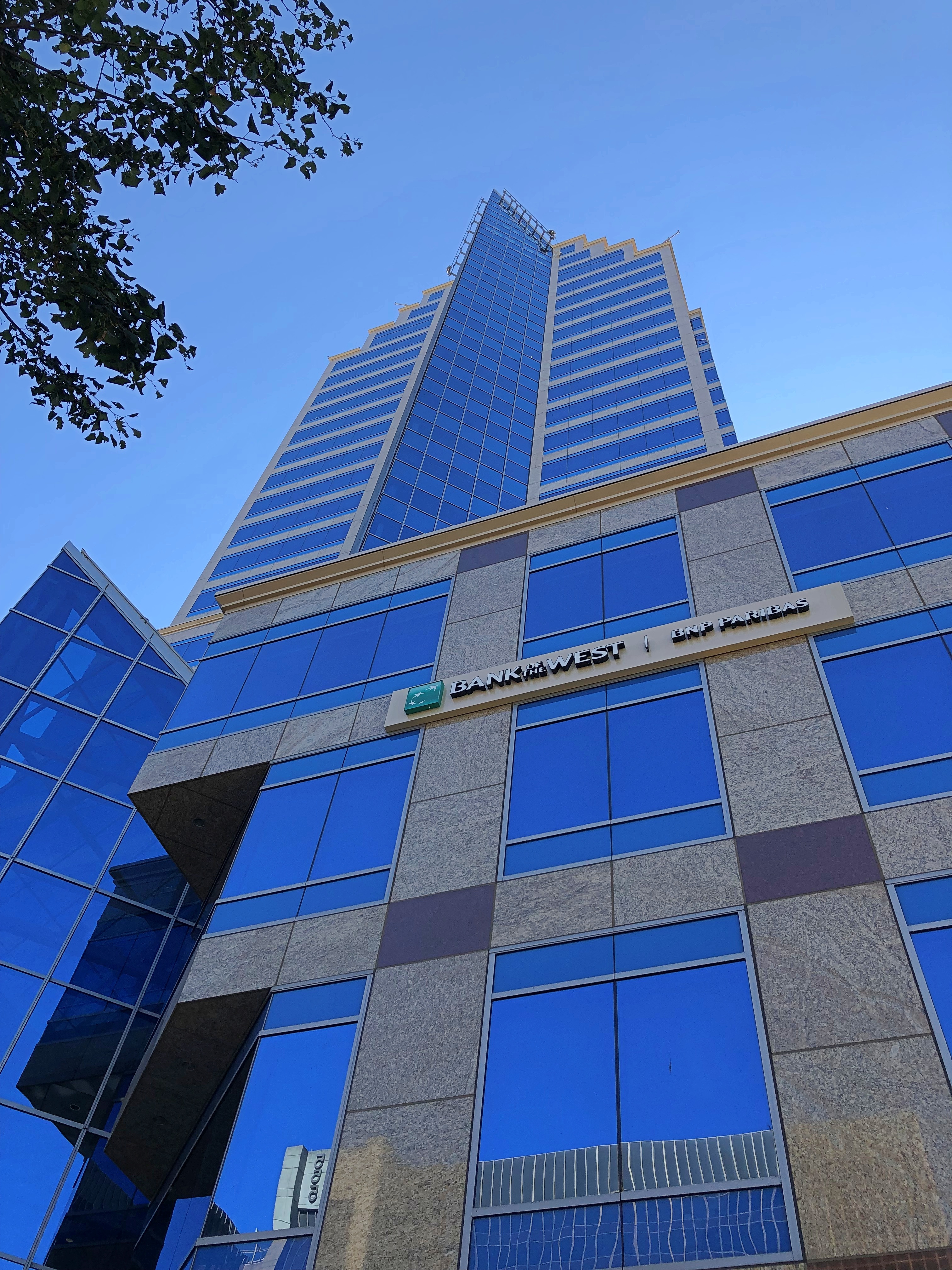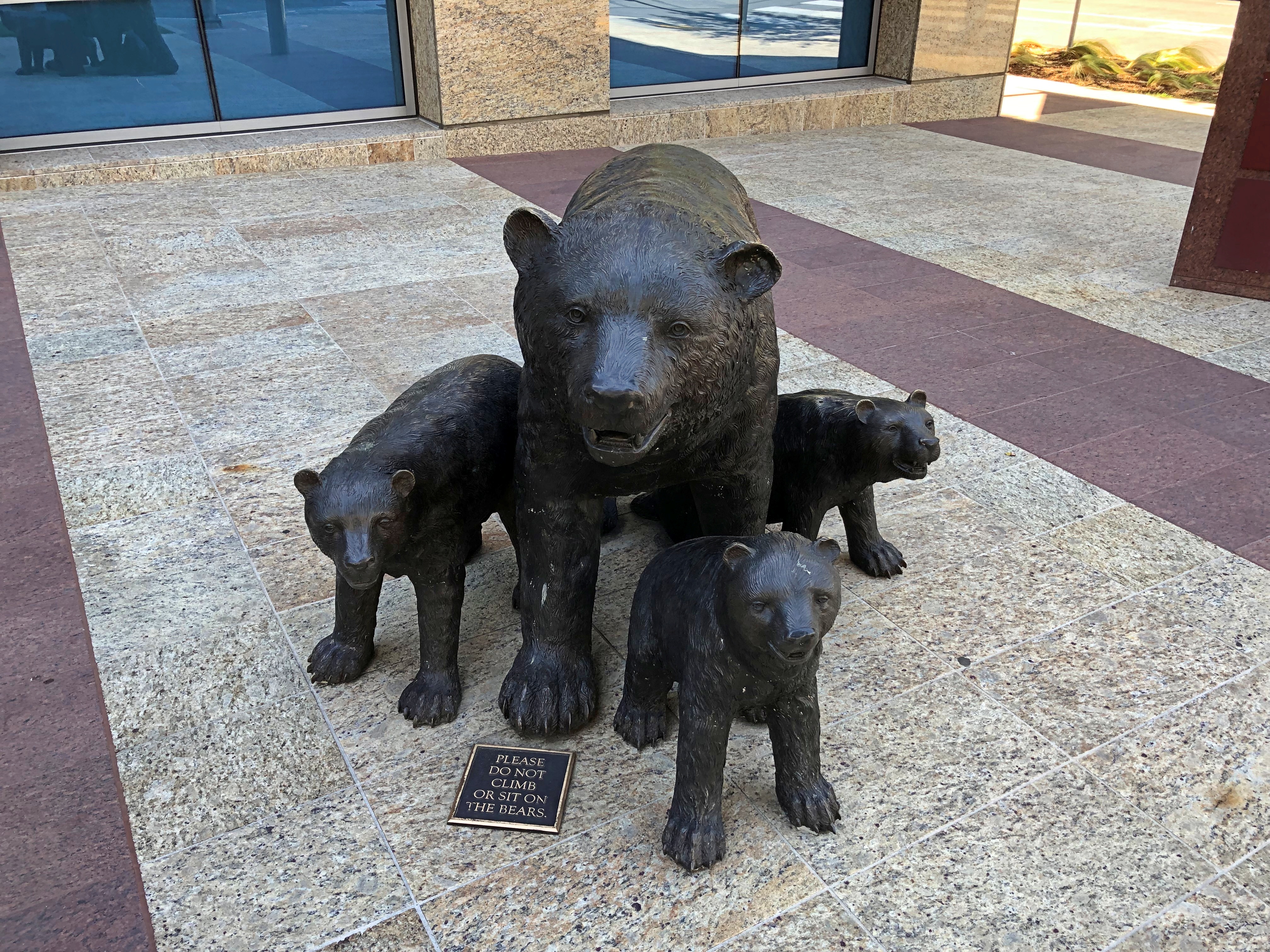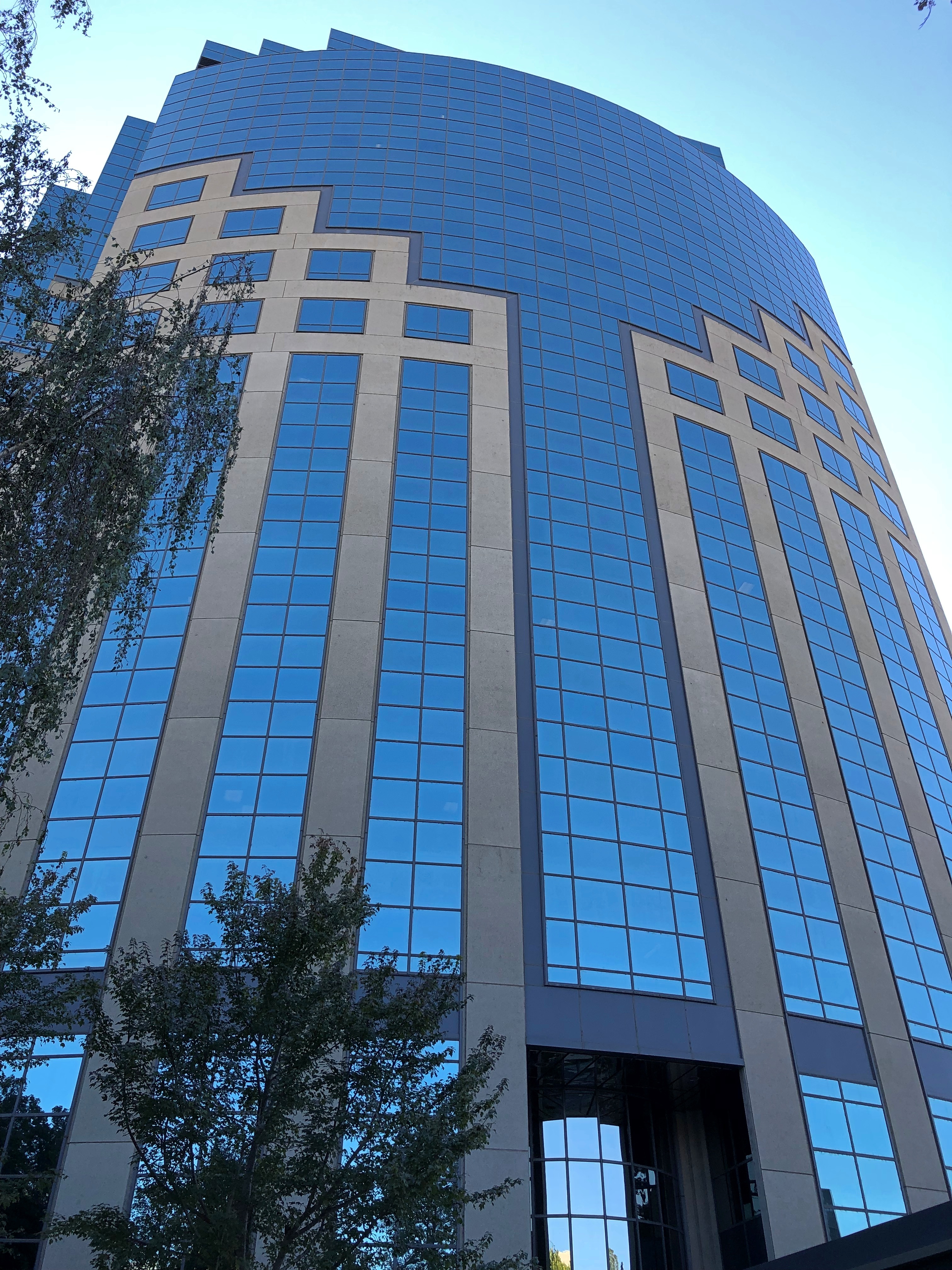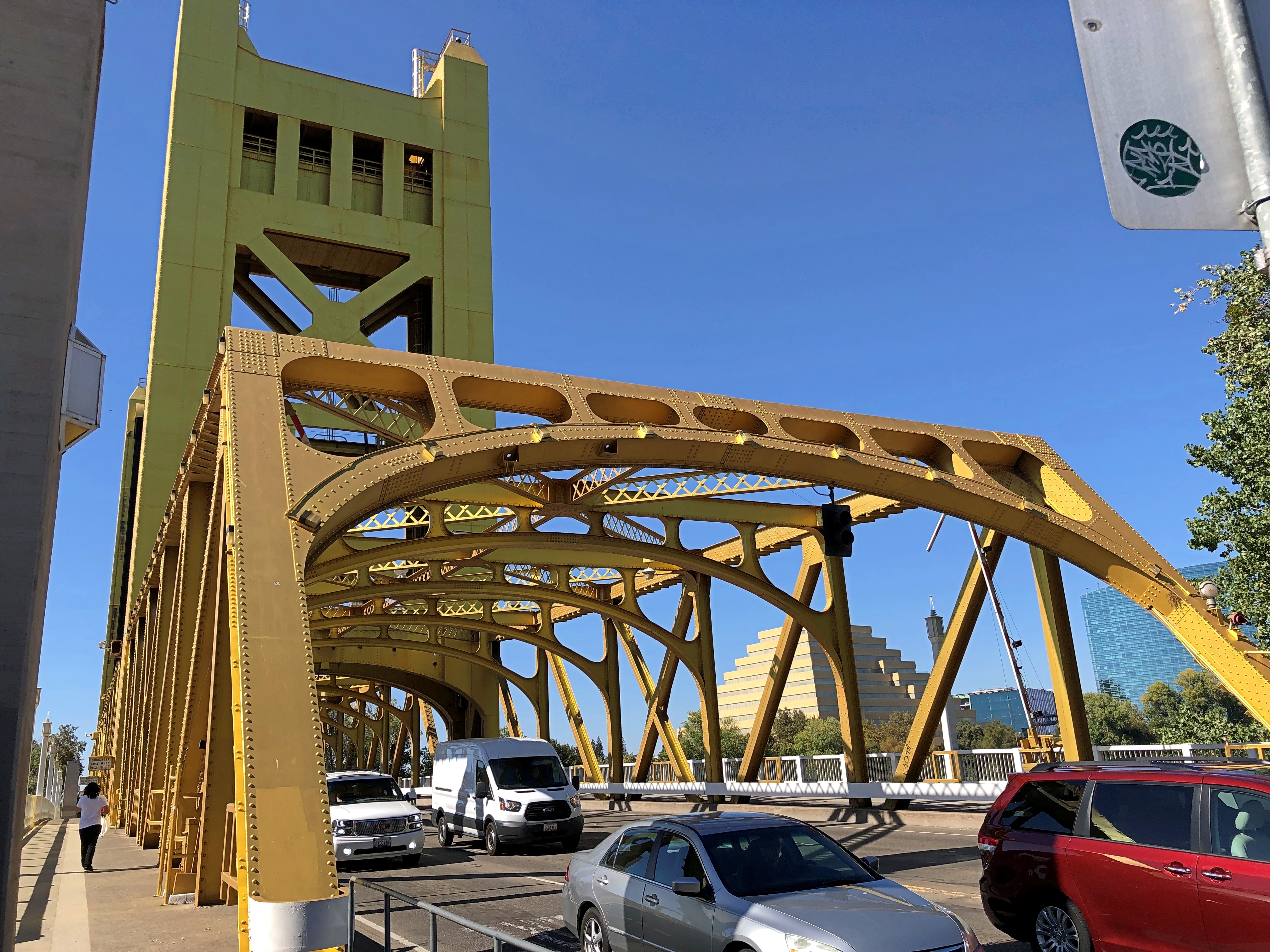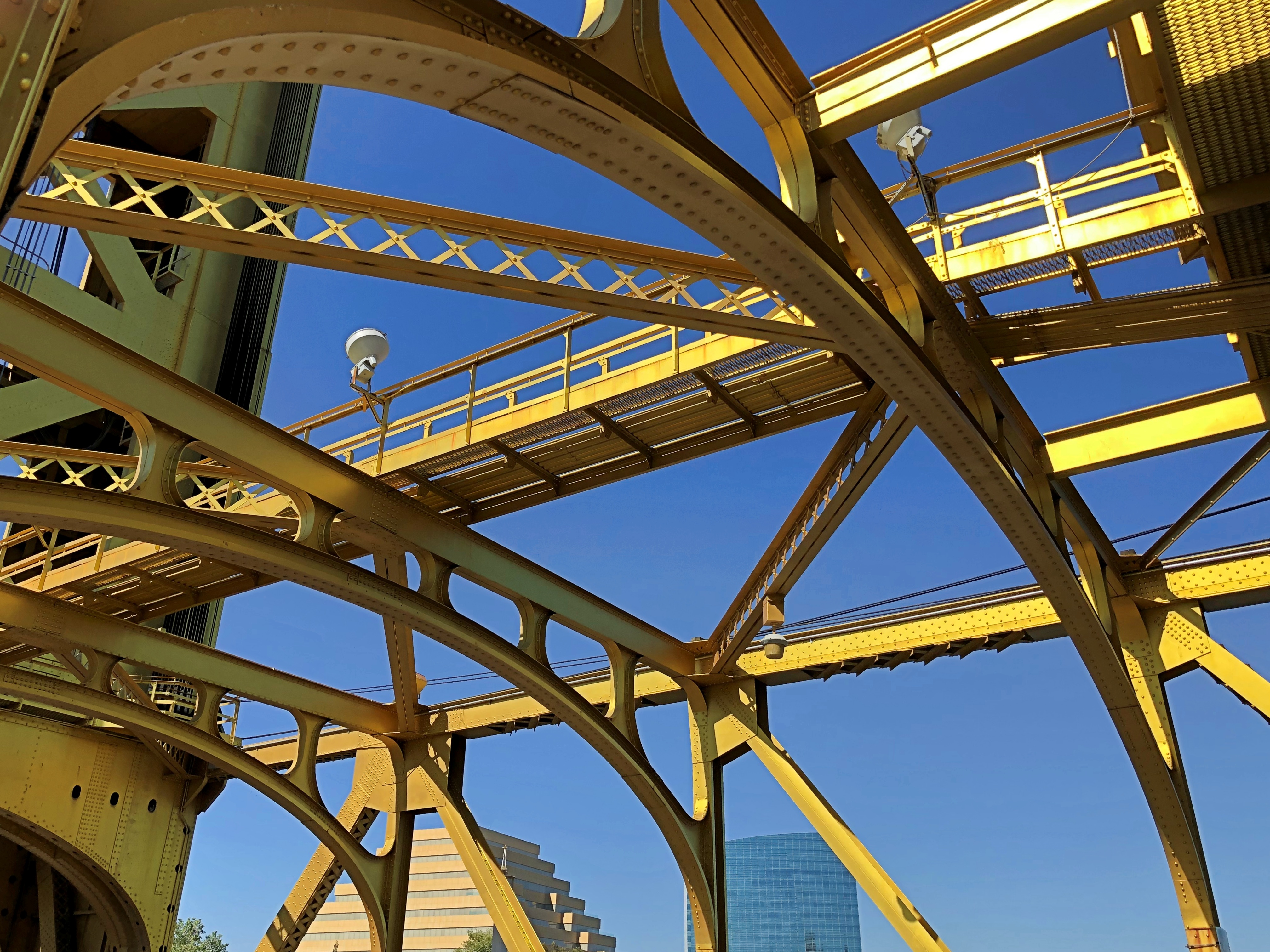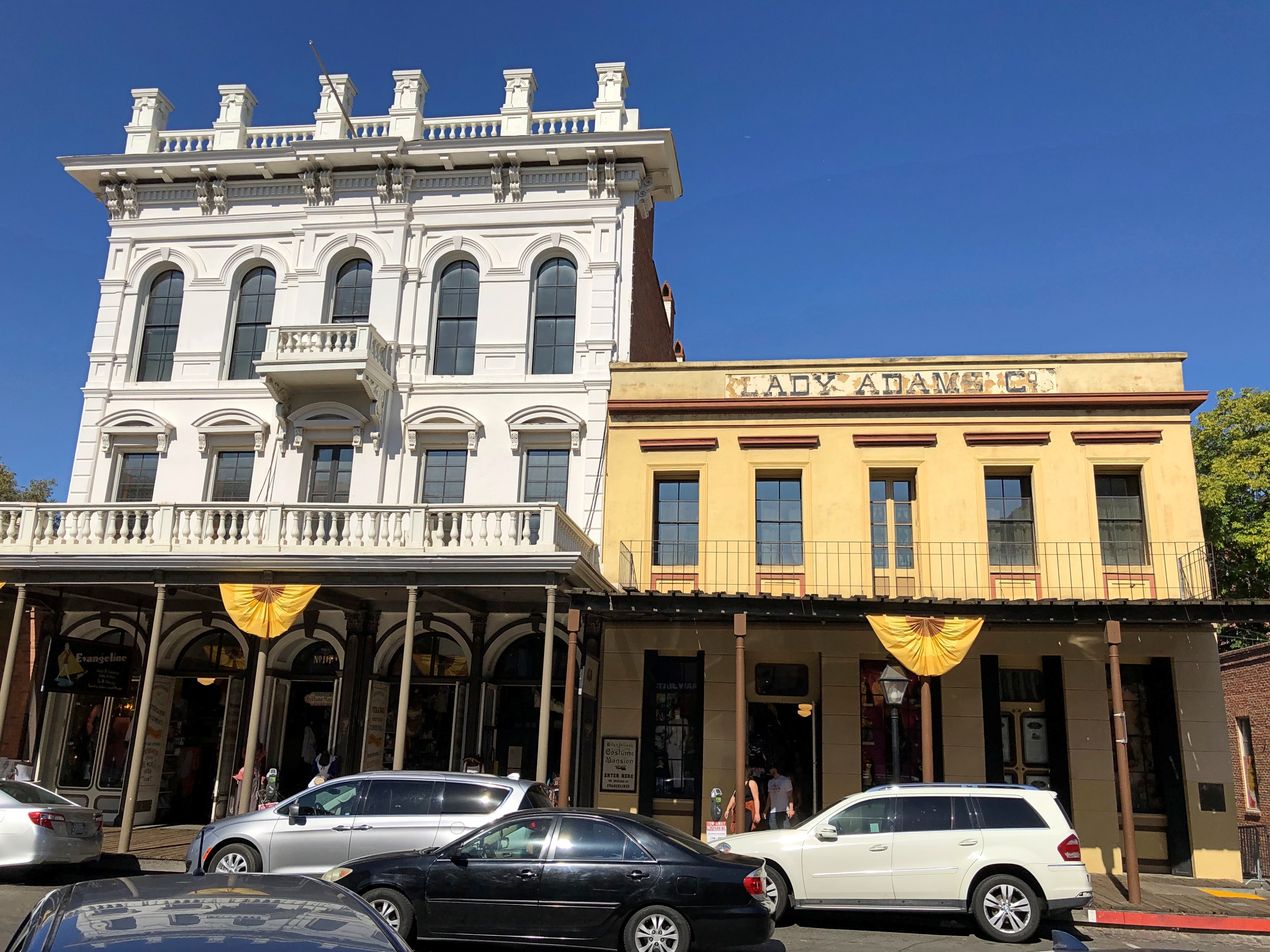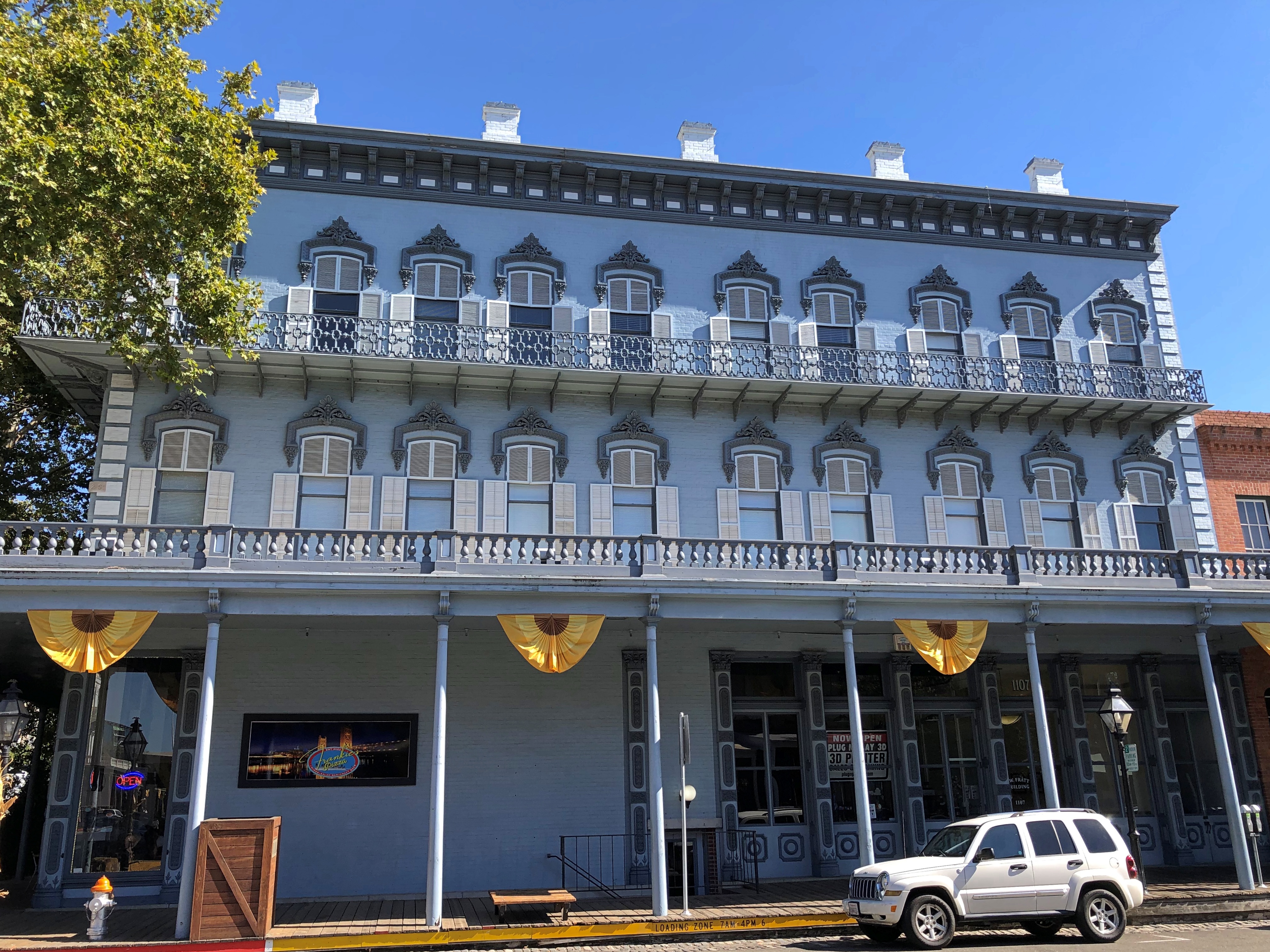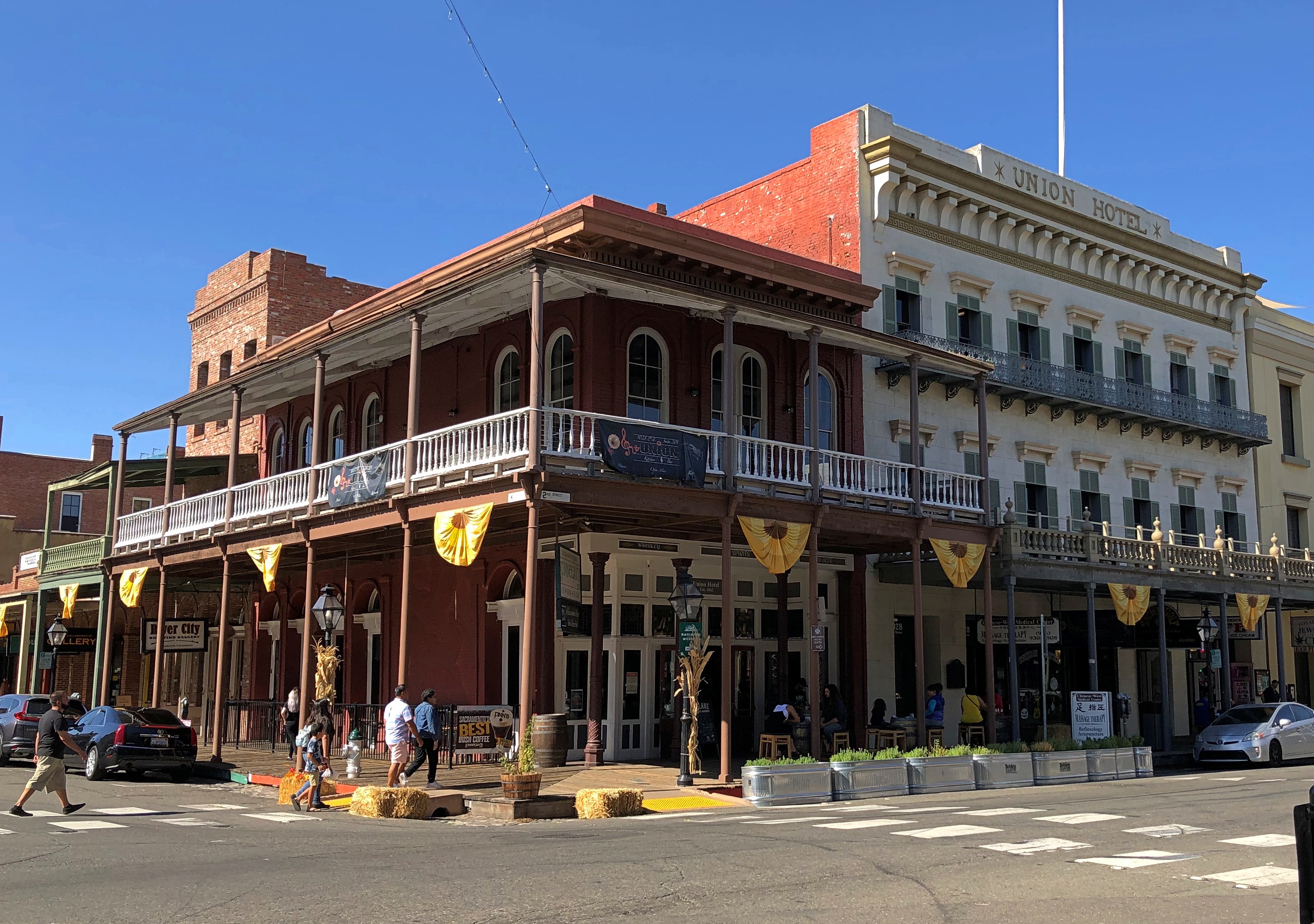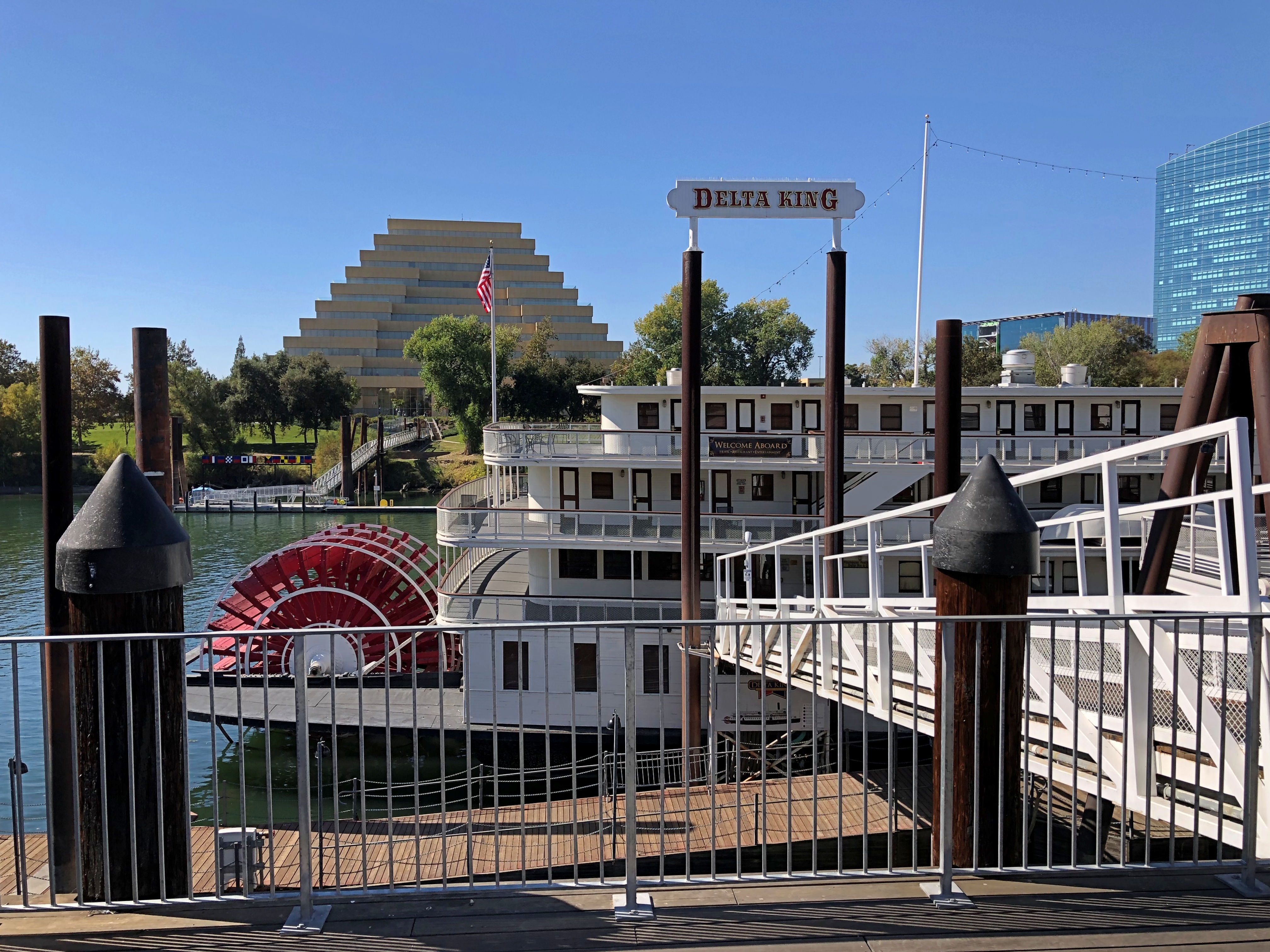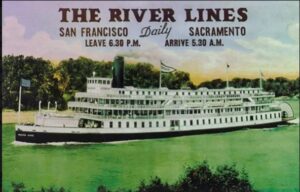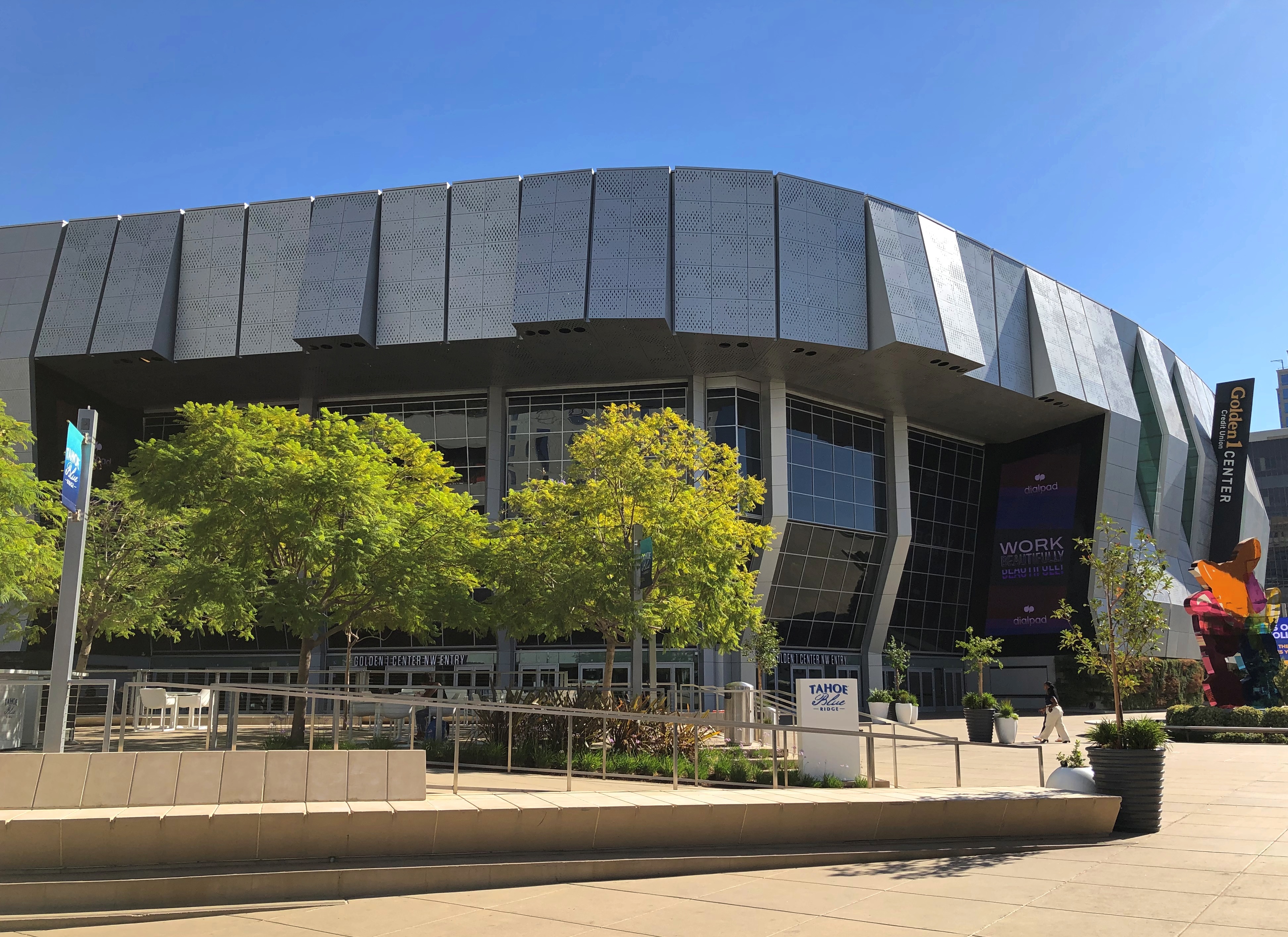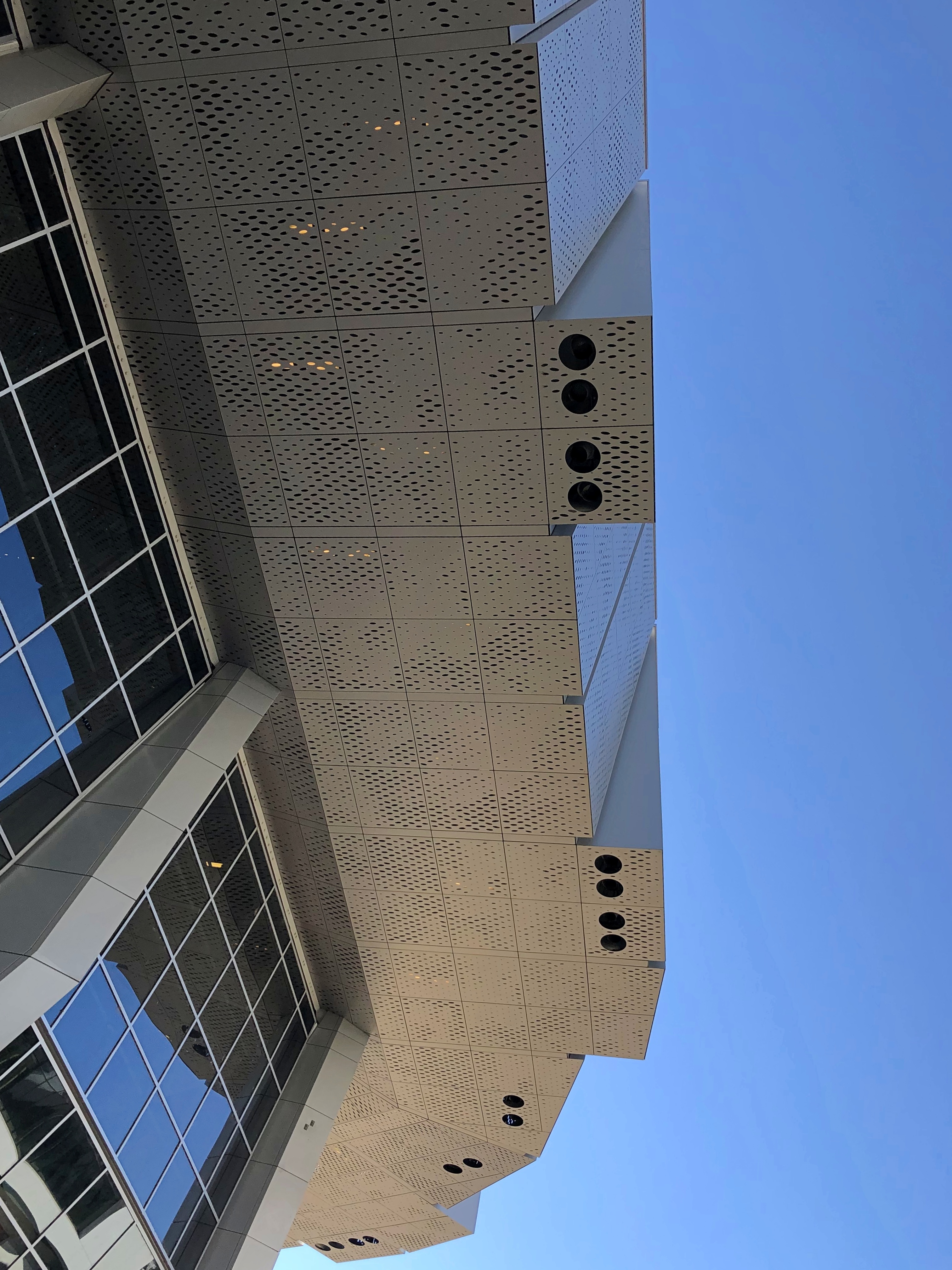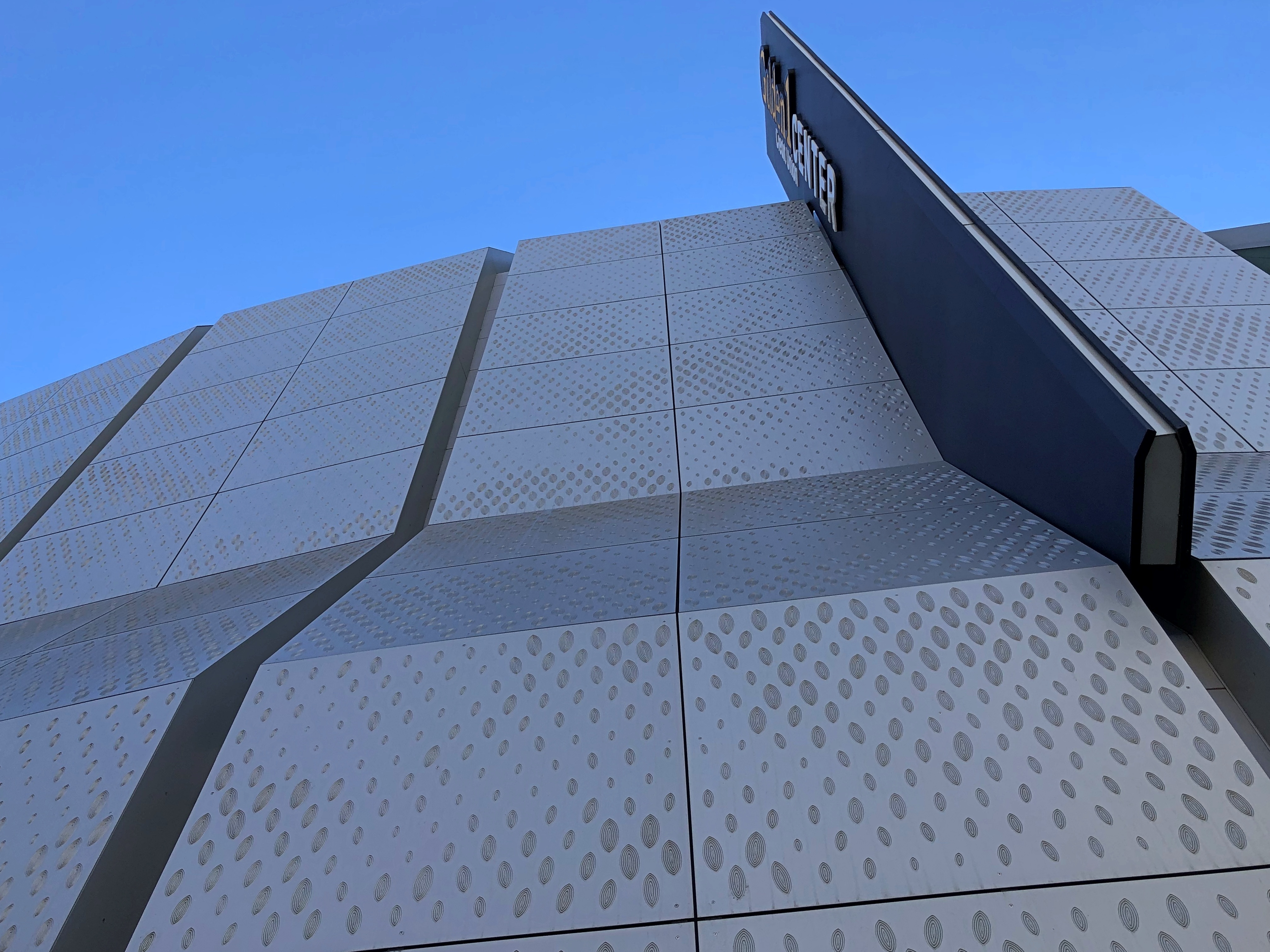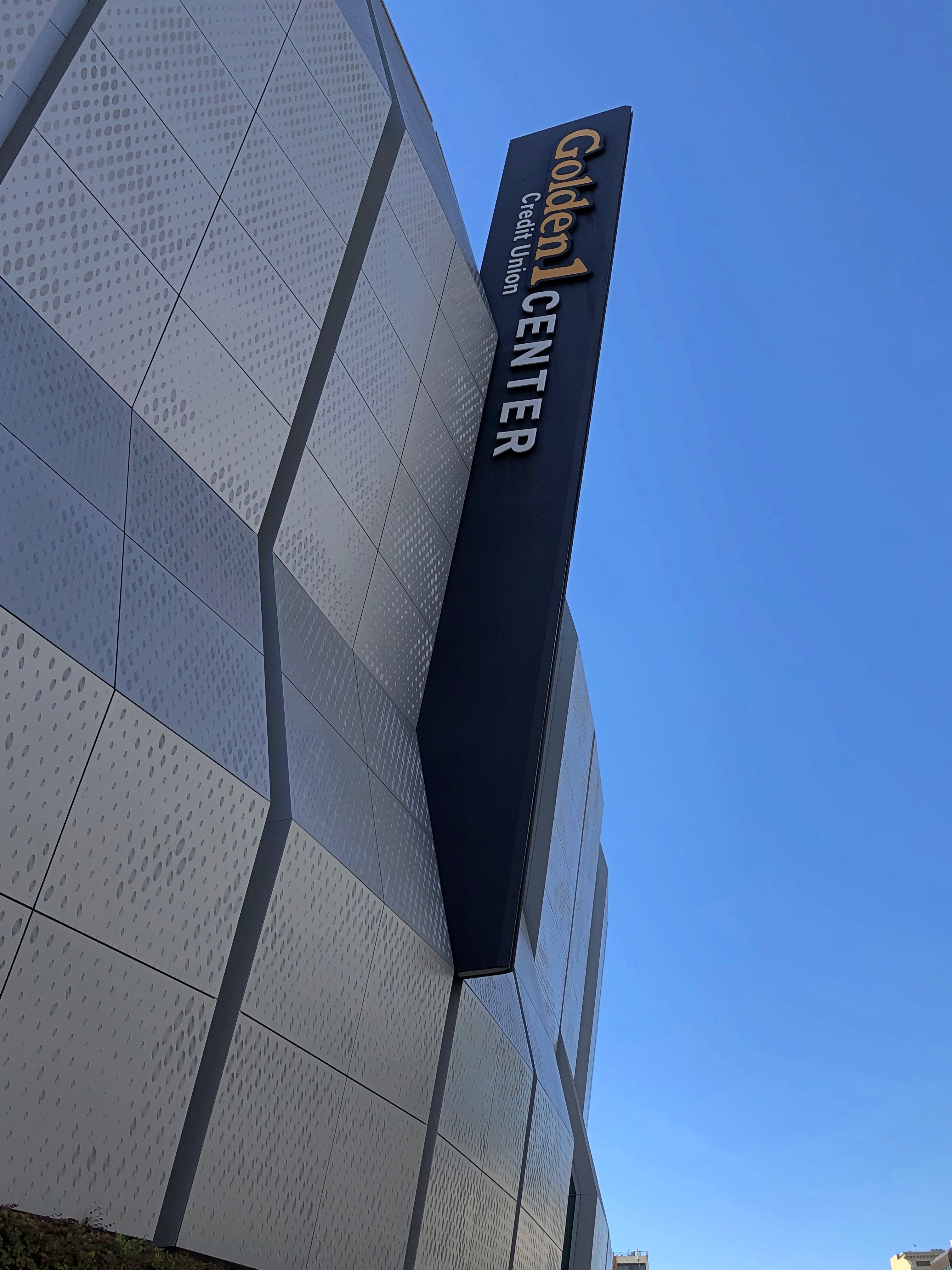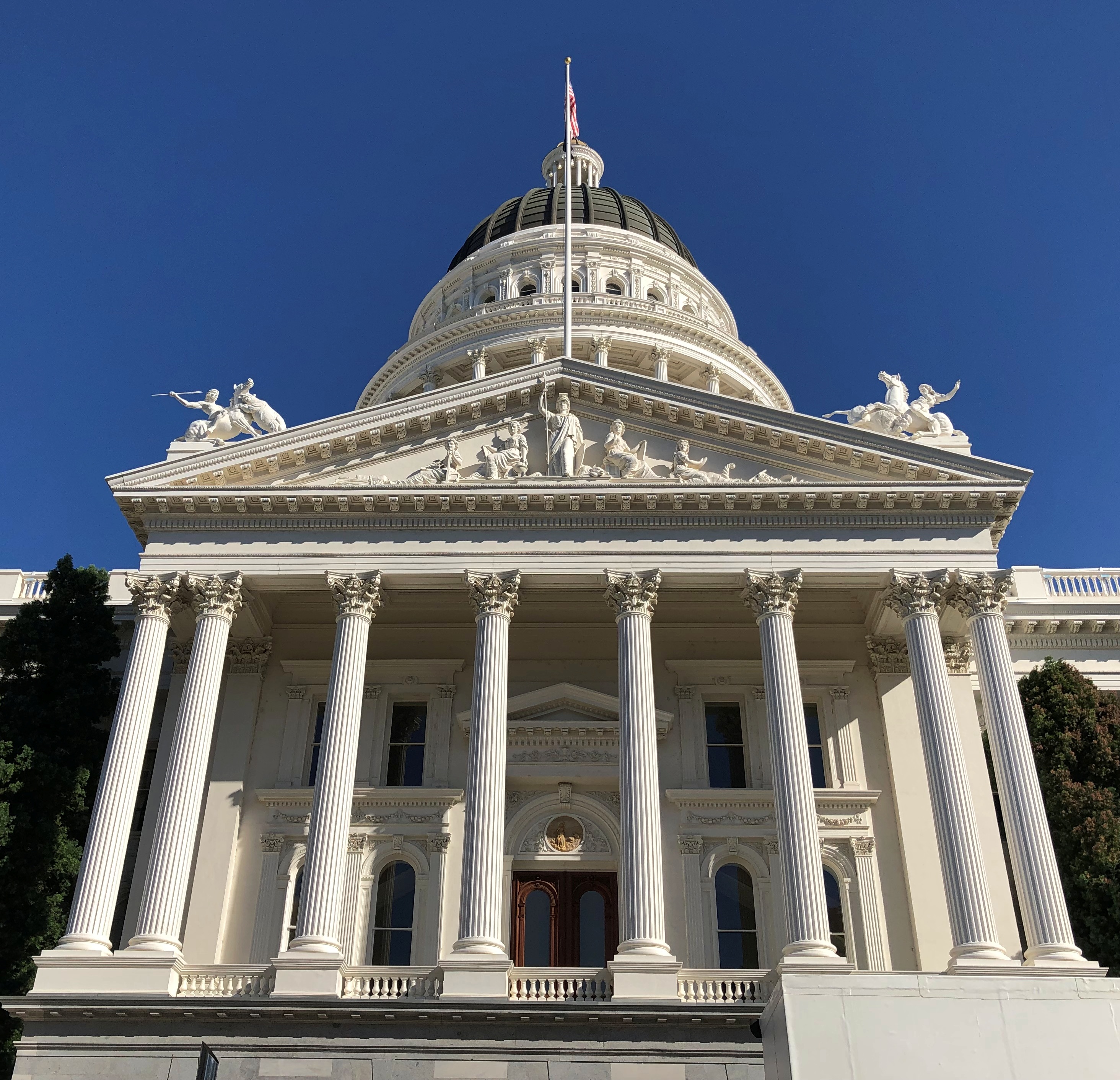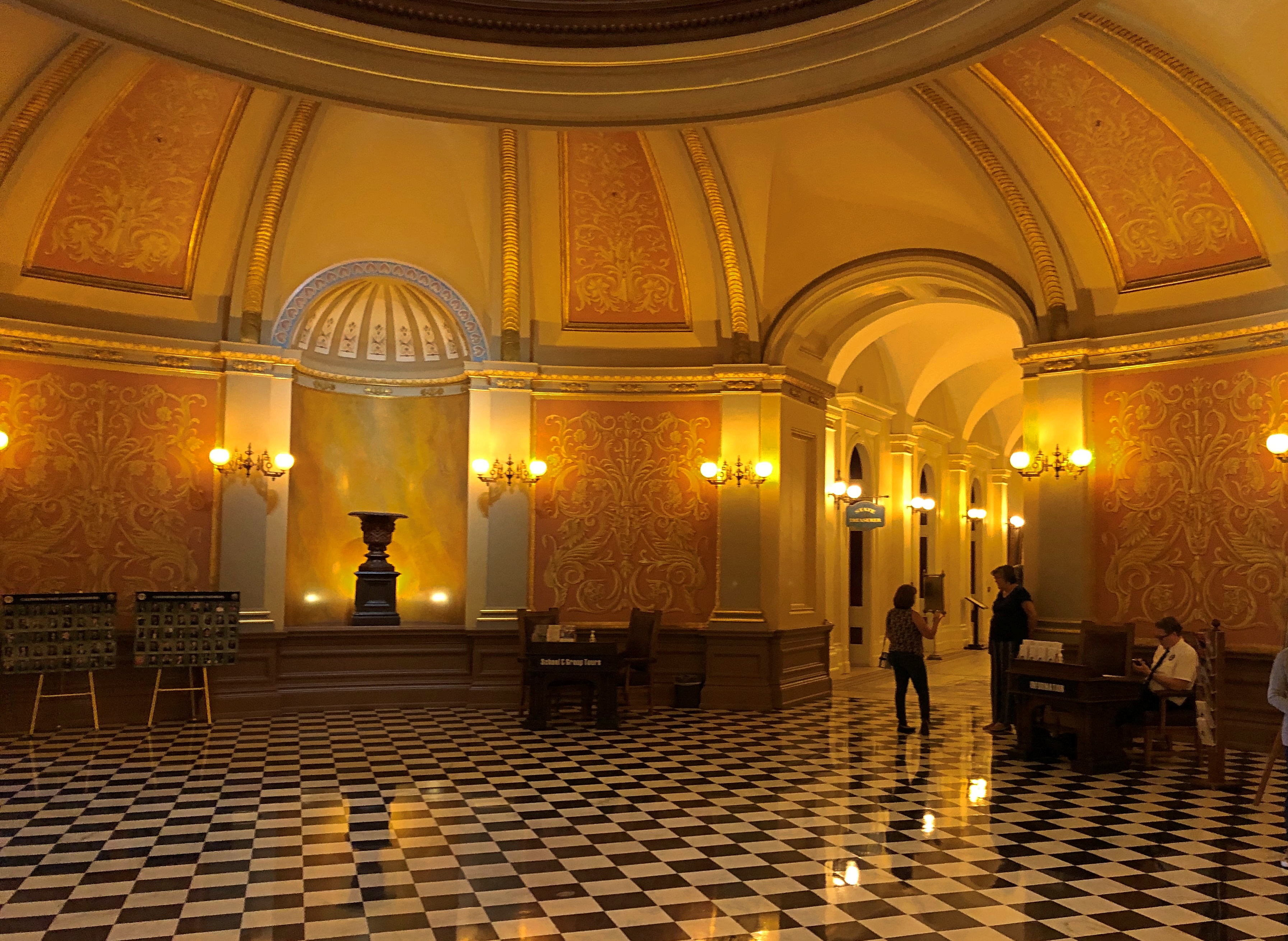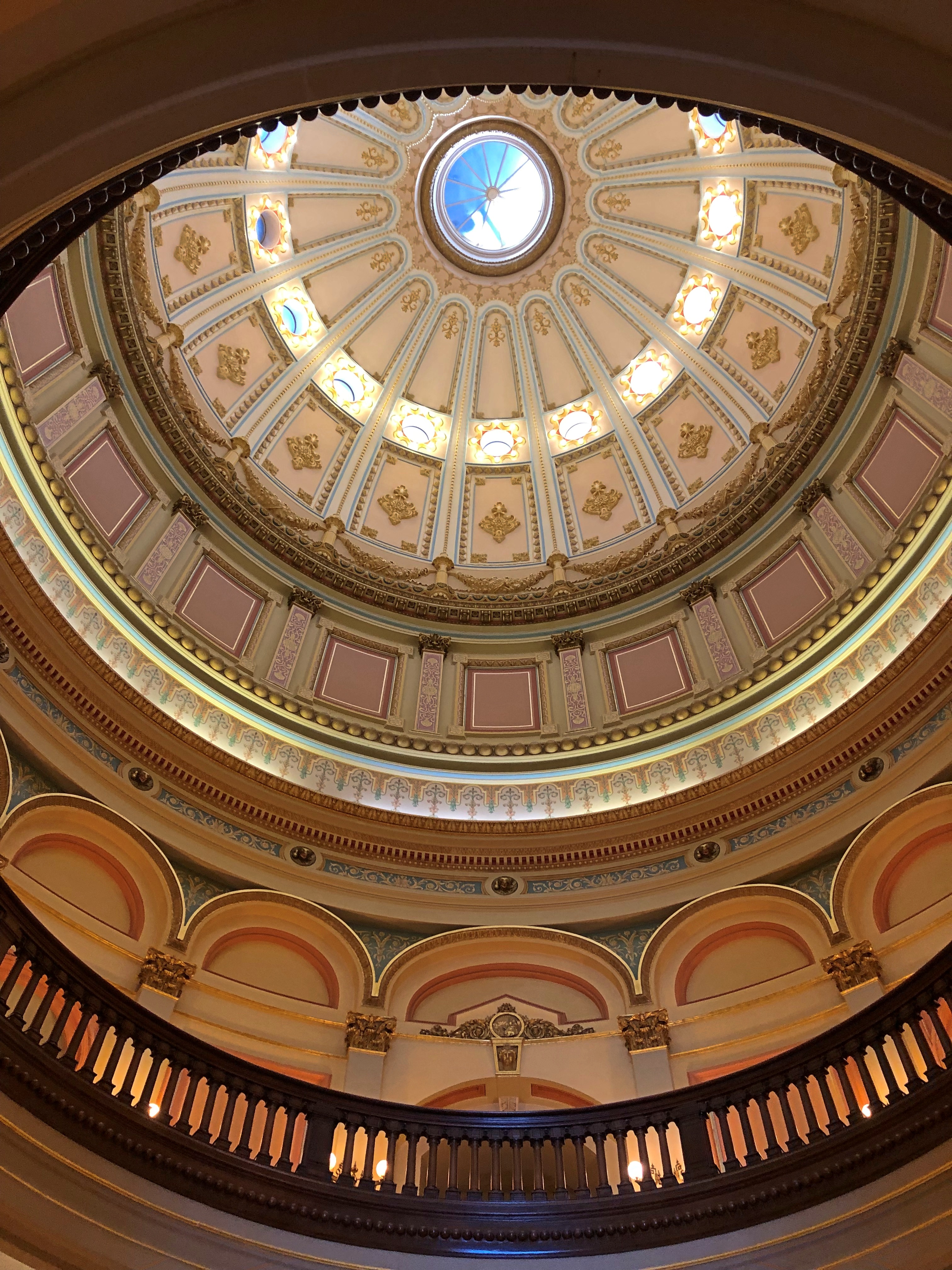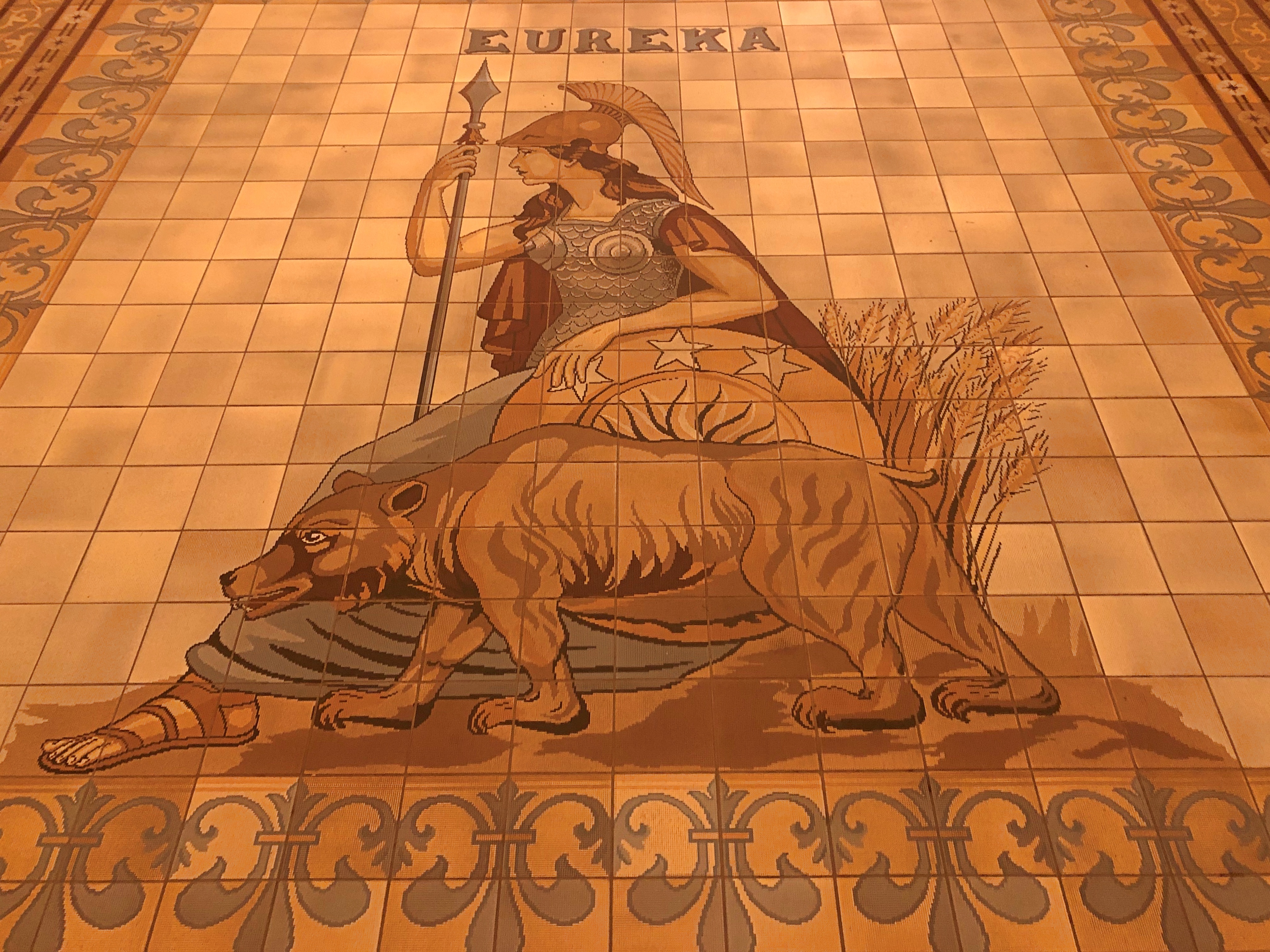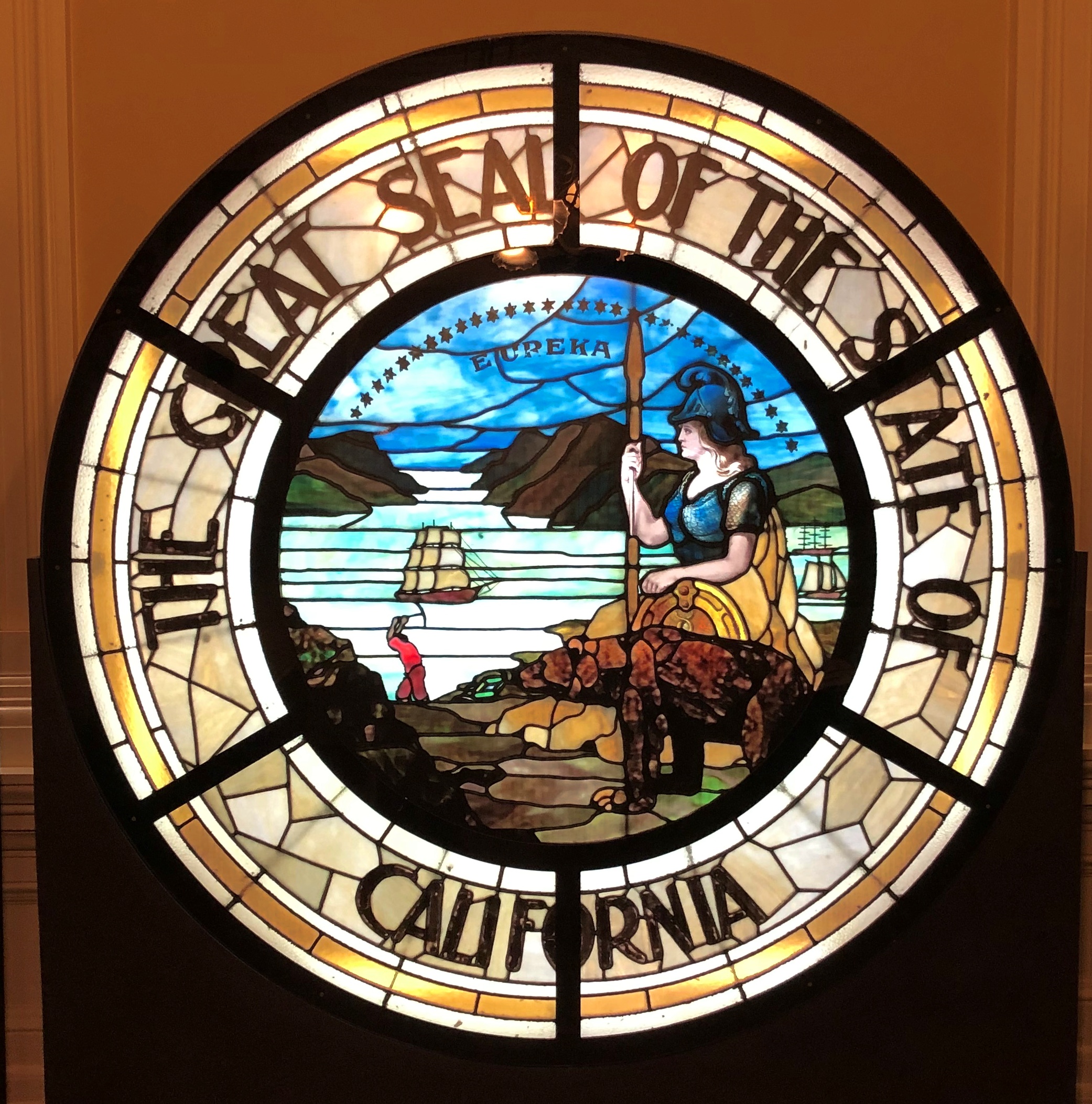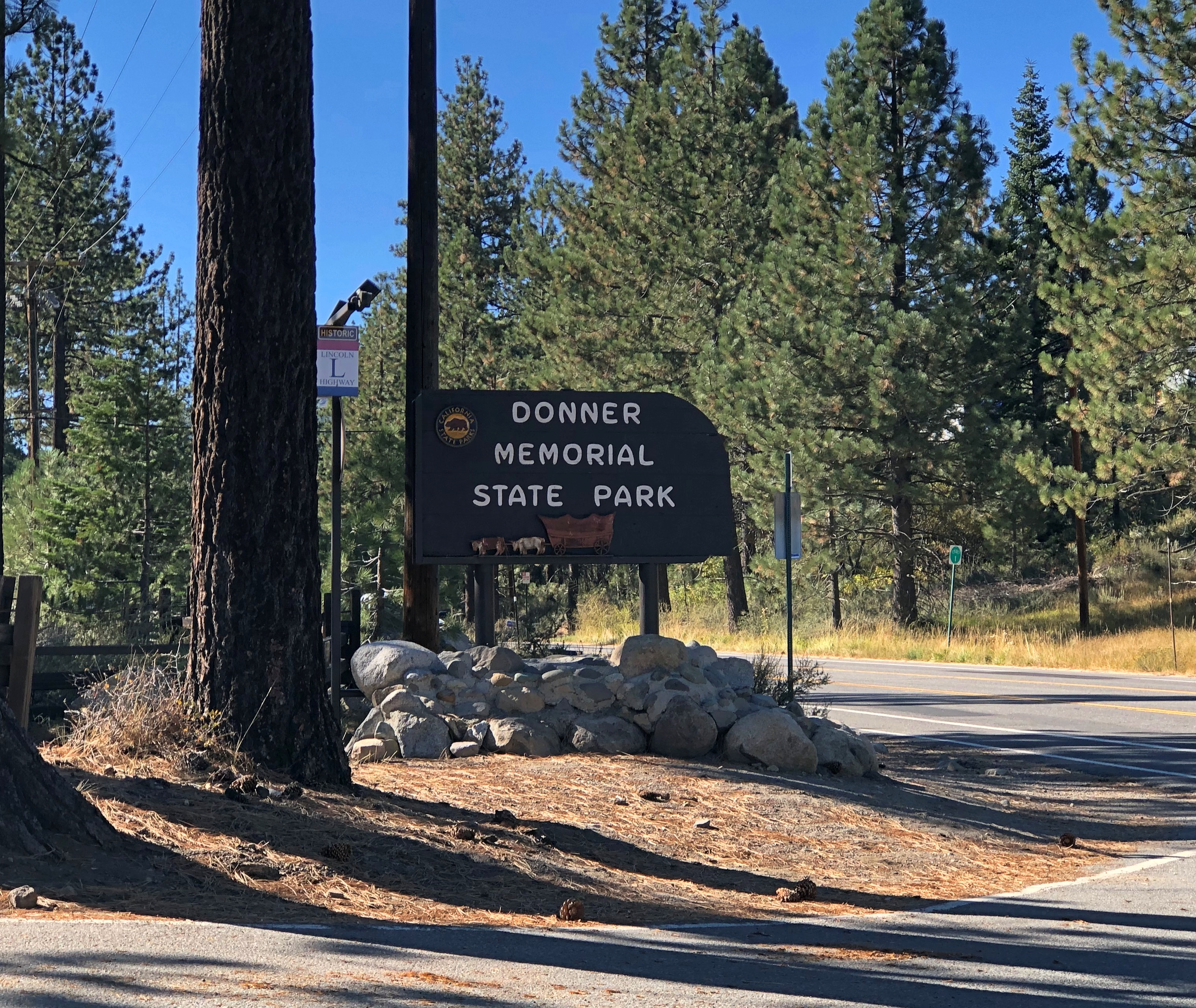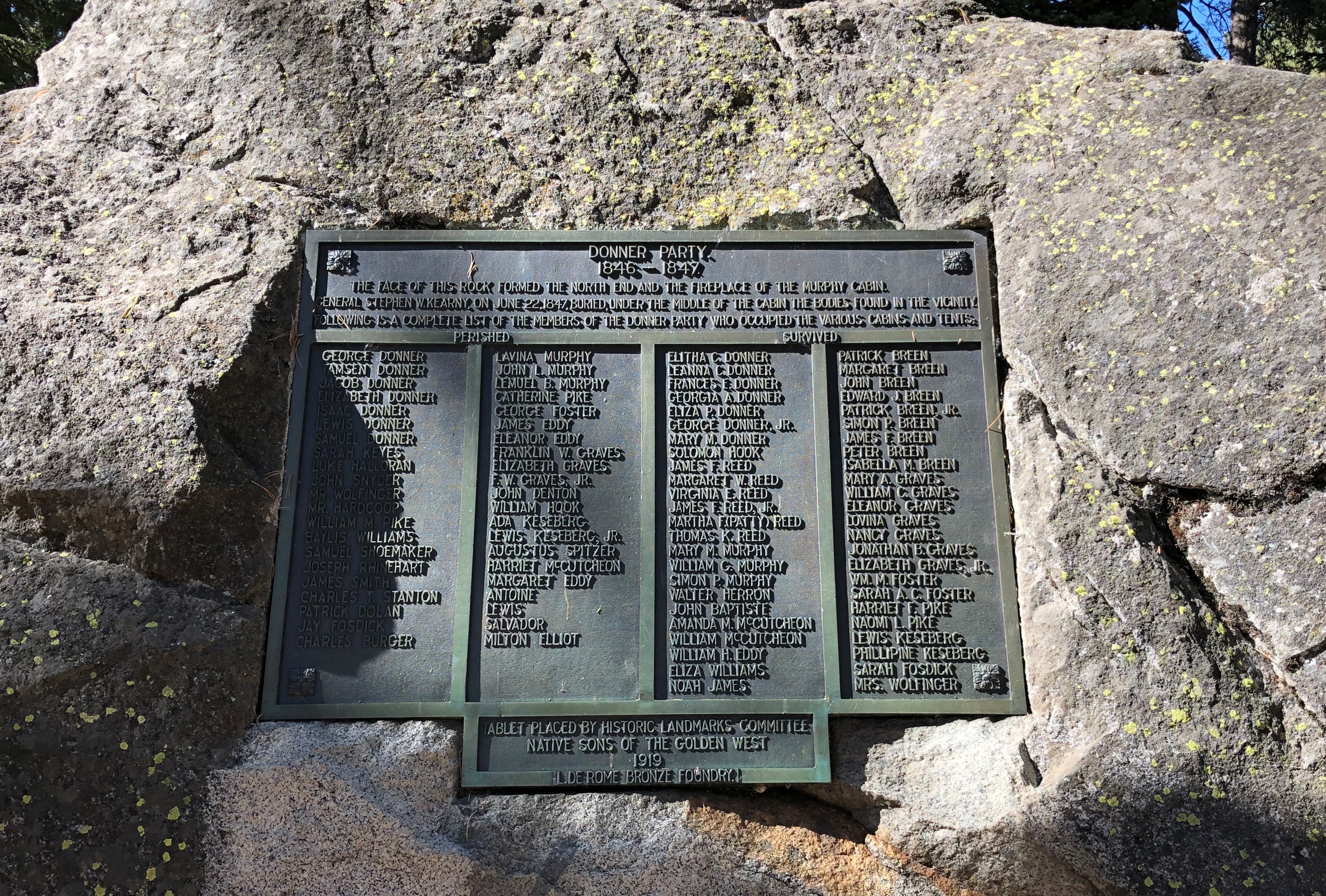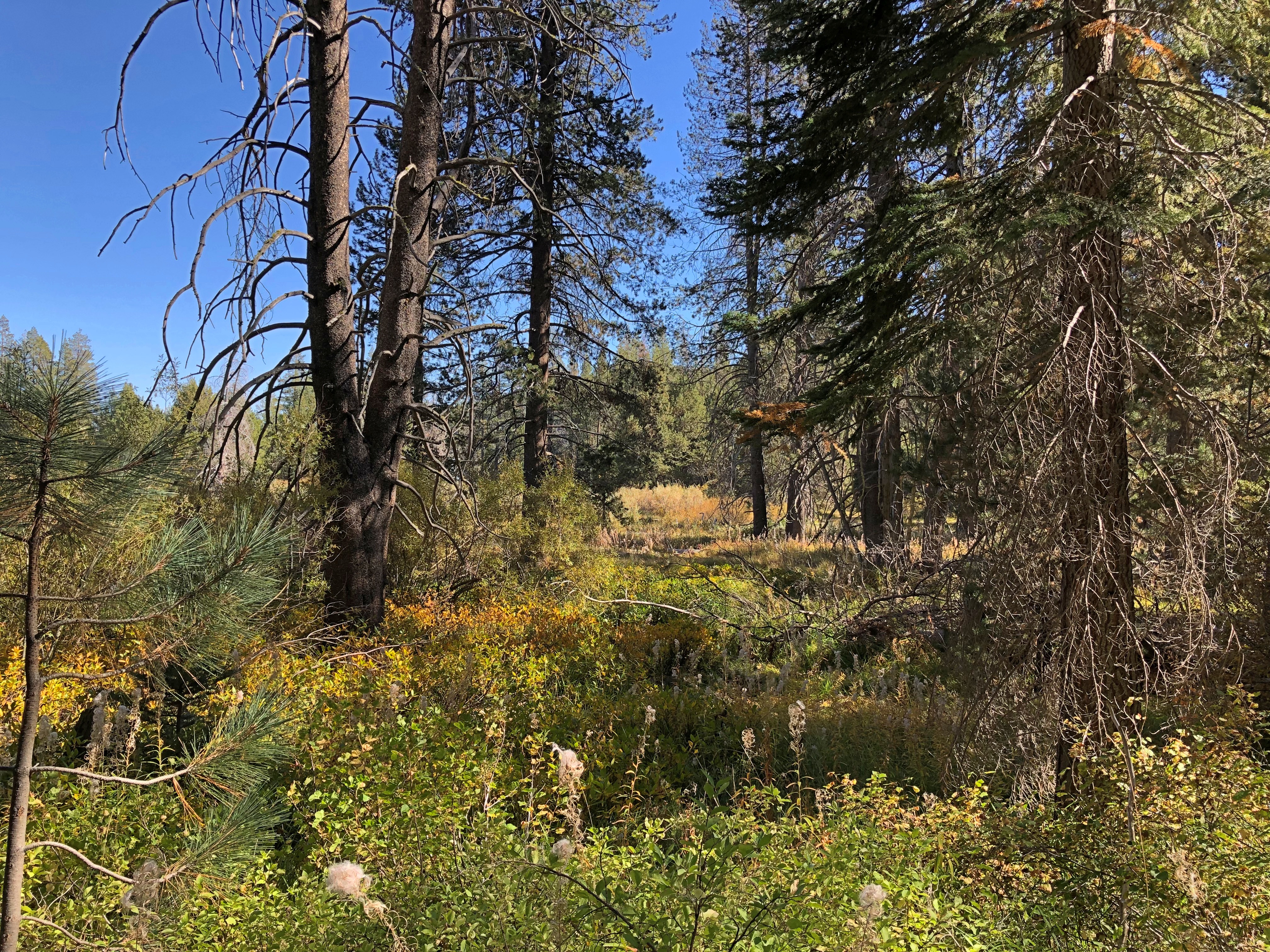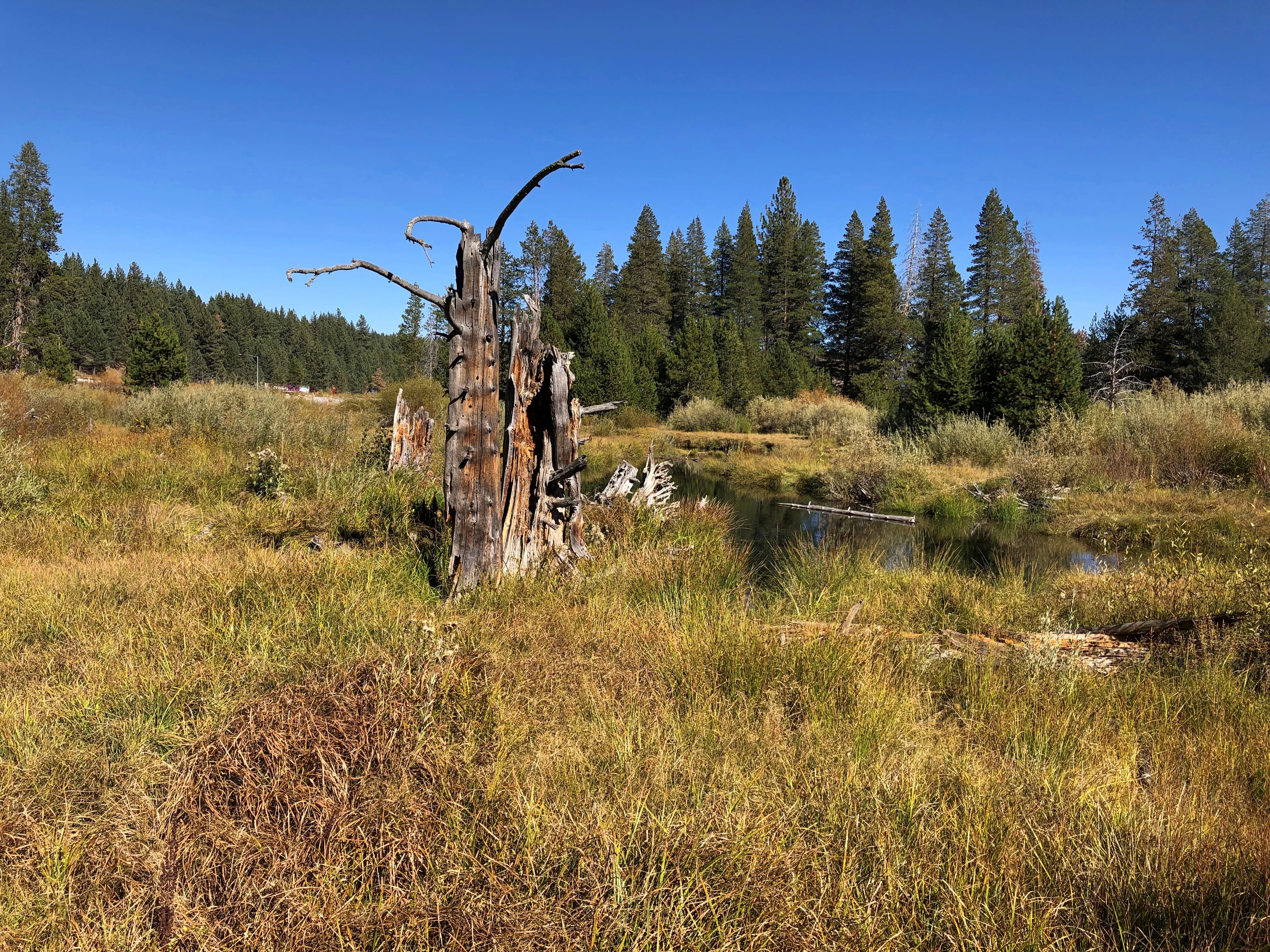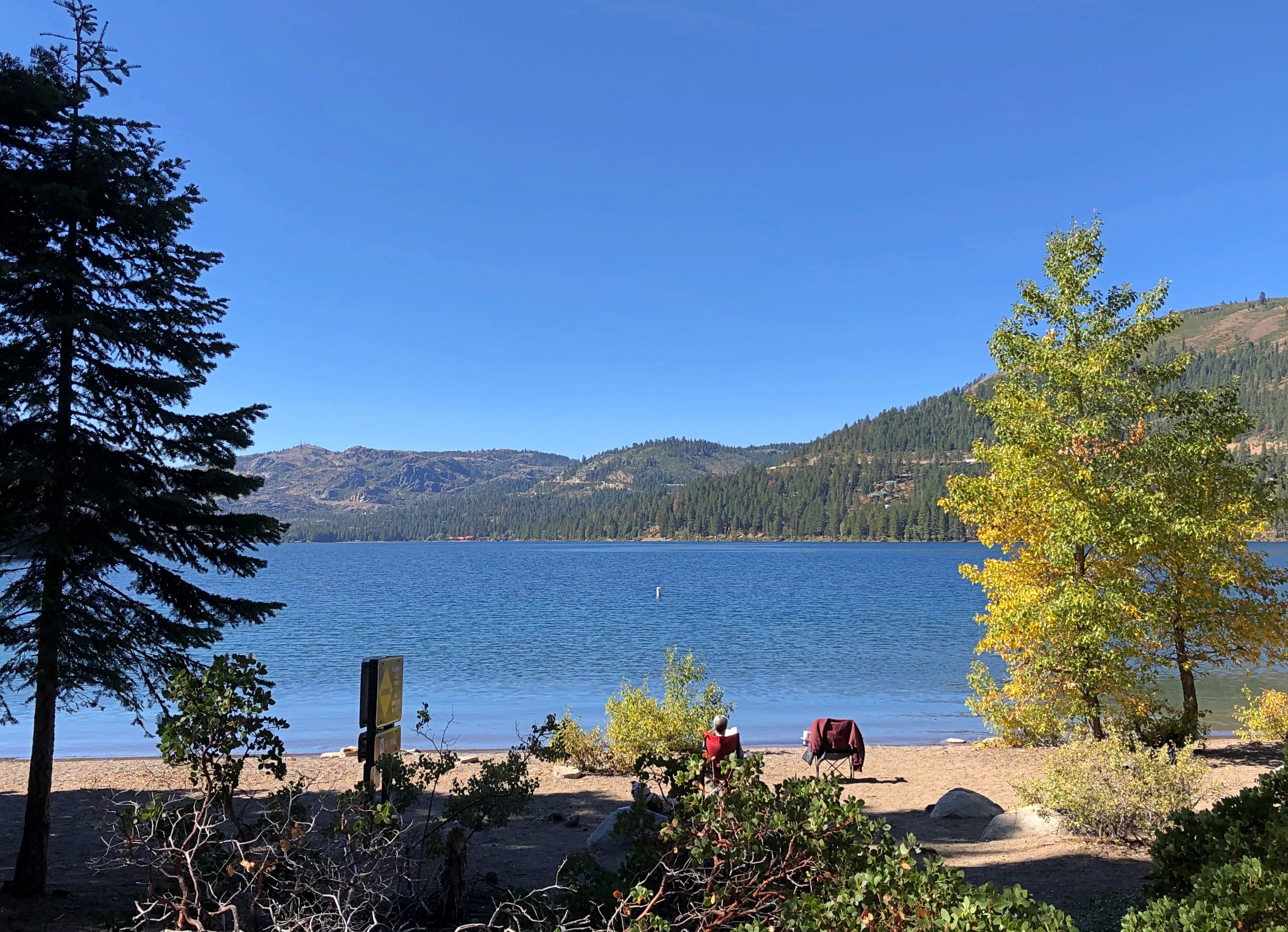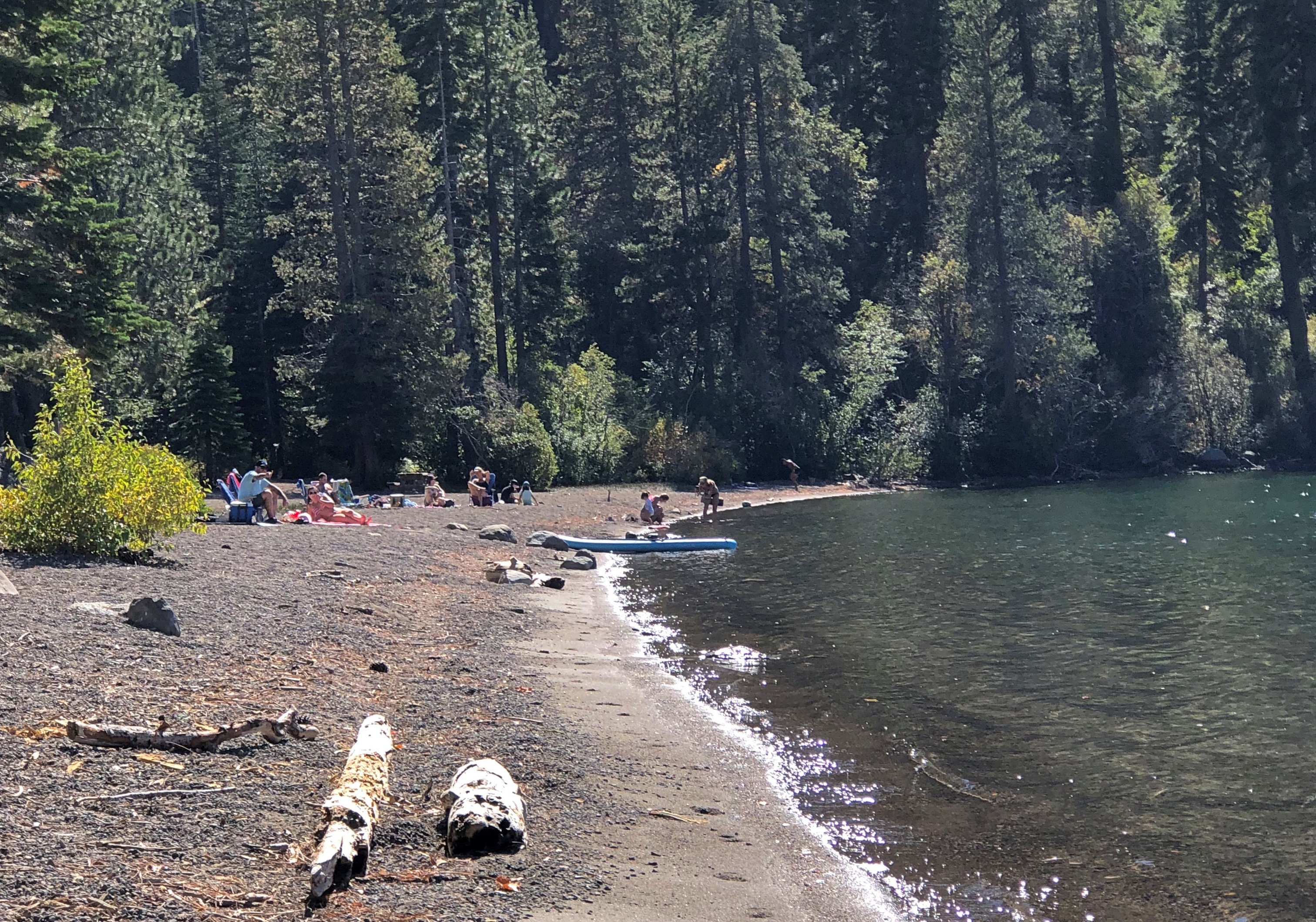This is the kind of detail that keeps the built environment interesting. A visible part of an alarm system of some earlier vintage, operable or not.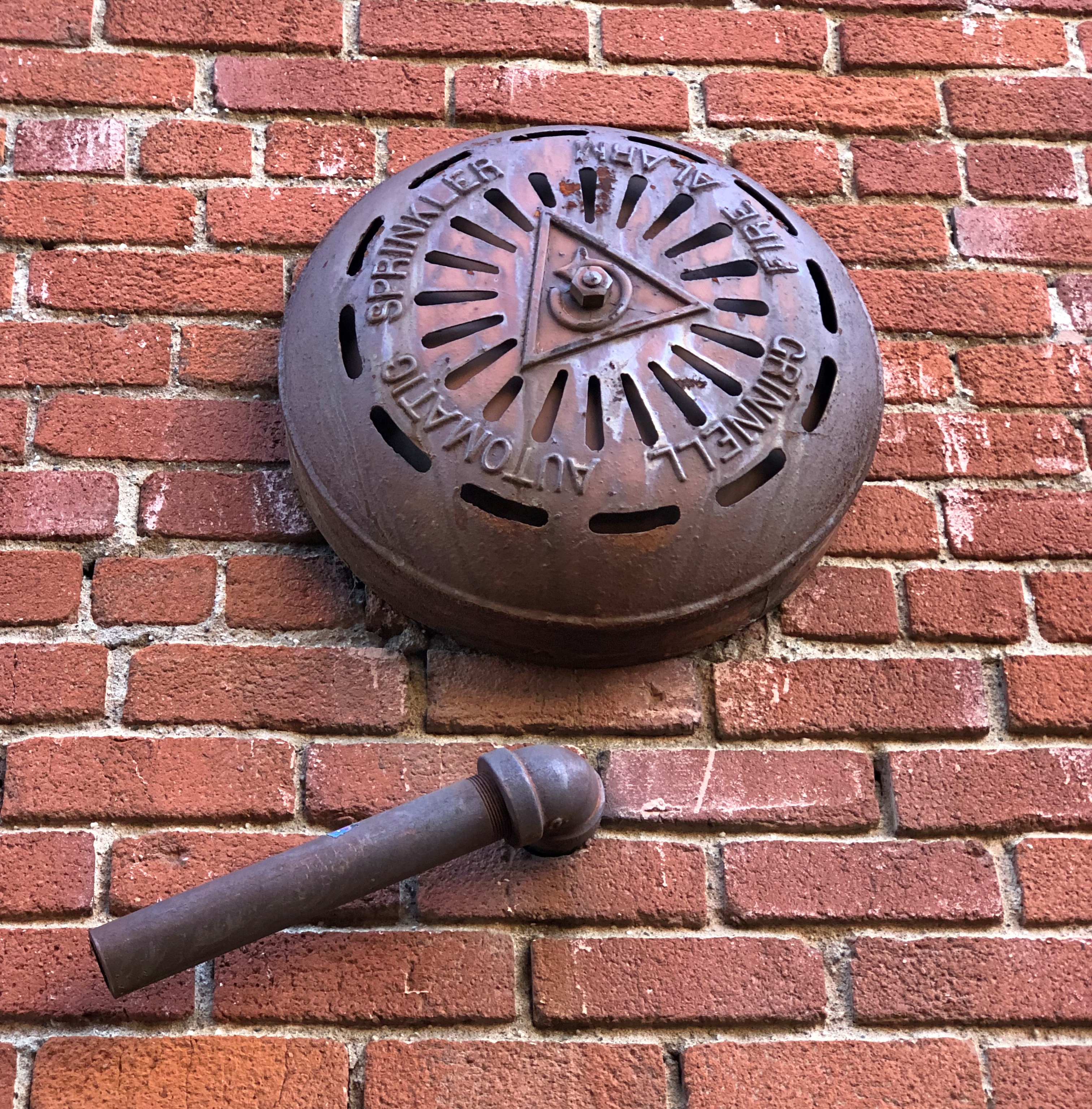
To be found in Placerville, California. You can also take a look at a small tower of some vintage in that town.
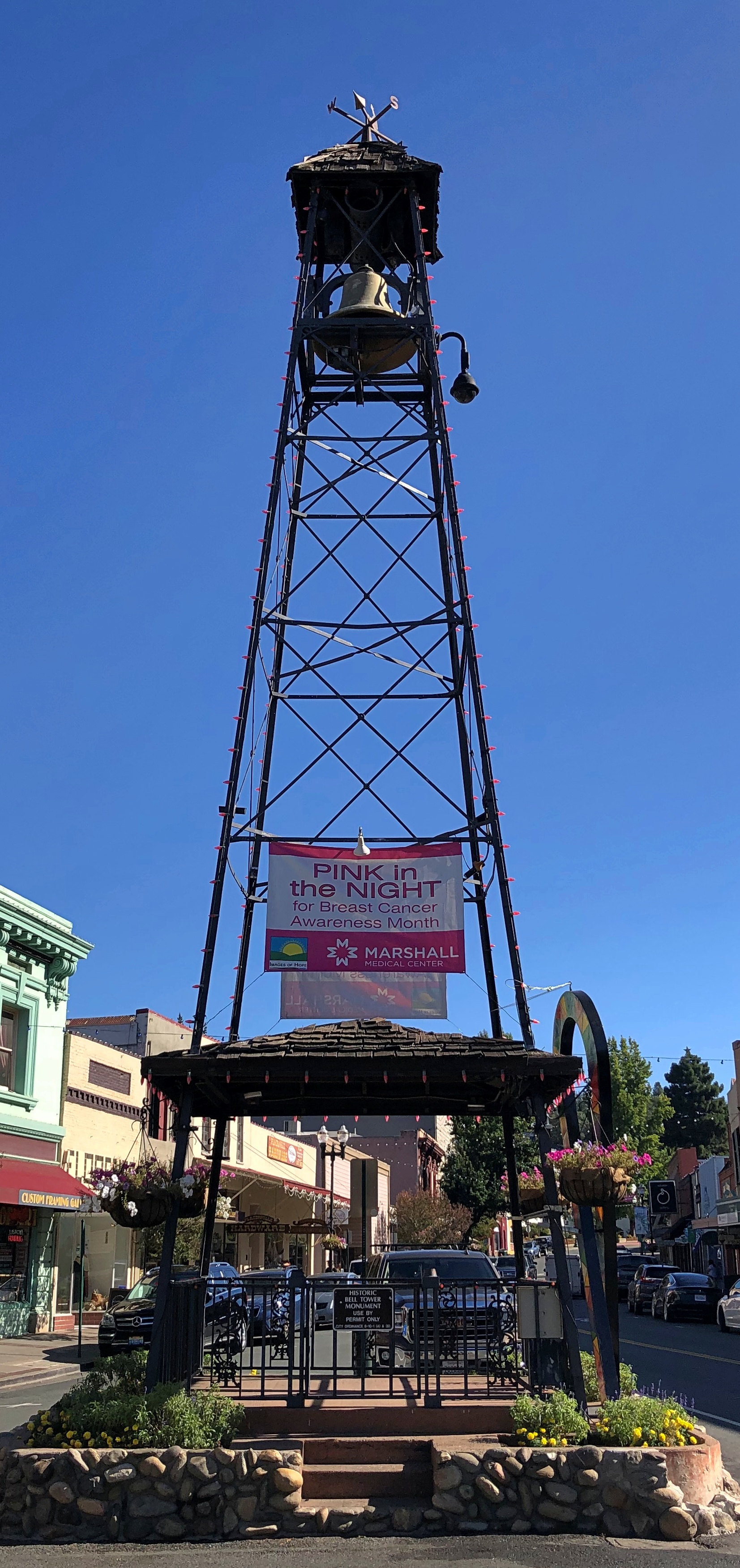
Placerville’s old bell tower. For use in the pre-electronic communication days, with a ring meaning something’s going on, come quick.
Wish I’d been hungry in Placerville, but no.
Some miles away, a Coloma plaque. I’m a fairly regular reader of plaques.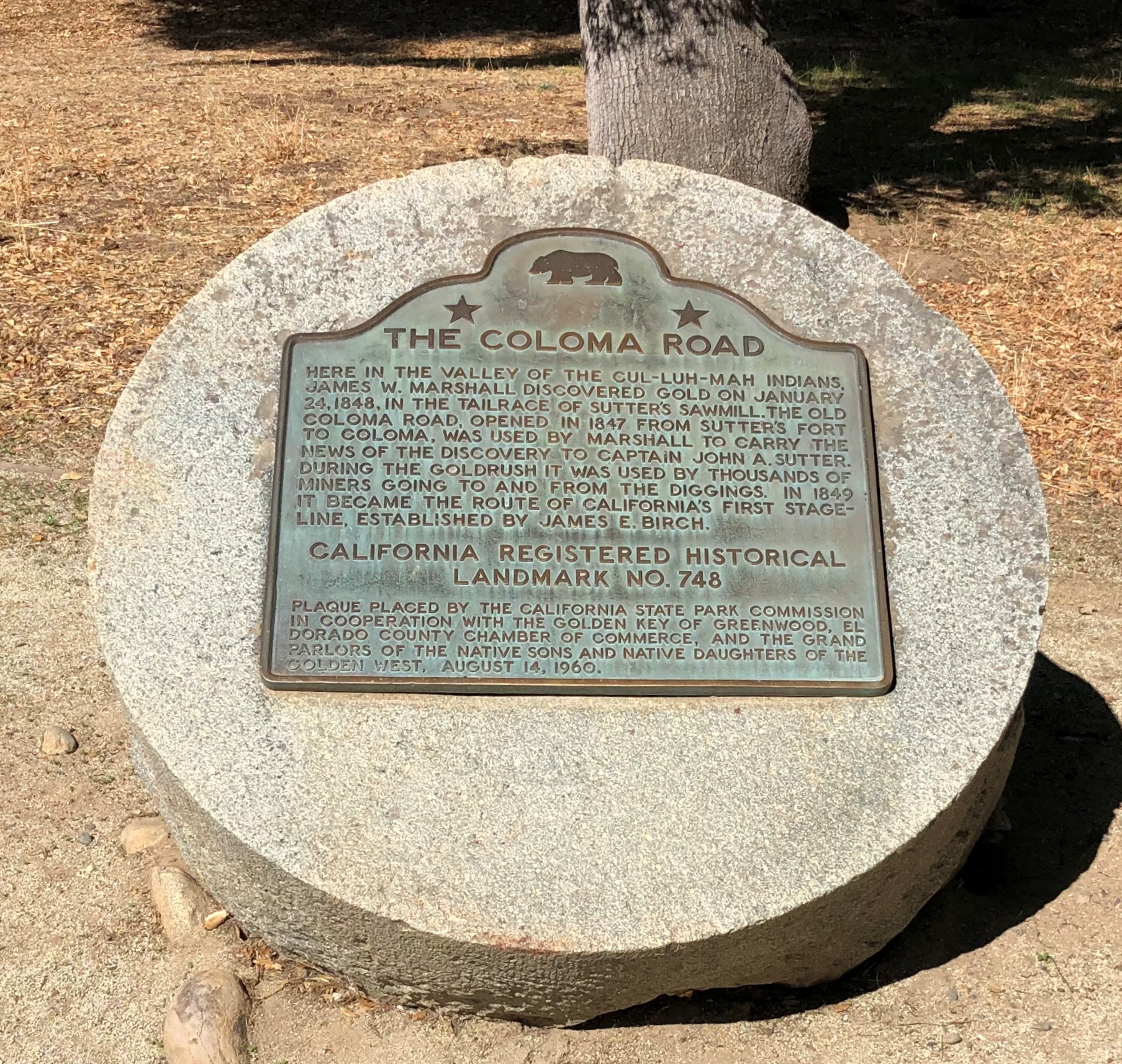
Another. I could post nothing but plaques, but that would be more granular than I want to be.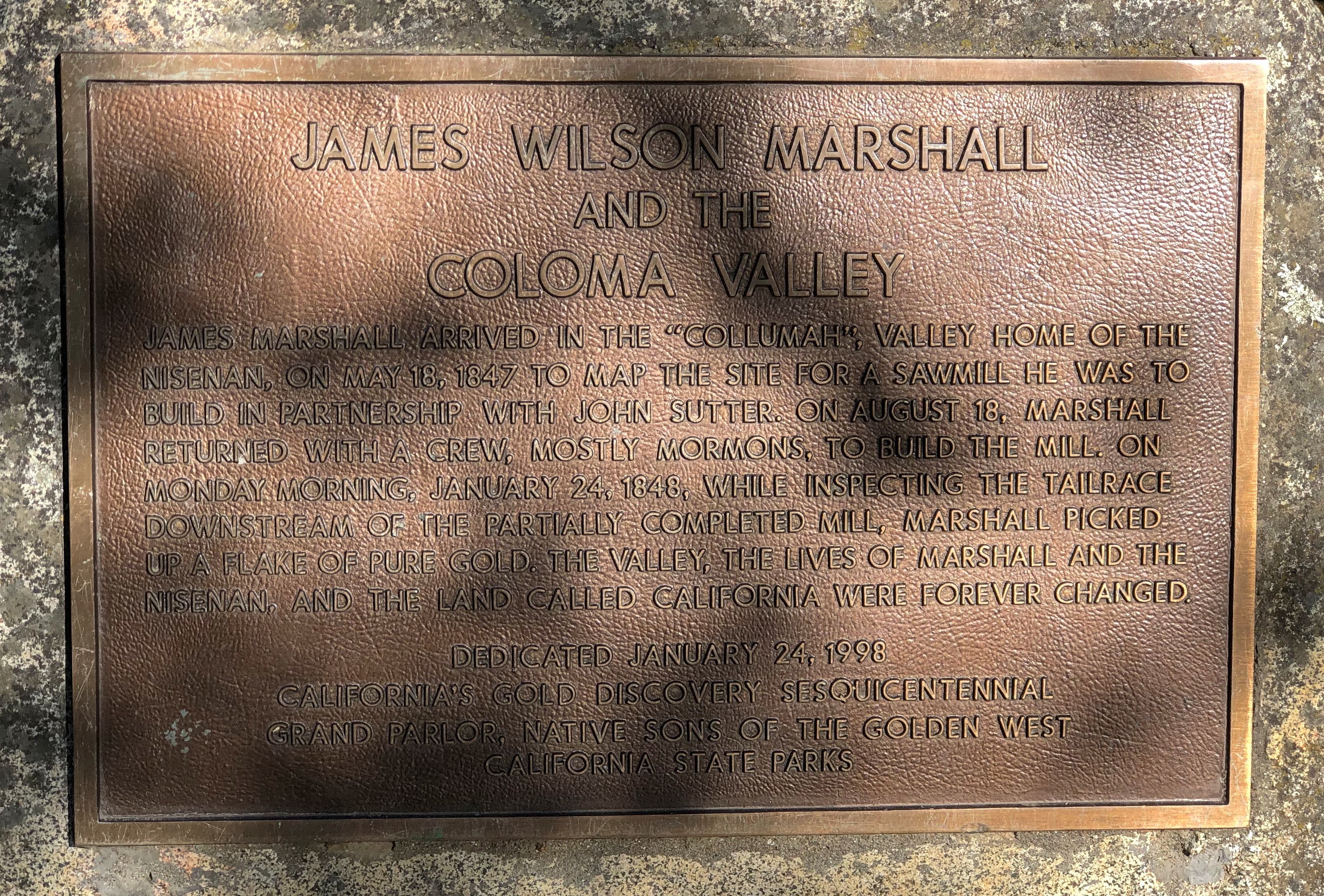
It’s a good-looking part of California anyway.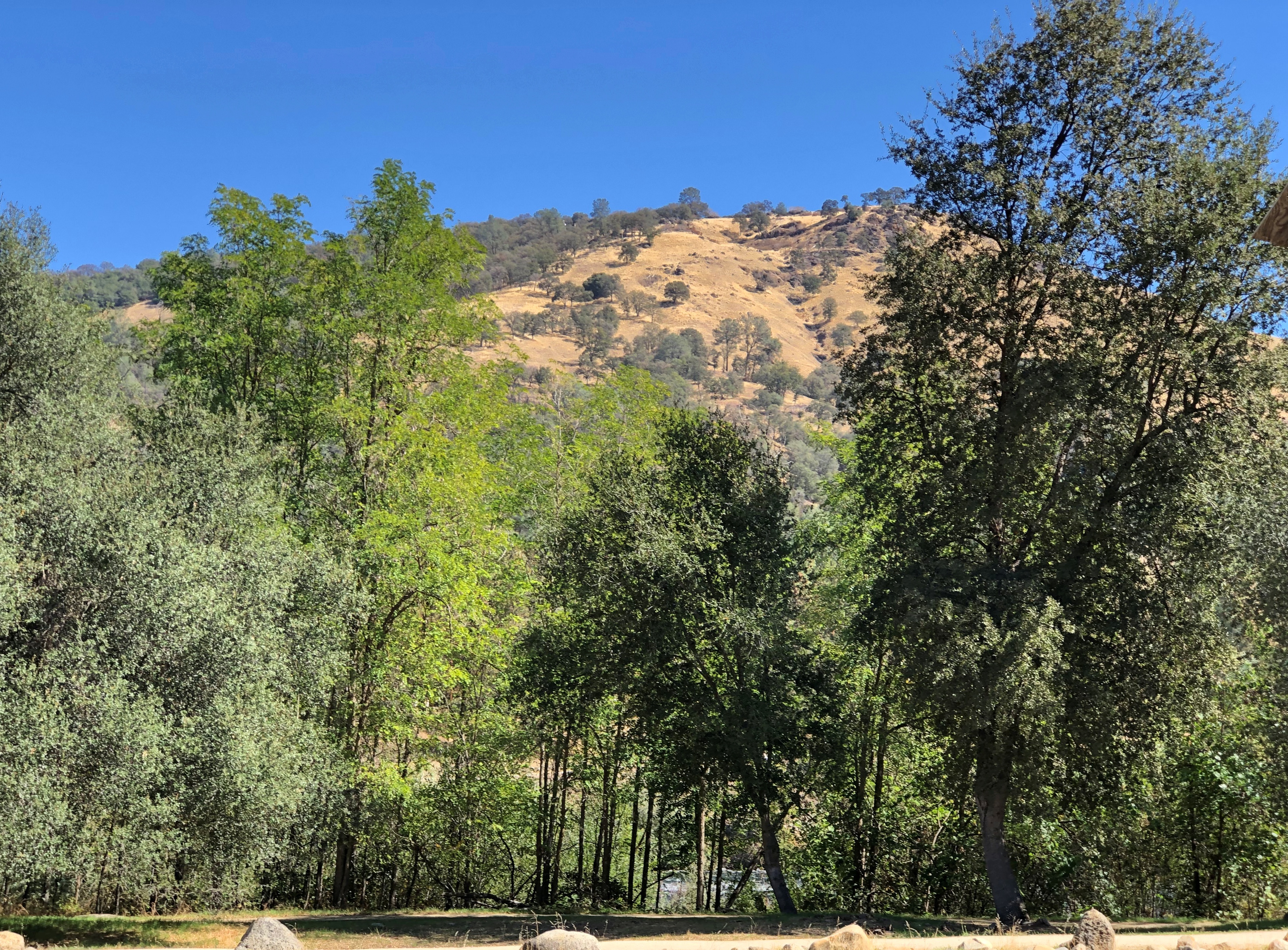
With recreational opportunities.
Mark Twain on Lake Tahoe (from Roughing It): “At last Lake Tahoe burst upon us, a noble sheet of blue water lifted some 6,000 feet above the level of the sea, and walled in by a rim of snow-clad mountain peaks that towered aloft a full 3,000 feet higher still.
“As it lay there with the shadows of the mountains, brilliantly photographed upon its surface, I thought it must surely be the fairest picture the whole earth affords.”
Enjoyable vistas for sure. It was good to see other people there.
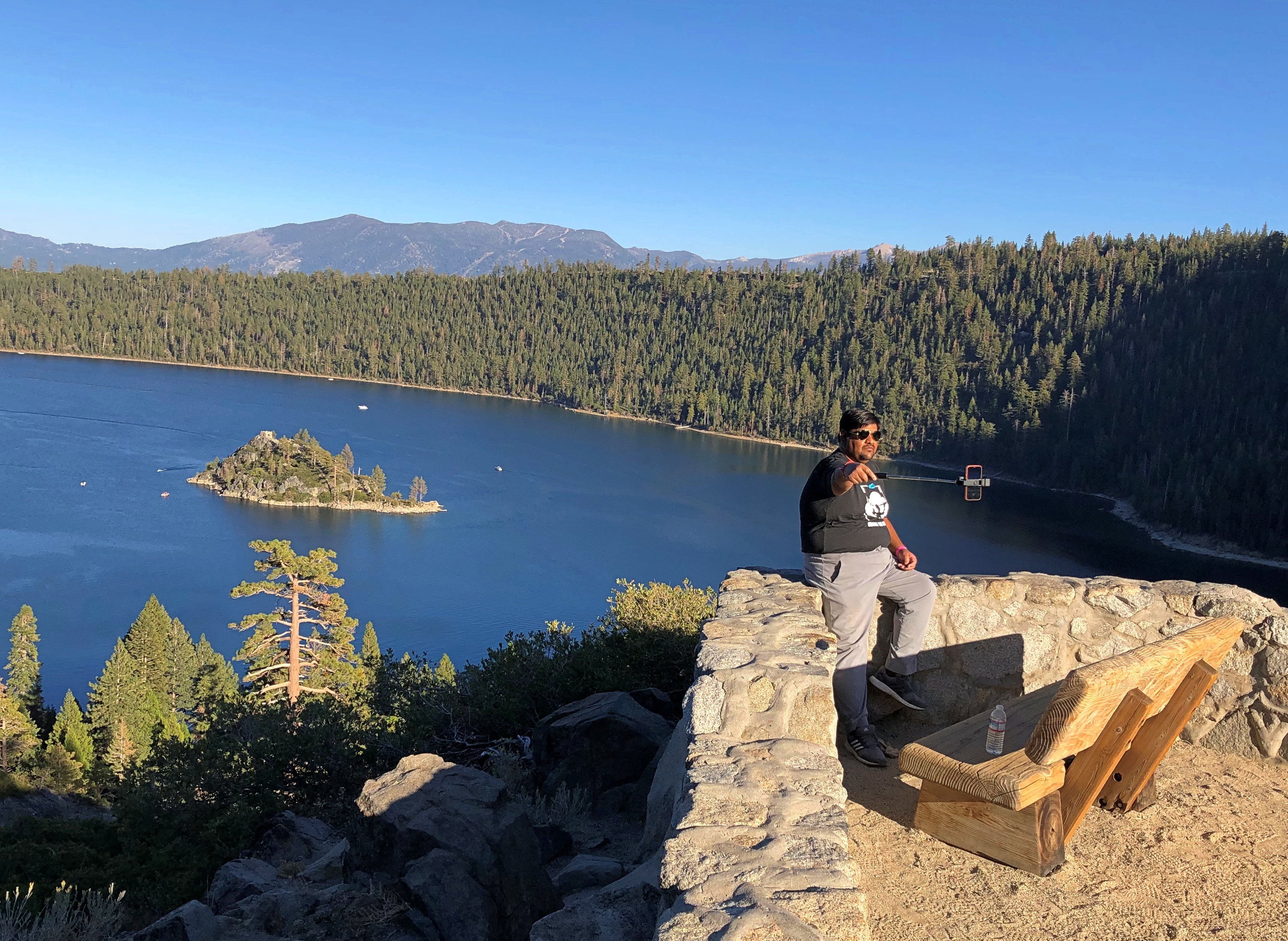
I had breakfast my first morning in Reno at a restaurant for old people — except that’s me now, isn’t it? But on a weekday mid-morning, I was one of the younger patrons. Decent food, though a touch expensive (a contagion from California, no doubt, plus the inflation du jour).
After I finished, I went out to leave, but noticed a sign I had to see, not far away. I took a closer look.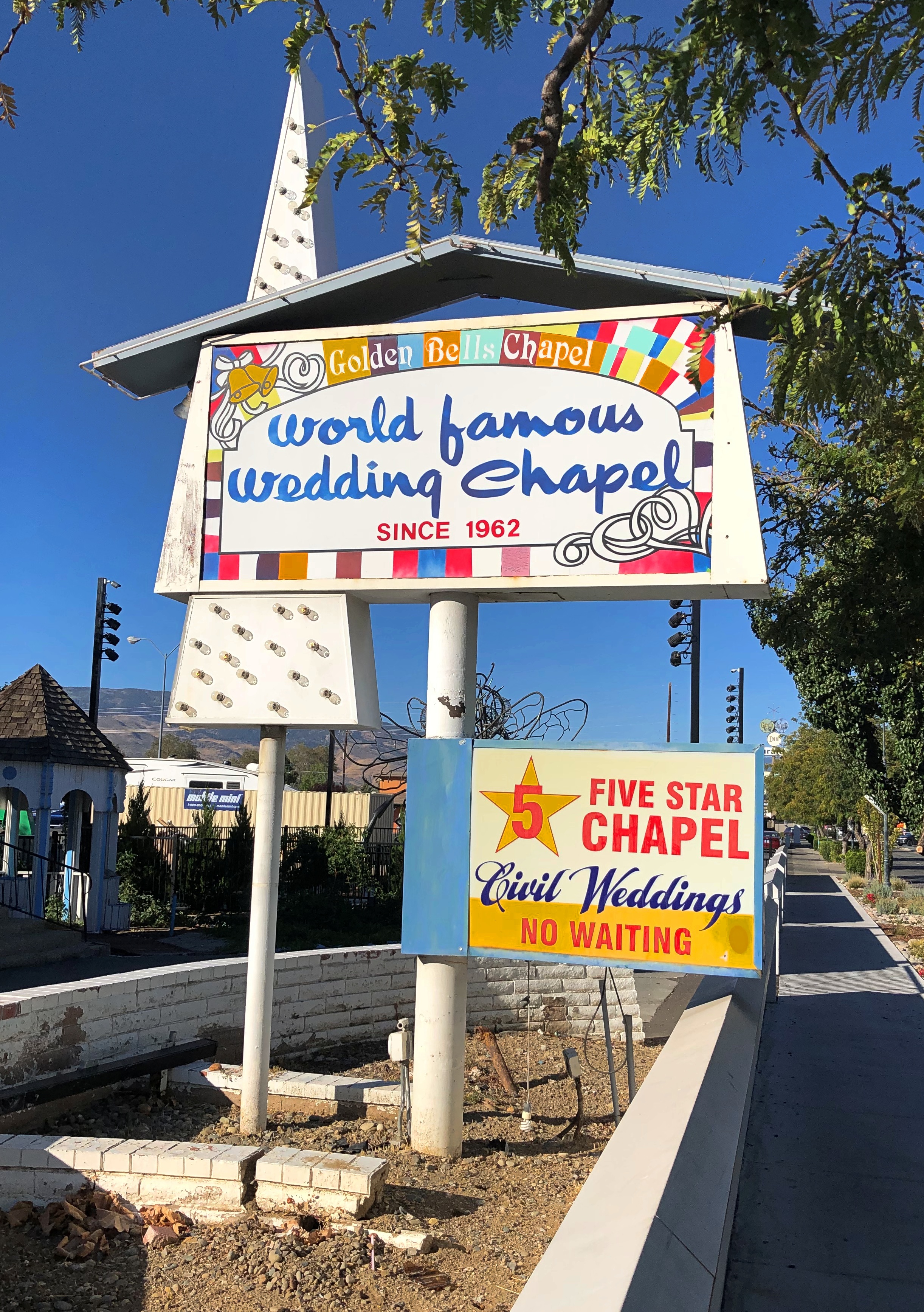
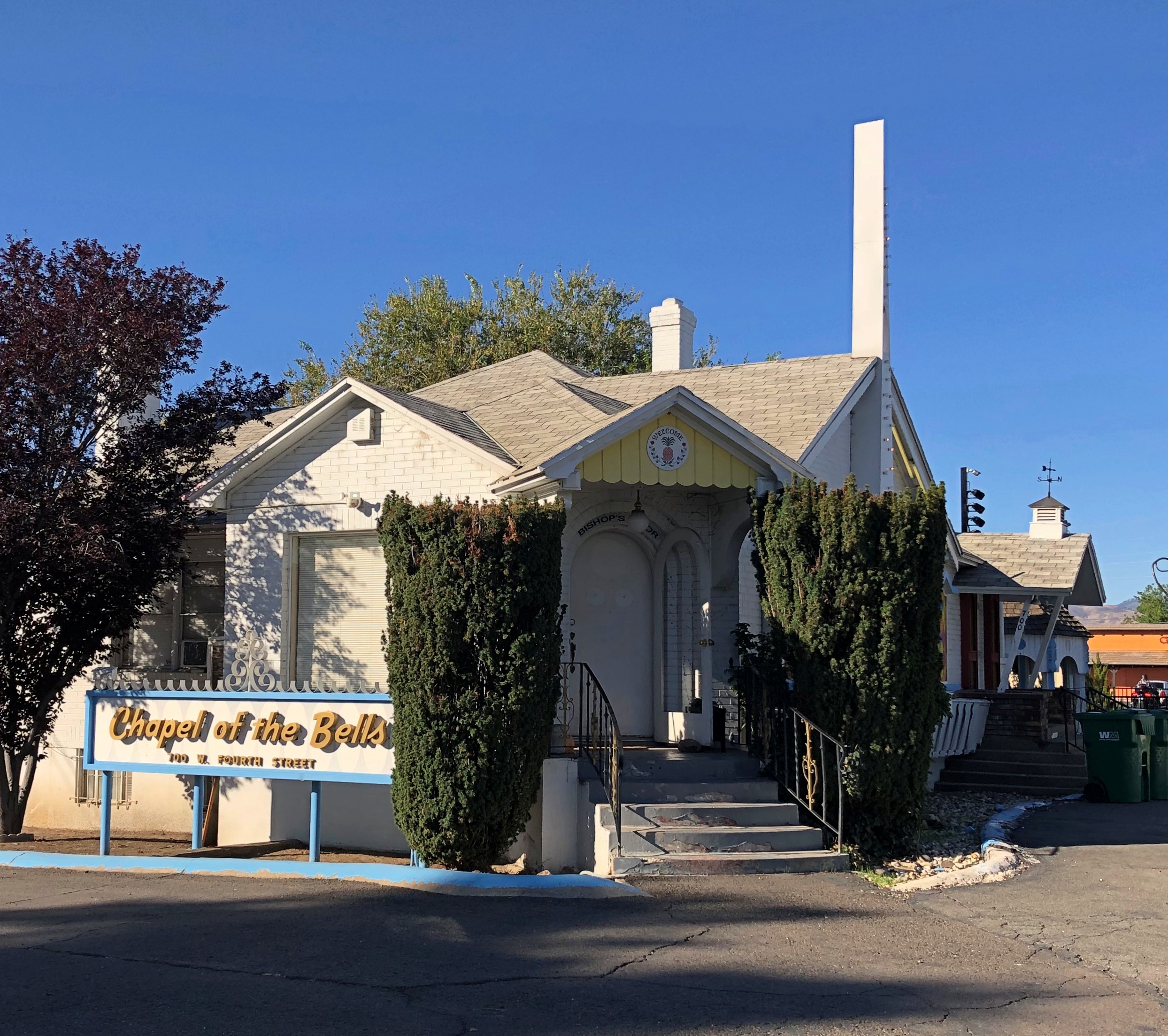
Not in the market, but someone must be. If that isn’t local color, I don’t know what is.
When serendipity is with you on the road, that kind of sighting leads to others. That’s what happened that morning in Reno. This was nearby the wedding chapel.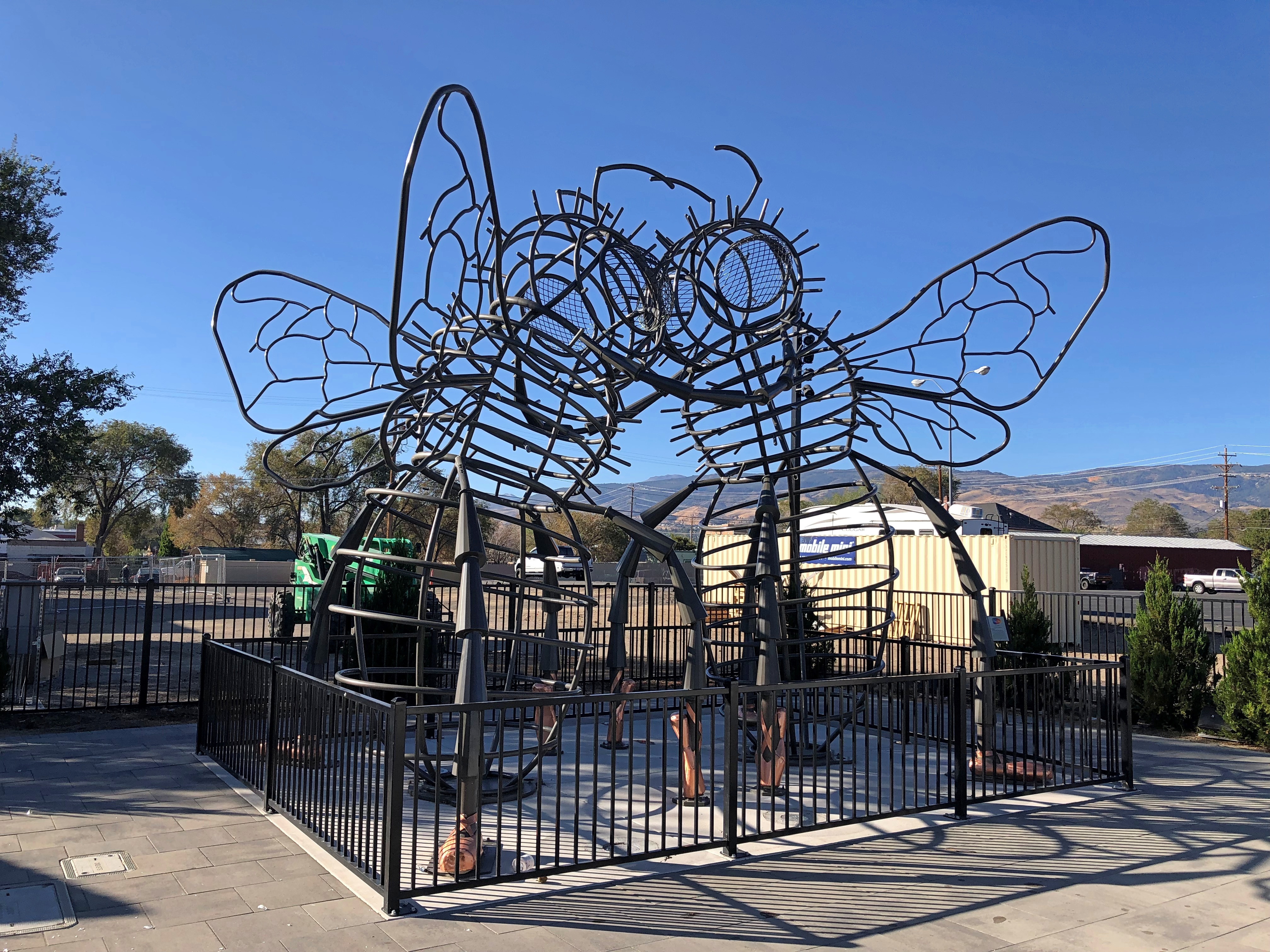
“Bee Dance” by Andrea Greenlees (2019), according to its sign, which also said it was created at Burning Man that year.
On the next block — all this was on West Fourth Street in Reno — was a closed off place called Glow Plaza, an outdoor event space that only opened this year. Well, open for concerts on the weekends. It wasn’t open for me to look around, though there was some construction going on at an adjacent site (probably new apartments), so maybe that restriction was just temporary.
Anyway, I got a look from the sidewalk. New-looking sculptures.
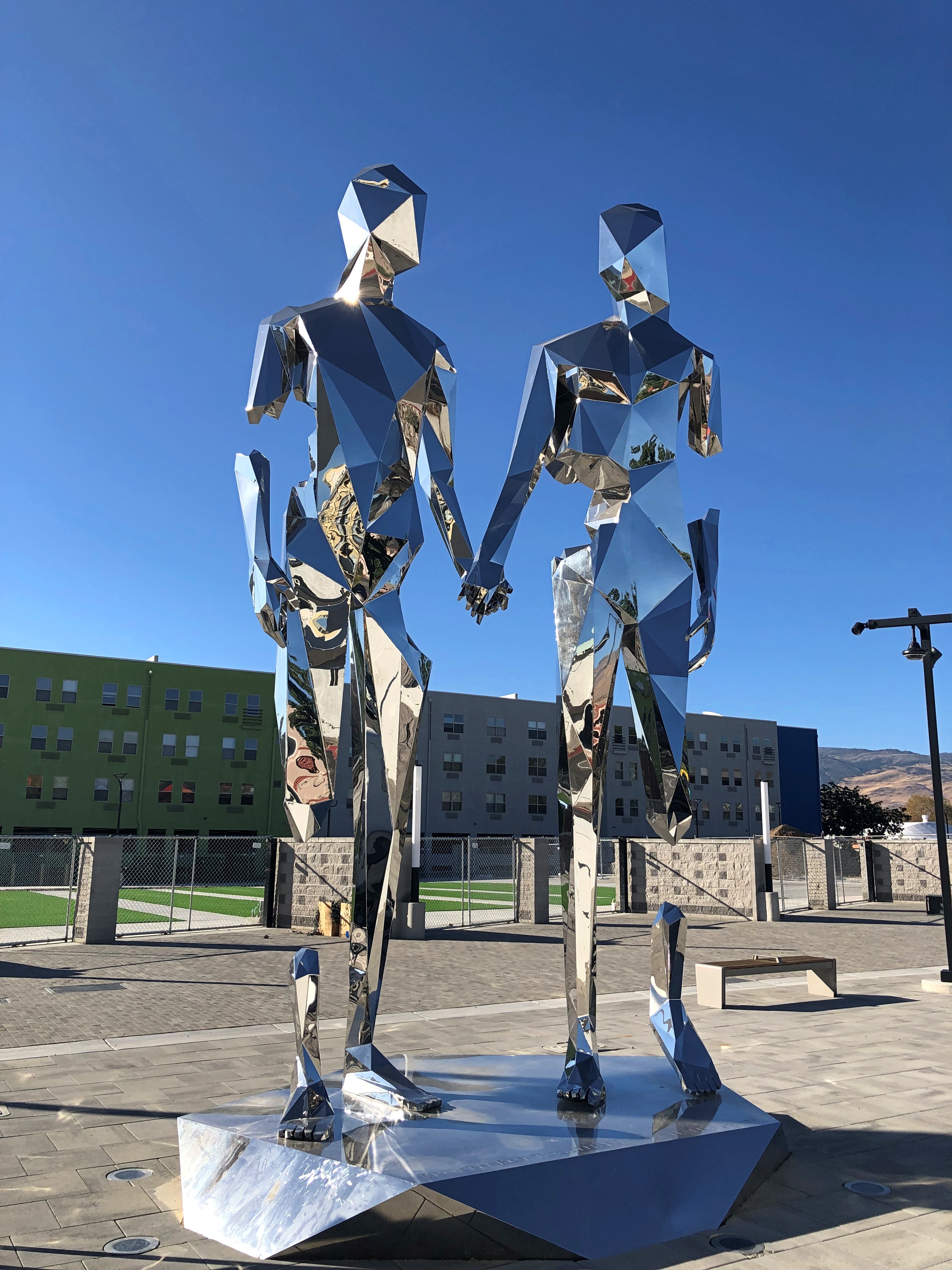
Including vintage Reno neon, or maybe close-replica homages.
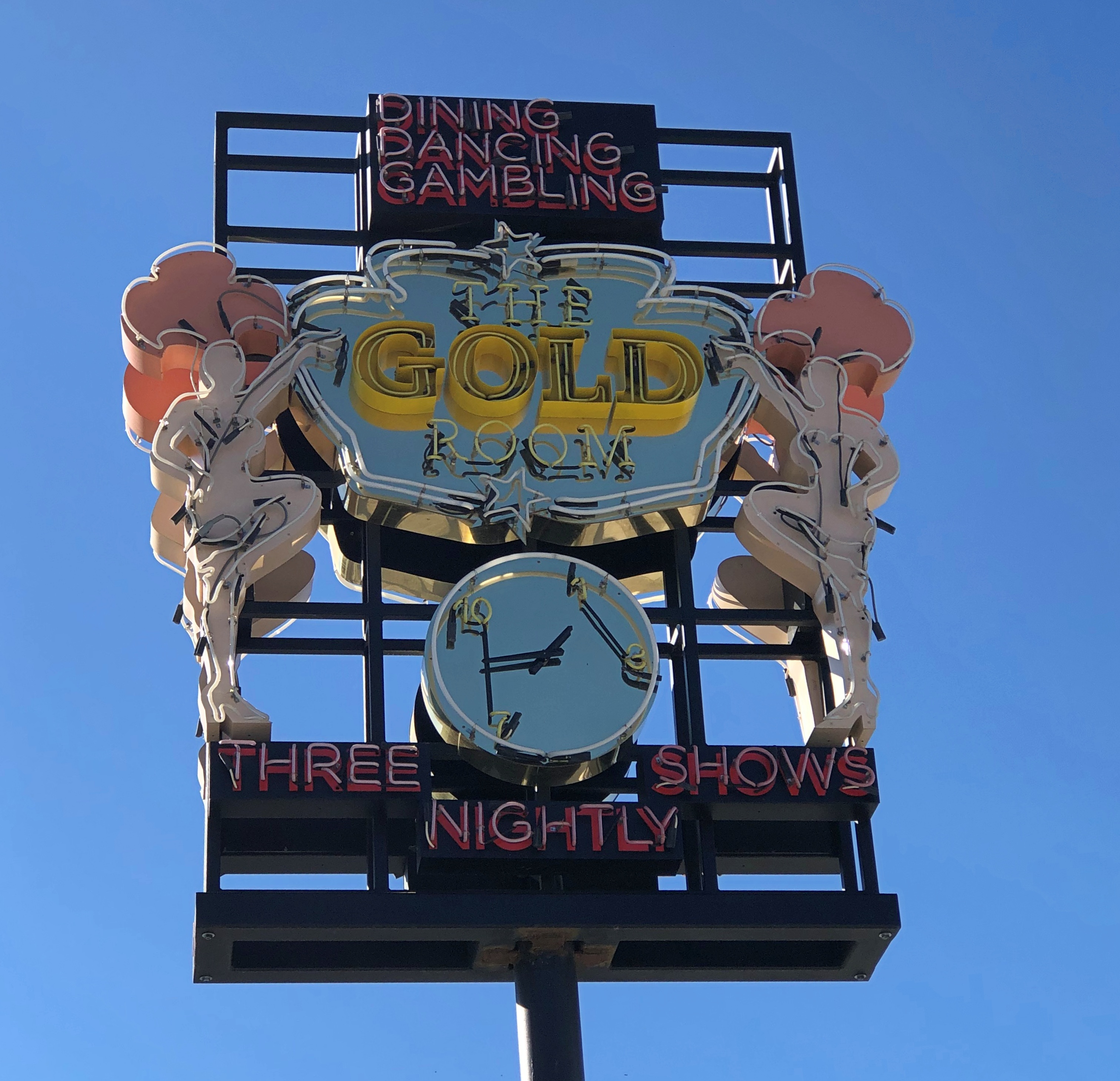
Speaking of apartments, this property in downtown Reno has the look of a 2010s adaptive reuse. I checked, and it is. It used to be a motel. The loss of an SRO property? Maybe, but I didn’t know there was much of that left.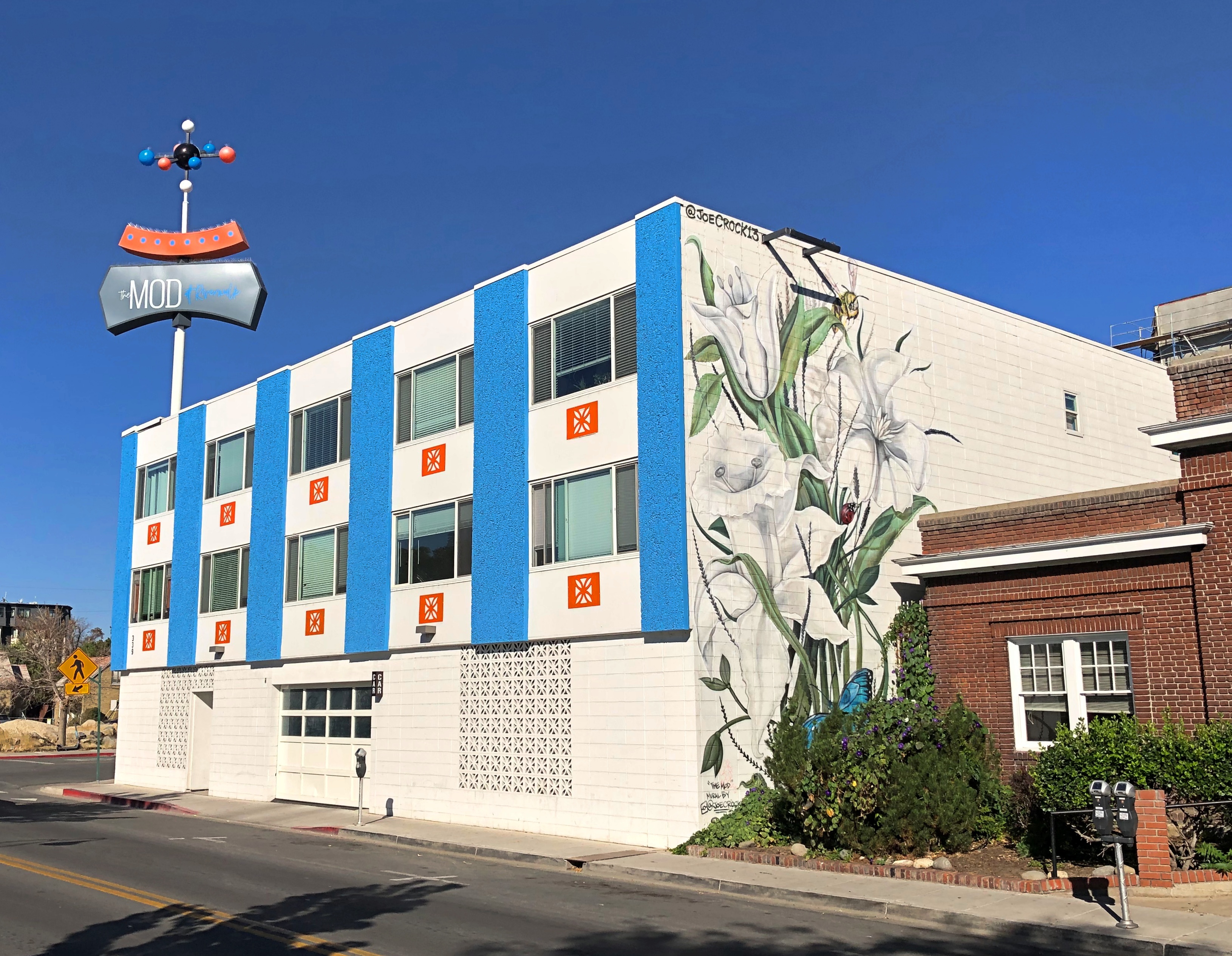
Now it’s an “upscale micro-unit living facility,” to borrow a phrase from Northern Nevada Business Weekly. I checked again, and its rents range from $1,100 to $1,700 (the low end of the range is for about 250 square feet).
Could have done an entire posting of name plates on vintage cars at the National Automobile Museum. The familiar and the less familiar.

That last one’s an attention-getter. You can find it on a Krit Motor Car Co. auto, made years before jackbooted lowlifes shanghaied the symbol.
The Battle Born Memorial in Carson City, dedicated to fallen soldiers from Nevada.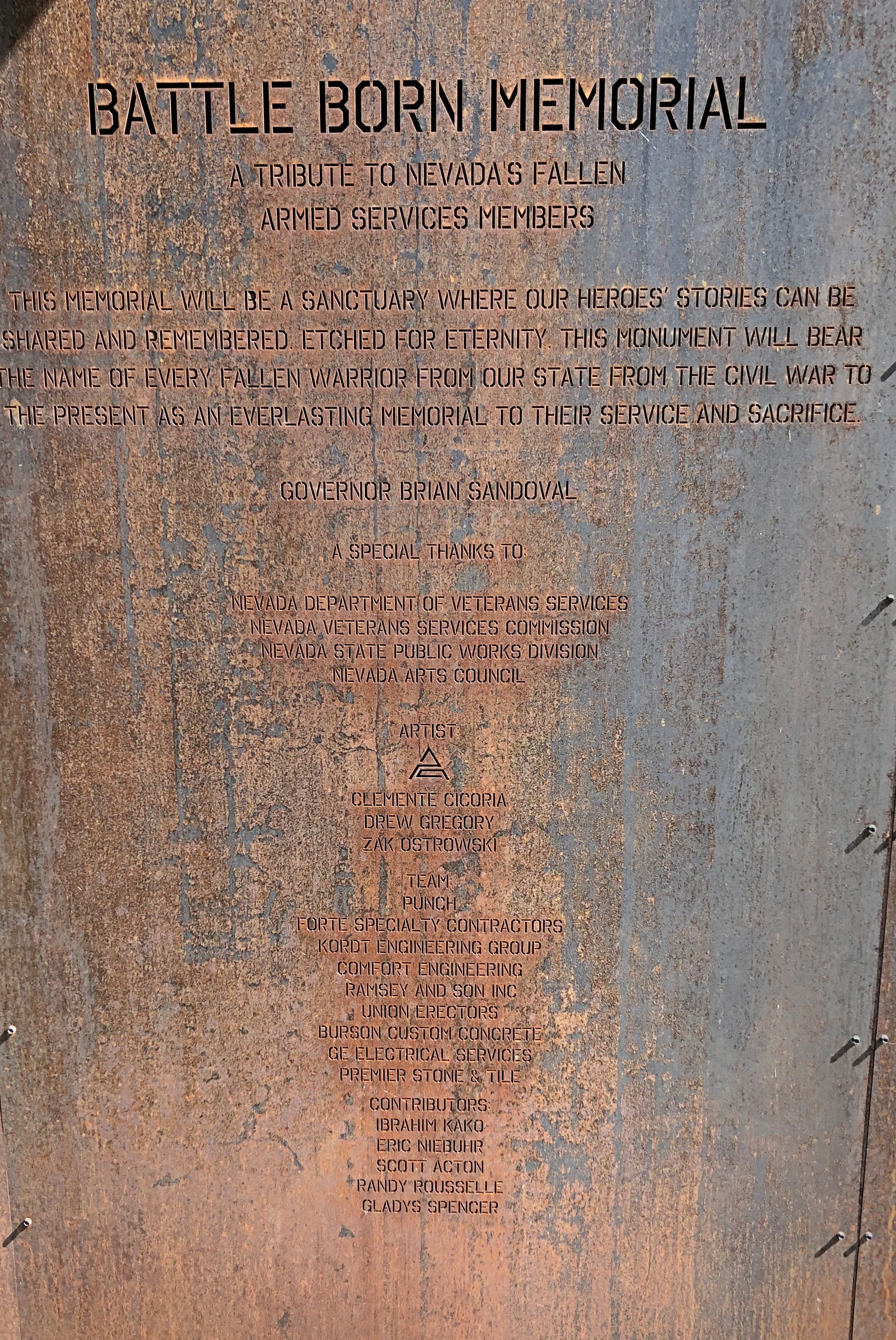

At first I thought, iron? True, iron is at the heart of modern war. But as soon as I was inside, and looked up, I realized how fitting the material is. A remarkable memorial.
Especially when you gaze up at it.
The names of the fallen are inscribed there.

Eight hundred and ninety-five names, I understand. Punch Architecture did the design, which was completed in 2018.
Later I looked up Battle Born. I didn’t know that was a nickname for Nevada. Everyone’s heard Silver State, but not Battle Born State. I puzzled on that a while, but eventually realized that when Nevada entered the union (1864; Lincoln needed another two Senators), it joined the fight, as a state, to keep that union together.
A much smaller metal-work, underfoot in Carson City. Good to know I’ve been on the Kit Carson Trail.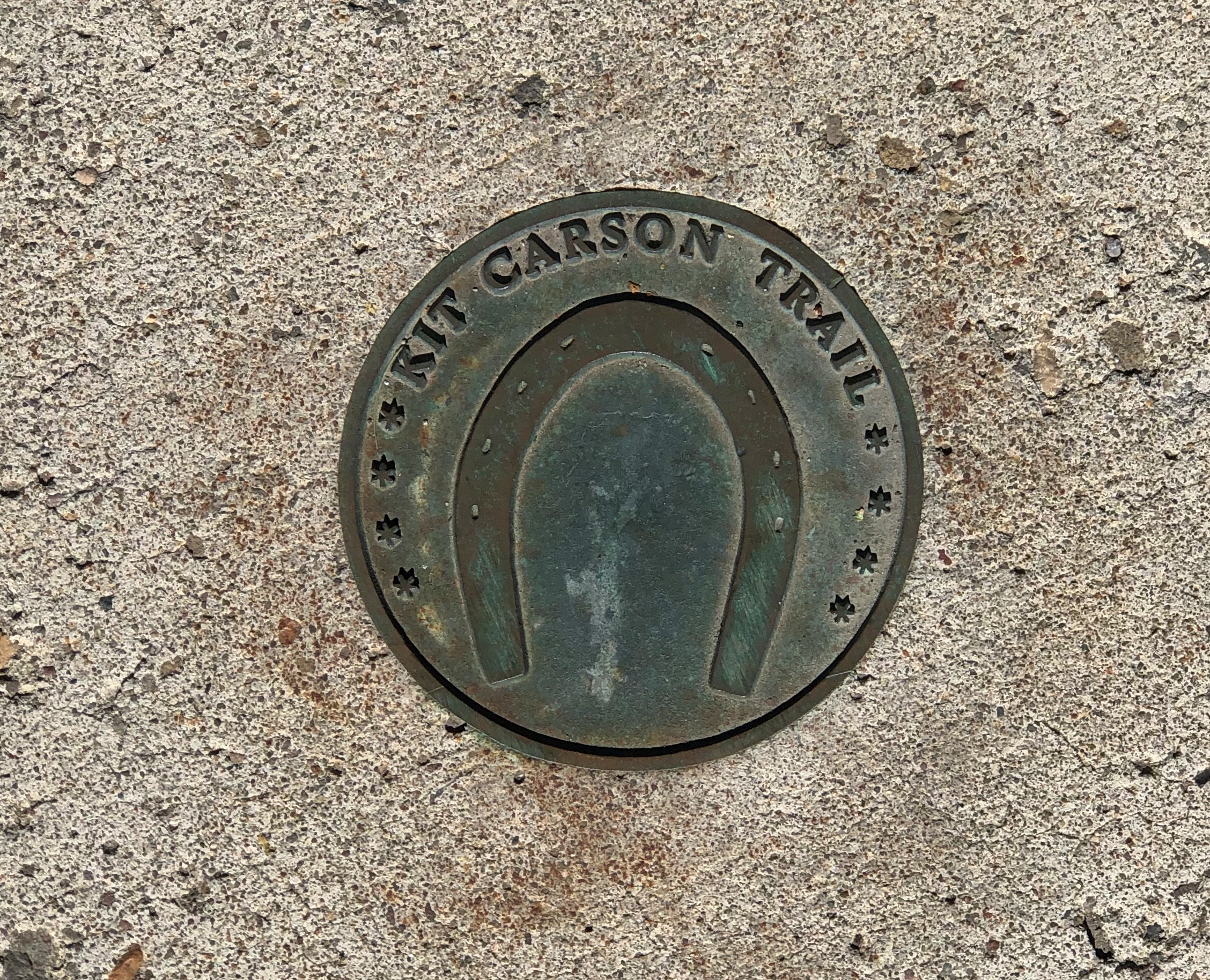
Underfoot in Reno.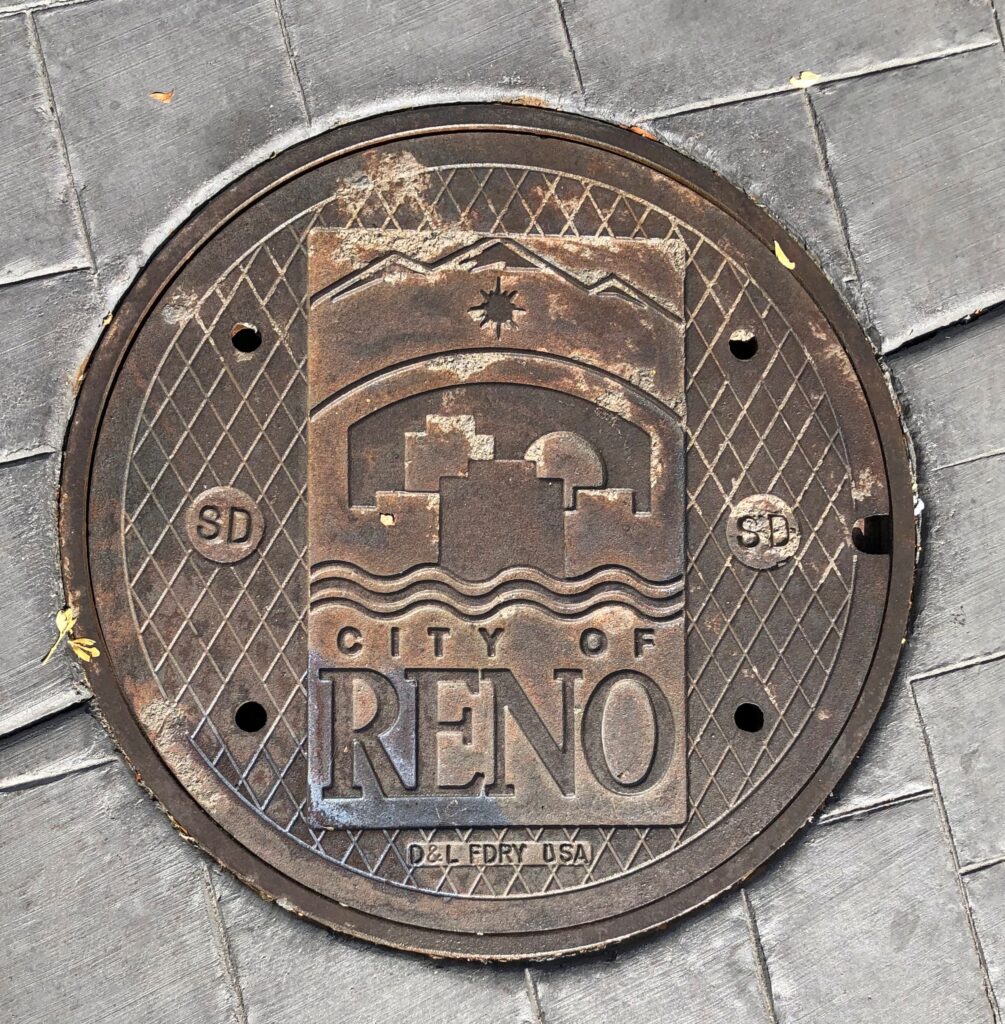
On the road to Virginia City.
The drive out from Virginia City to I-580 is along Nevada 341, and it’s a winding drop of a drive through arid landforms. This snip from Google maps illustrates the winding-est part of the road, called Geiger Grade Road at that point. The entire drop is from more than 6,100 feet above sea level at Virginia City to Reno’s 4,500 feet.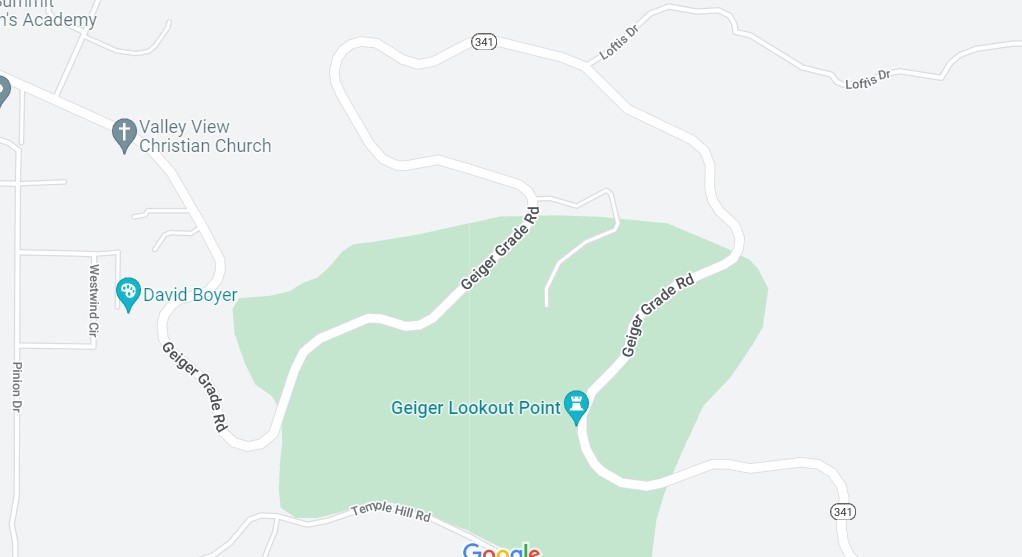
Light traffic on a sunny weekday afternoon. A fine drive if you’re paying attention. Almost car commercial driving.
This instead of a real map.
No, California. Don’t do this. It’s false economy. I don’t know how, I just know that it is.
I figured out my way around without a gizmo map. I even found a spot a few hundred yards from a parking lot, and a little off a nearby trail, where I could sit in the sun for a few minutes, and listen to only faint sounds. Almost as quiet as Joshua Tree or Big Bend NPs.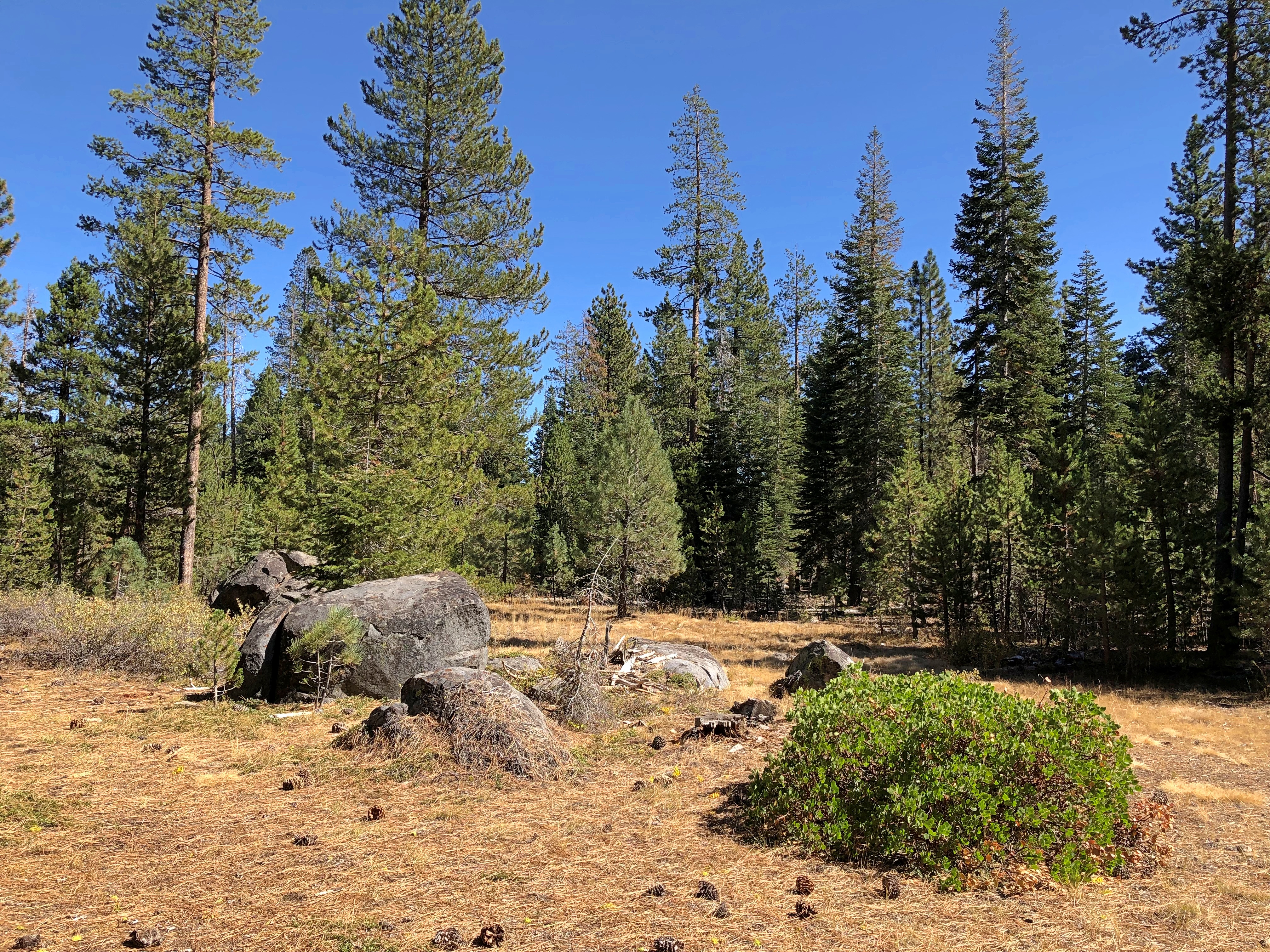
The Hotel Charlotte in Groveland, California. Now a hundred years old, it’s the kind of place that gives you a brass key, and lets you know there’s a fee for replacing it. Basic and comfortable, though the most expensive place I stayed on this trip; you’re really paying for near access to Yosemite NP.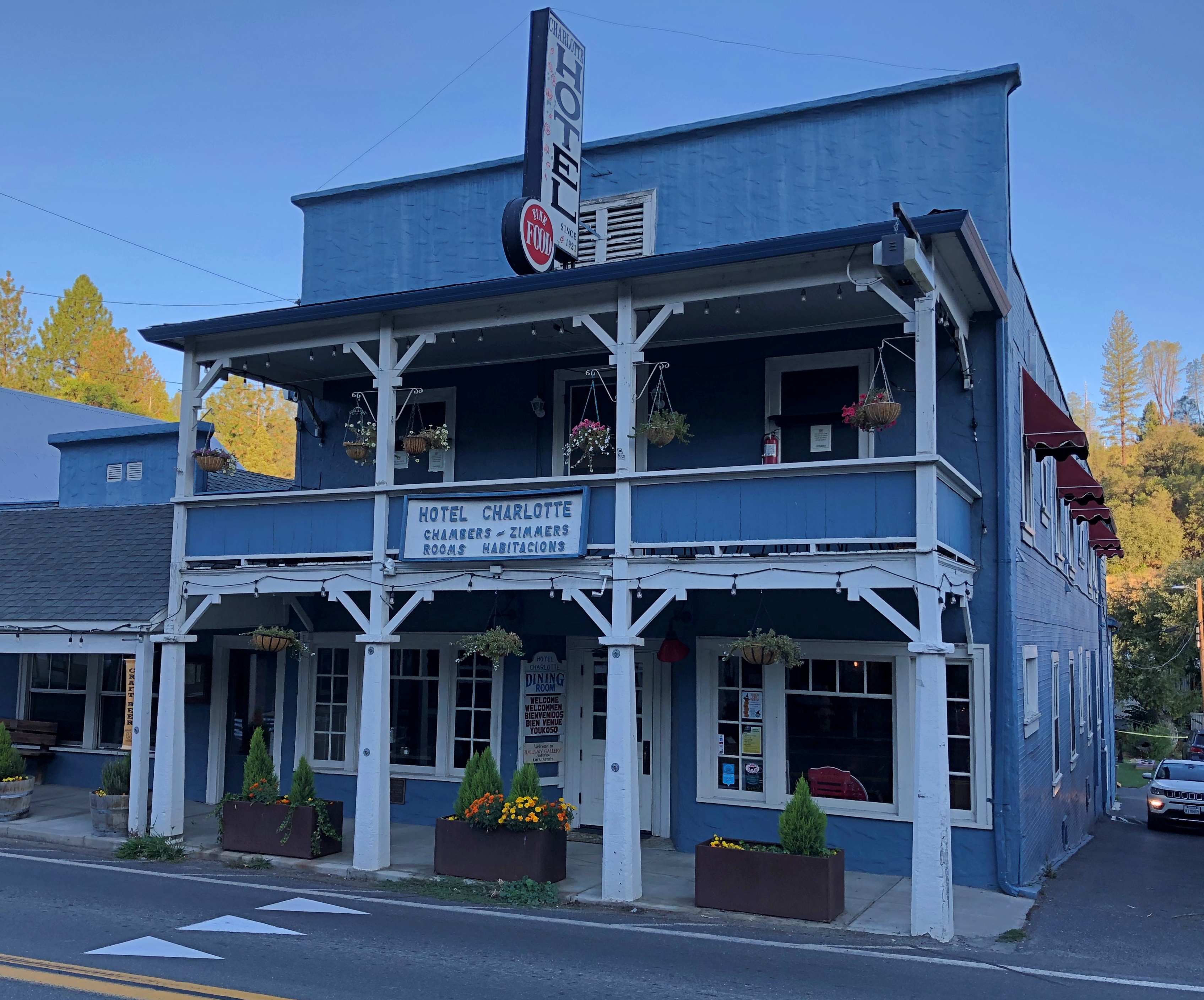
Main Street in Groveland (California 120), just after dawn.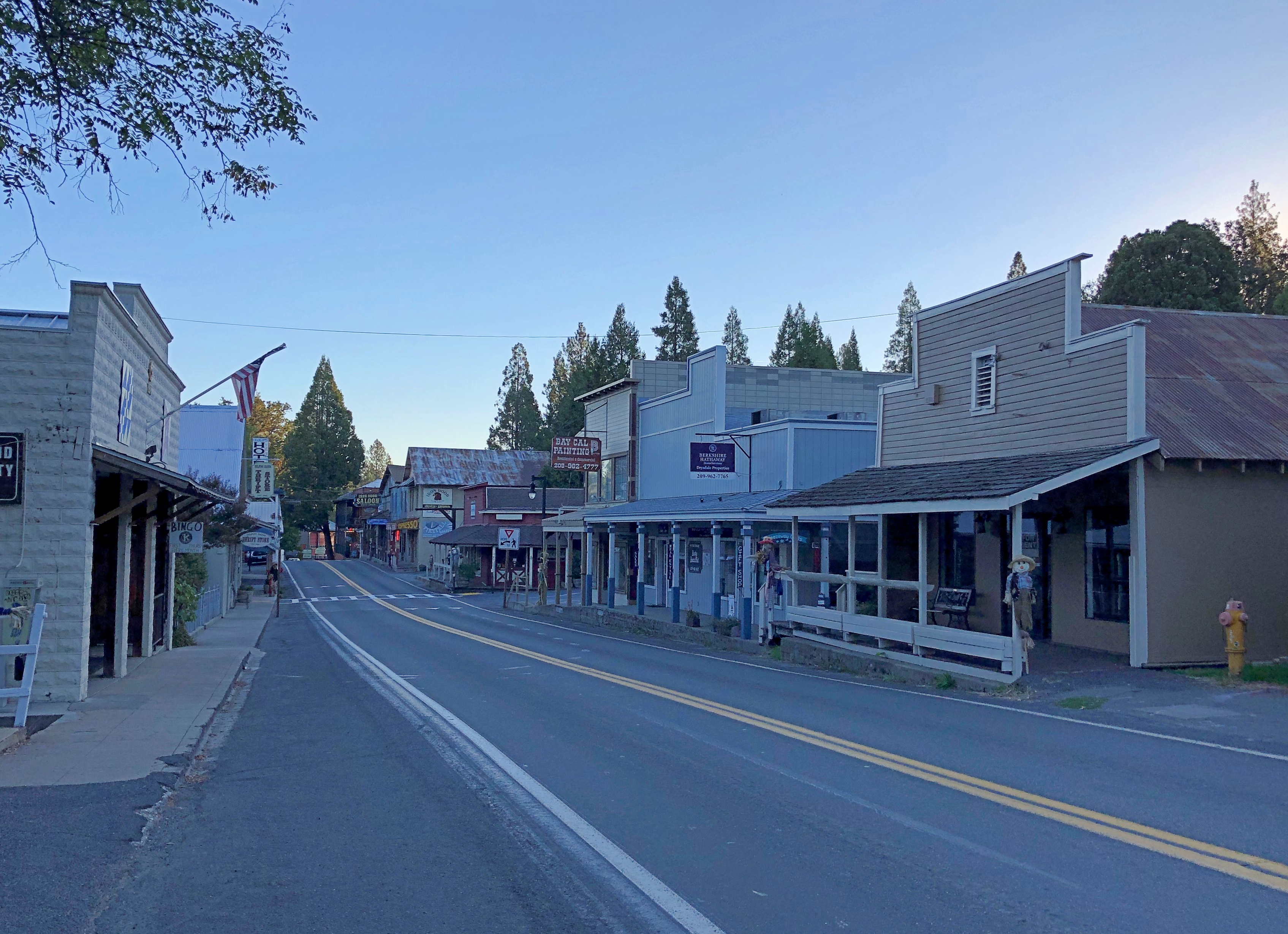
A few more images. Such as in Sacramento.
I had to look up lumpia: spring rolls found in the Philippines and Indonesia. And northern California, it seems. Too bad I wasn’t hungry. Also, it was closed. Not long after, I saw a Balinese restaurant in Old Sacramento. Still wasn’t hungry. Damn.
I was driving to the last place I was going to stay in Sacramento on the late afternoon of October 7, and I got a little turned around, wandering some neighborhood streets before the inevitable moment when I pulled over to consult Google Maps.
I chanced on this place.
What a garden it is.


An extravaganza of roses.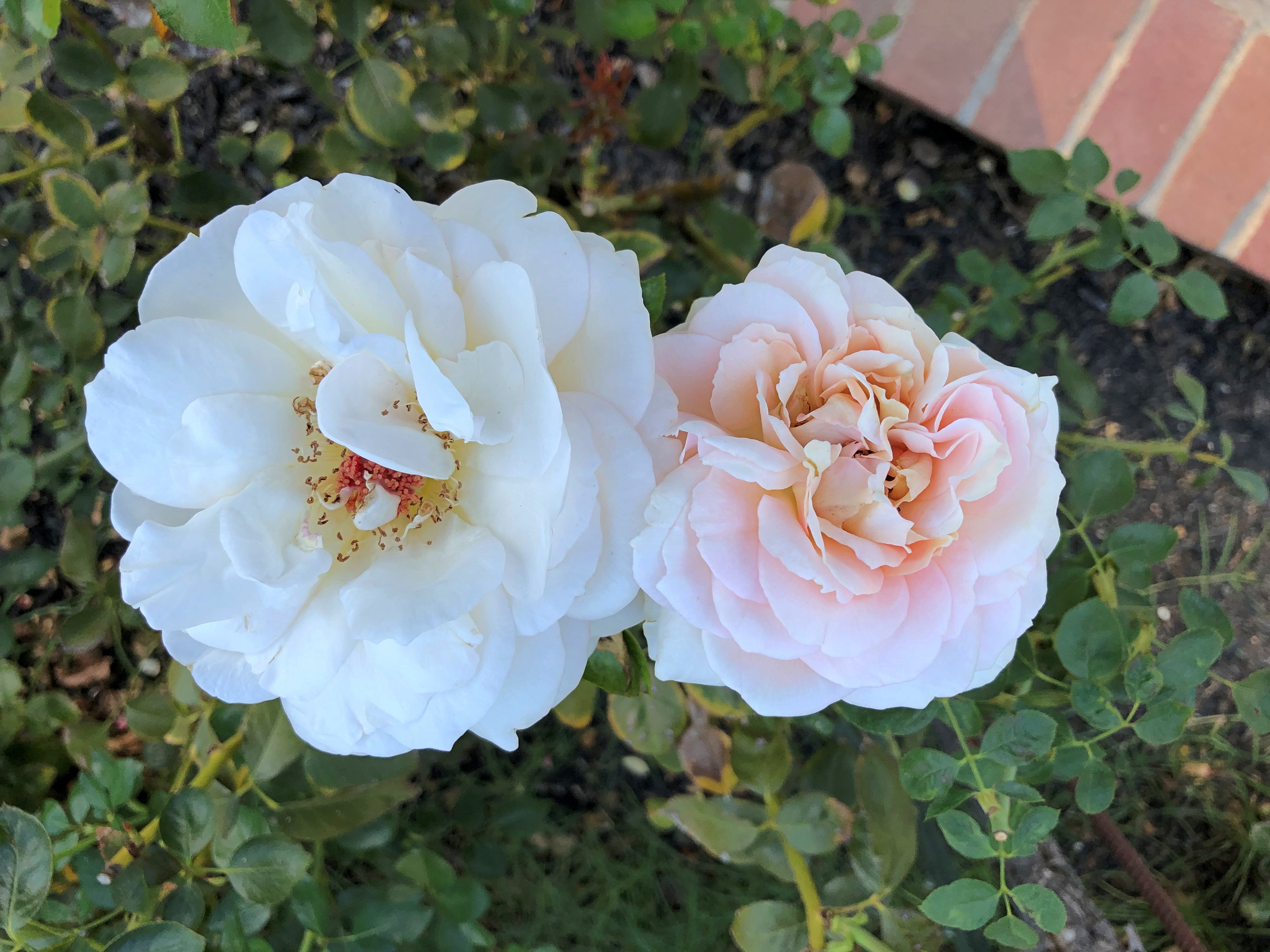
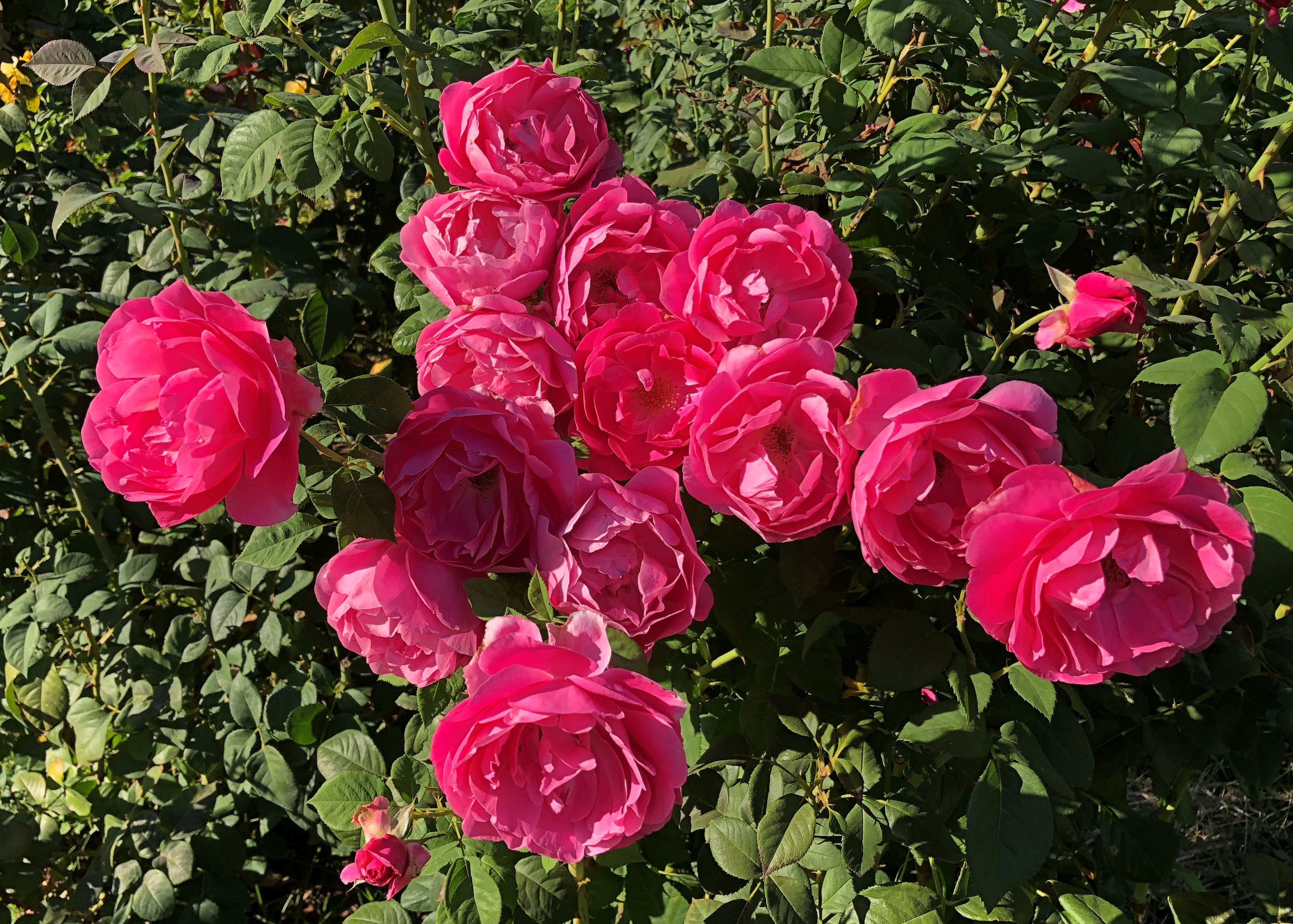
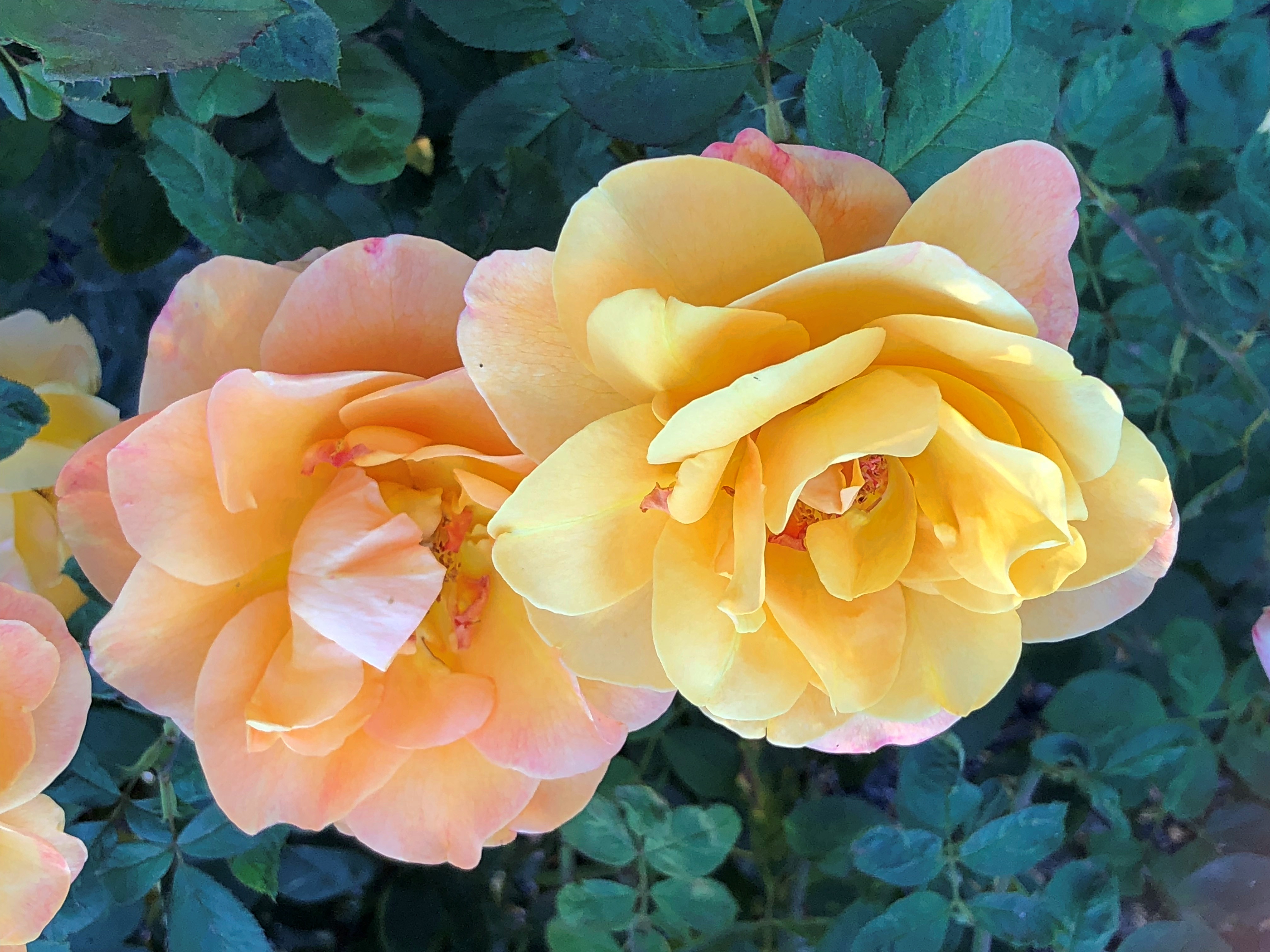
Go in the garden and ask the rose its meaning.
